Game OVA Season 2: Episode 4 — Natsuki Crisis
By Mento 1 Comments
I've been looking for something to help me through the hot 'n' humid summer months and what better way to beat the heat than to stay indoors watching questionable anime and playing questionable games based on said anime? For a rundown of this little project, check out the first episode.
The Property
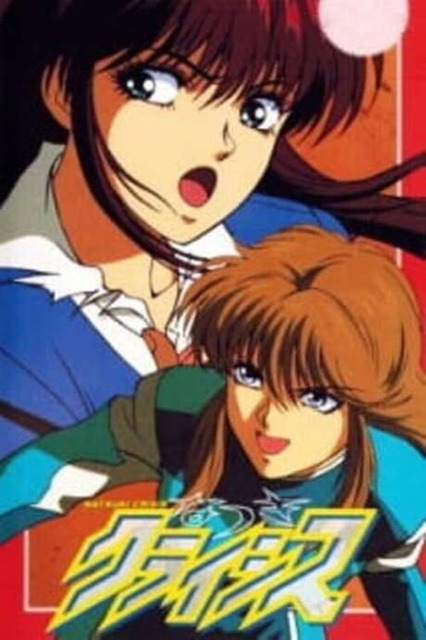
Natsuki Crisis is a martial arts action manga created by mangaka Hirohisa Tsuruta and was published in Business Jump—the young adult-focused branch of Jump that also carried Riki-Oh and Battle Angel Alita, among others—between 1990 and 1997, then later published across 18 tankoubon (i.e. trade paperbacks). It follows the titular heroine Natsuki Kisumi, considered the top karateka in her high school, who must frequently use her prodigious martial arts to keep bullies, criminals, fellow martial arts students, and overly affectionate suitors at bay. Eventually, she meets a powerful rival in Rina Takaoka, a gifted wrestler, and gets caught up in Rina's dark past at the elite but sinister Jotoh Academy.
Natsuki Crisis eventually spawned two OVA and a video game, which is the perfect amount of multimedia nonsense for a project like this. Both the anime and game were produced in the middle of the manga's run (1994 and 1995, respectively) but I don't think either got particularly far into the story.
No real reason behind this choice other than switching up video game genres—most of what I've covered so far have produced side-scrolling action games—and wanting a relatively smaller project; I've been contemplating some slightly bigger names for the final two episodes for this season of Game OVA that might take more time to put together.
The Cast
- Natsuki Kisumi: A student of Goujyu High who practices martial arts for the fun of it. She's considered the most gifted student in the school's karate club but struggles to find anyone who wants to take her on, partly because she's the only girl and dudes have this whole thing about getting their ass handed to them by a woman, which is why she's glad to meet a fellow female martial artist in new transfer student Rina.
- Rina Takaoka: A transfer student from the martial arts-focused Jotoh Academy. Despite being a powerful wrestler she left the school for personal reasons she keeps close to her chest. A loner by nature, she takes a while to warm up to the gregarious Natsuki.
- Masaaki Yanagisawa: The captain of Goujyu High's karate club and Natsuki's upperclassman, who she admires a lot. A quiet but kind giant of a man, Yanagisawa was granted the opportunity to train at Jotoh but opted for Goujyu instead. Nurtures Natsuki to bring out her potential as a future champion but doesn't appear to harbor any romantic attraction towards her.
- Naoya Hondo: A fellow student at the karate club and something of a self-styled playboy that aggressively pursues any girl that piques his interest. Despite a rocky first impression in the anime he eventually becomes something of a minor comic relief character.
- Akira Kandori: A former associate of Yanagisawa and one of Jotoh's strongest fighters, Akira is a judo champion with an almost superhuman level of strength. She holds a grudge against Natsuki and Goujyu High and is determined to end them.
The Anime
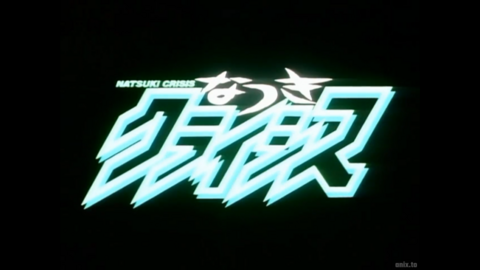
Natsuki Crisis was adapted into an anime in 1994, with two half-hour OVA episodes produced in total. The perpetrators were once again our old friends Madhouse, one of the most well-regarded studios by fans of more action-heavy anime. We last encountered them with our episode on Devil Hunter Yohko, so be sure to check out that entry for a rundown of the bigger properties they're attached to past and present. Suffice it to say, this won't be the last time we bump into them.
According to Madhouse's own website, the co-directors of Natsuki Crisis were Koichi Chiaki and Junichi Sakata and the screenplay adaptation came from Mayori Sekijima. The only credit I could find for Koichi Chiaki is for Wild Arms, the PS1 RPG from Media.Vision, for which Madhouse assisted with the opening anime cutscene. This one, with all the whistling. Junichi Sakata, conversely, has many storyboard artist credits as well as a few director credits, mostly for the occasional episode of serial TV anime like Cardcaptor Sakura and Urusei Yatsura. Even though he started in the early '80s, the dude's still working as far as I can tell: his last credit on IMDb (as of writing) is for the absolutely bonkers (and violent (and amazing)) Akiba Maid War from last year, which had some pretty spectacular fight scenes. Mayori Sekijima's similarly worked on many anime adaptations, and even co-authored a JoJo's Bizarre Adventure light novel. He was also the main writer for Samurai Pizza Cats, but I'm guessing he had little to do with the wackiness the English localization team came up with. Man, was that cartoon great. (They had a NES game too, right? Hmm...)
Anyway, we're here to watch a tiny anime woman kick a 200lb dude through a brick wall like it's a Joss Whedon (Joss Weebin'?) production—though hopefully one with less verbal abuse—so let's get on that already:
Episode 1
Quickly setting up the premise of the manga here: Natsuki is the star of her school's karate team, her only match being the physically imposing (to the extent of "how is this dude a highschooler?") team captain, Yanagisawa. Late to her morning classes, she interrupts the introduction of a new student: Rina. Placed next to each other, Natsuki attempts to chat with Rina but she proves to be cold towards her. Rina's then later accosted by the school's resident "creepy raper guy" Hondo who flirts with her while leading her to an abandoned laboratory for god knows what licentious purposes, but he gets more than he bargained for when she abruptly tosses his ass through the door. Though they continue to butt heads, Natsuki isn't giving up on befriending Rina and while inviting her to walk home together (even though Rina is wearing bike gear and heading to her parked motorcycle, which should be hints aplenty that she has no plans on walking), they're suddenly attacked by a dozen masked goons talking about Rina being a traitor to the Jotoh Academy "committee". I'm guessing they don't mean the student council. (Or, hell, who am I kidding? I've seen enough highschool anime to know they probably are.) After the goons are dealt with, including one that tried to pull some Vega claw shit (damn, I could be watching the SF2 anime movie instead), Rina also reveals the reason behind her unfriendliness: her martial arts have always caused people to distance themselves from her, including her ex Keiji whom she accidentally injured during a wrestling match.
Talking it out, Yanagisawa tells Natsuki that she's unlikely to defeat Rina in a friendly contest right now due to the latter's "catch-as-catch-can" wrestling style, which quickly robs an insufficiently strong opponent the chance to escape. Undeterred, Natsuki manages to win over Rina with her guile-free airheadedness and her genuine enthusiasm for martial arts (including how it's a cure for constipation somehow, and I sorely hope that isn't foreshadowing something) and the two finally become friends, or at least friendly rivals. Hondo also gets creepy again, this time towards Natsuki, and likewise gets physically injured for his troubles. Looks to be a recurring goof: how long can a highschool boy's libido win over negative Pavlovian conditioning in the guise of extreme physical pain? At this rate he'll instinctively curl up into the fetal position every time he sees a swimsuit magazine. That's not the girls' problem though: instead, a new heavy from Jotoh called Daigo has completely trashed Rina's bike—just absolutely gone Street Fighter II bonus round on it (hey, I could be watching the SF2 anime movie instead)—and left an incredibly convincing threatening letter supposedly signed by Natsuki that calls Rina "insolent". This vandalism happens while Rina was talking to Natsuki as she folded laundry for the karate club (a task that is cycled around members, she's quick to point out), giving her an airtight alibi. Naturally, Rina buys it immediately that Natsuki is behind all this, because I guess we need to end this first episode with the two of them fighting it out for real.
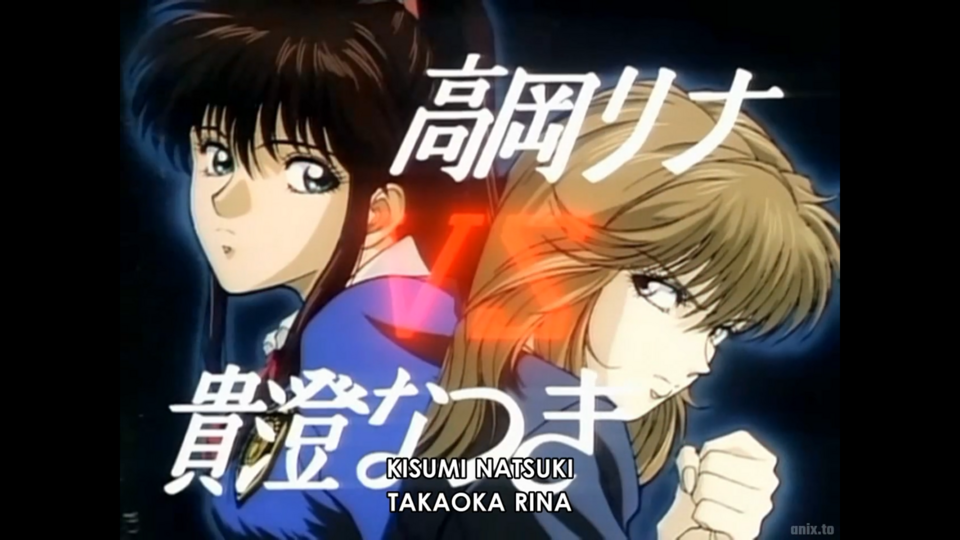
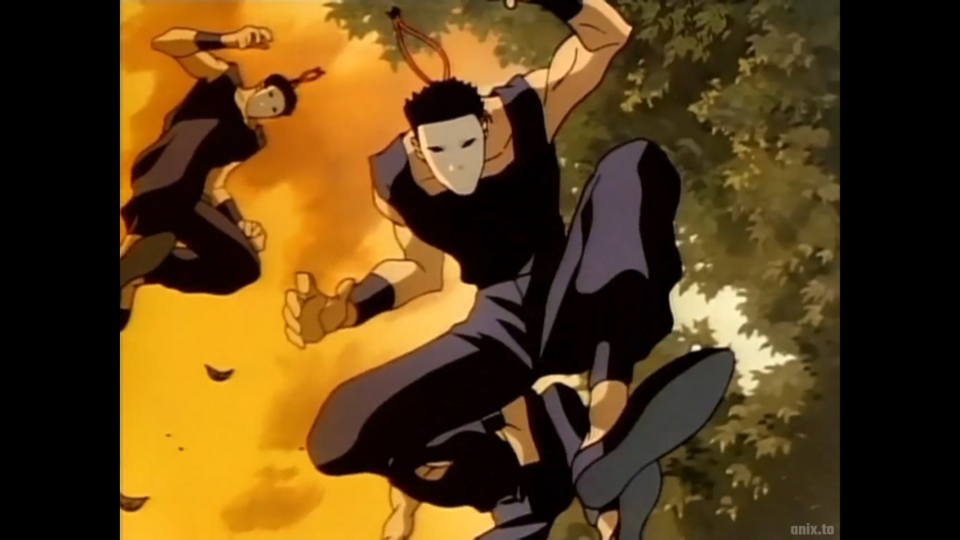
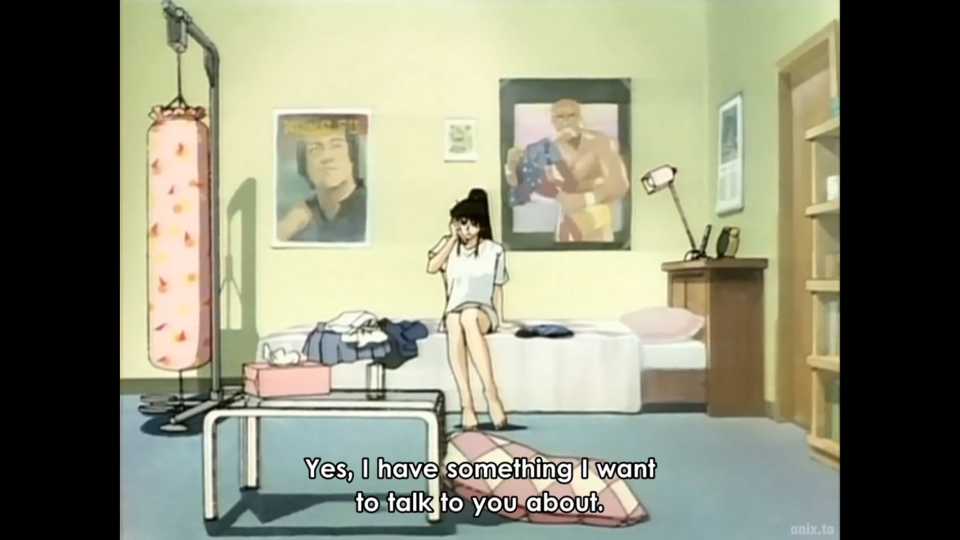
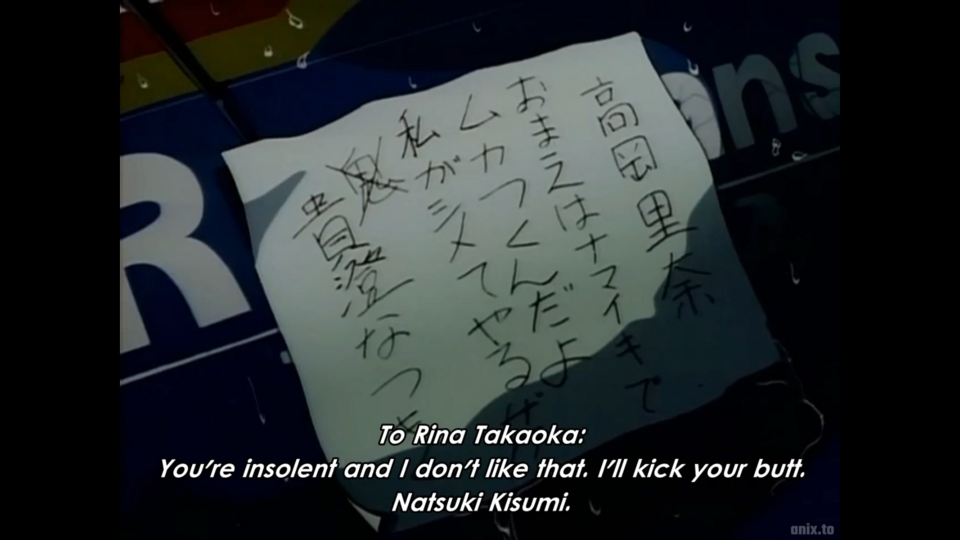
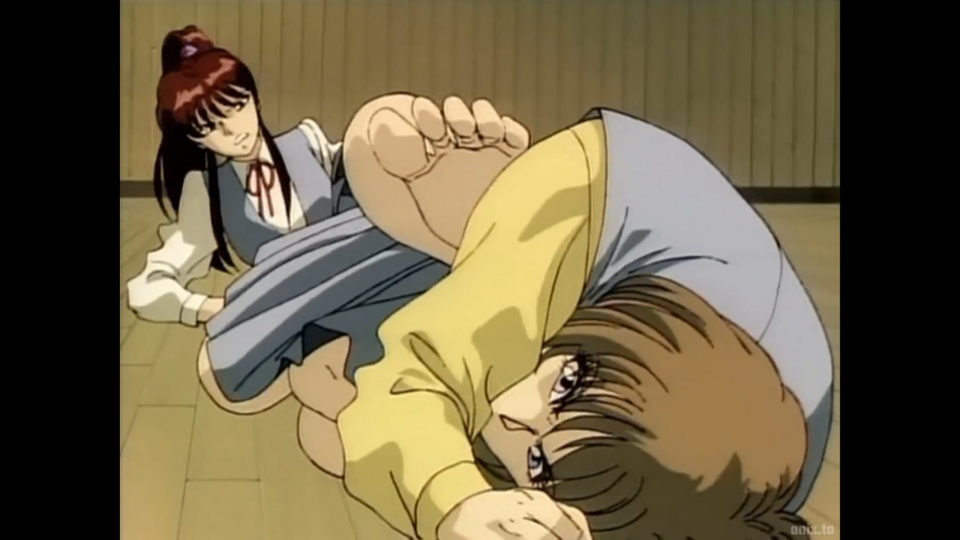
The bout that follows between Natsuki and Rina is, I believe, the answer to a question anime scientists have been asking for millennia: how much panchira is it physically possible to fit into a single fight scene? Evenly matched, and with Natsuki deflecting all of Rina's joint locks and holds, the two eventually run out of steam and call it a draw. Daigo then shows up and, in what I imagine is an uncommonly forthright mood for this goofy heavy, decides to let Rina know that he and some goons softened up Keiji before his match with Rina by stamping on his thigh and then forced him to fight at full strength, leading to his injury, in much the same way Daigo just tricked Rina into having Natsuki soften her up for this retribution attack from this shadowy committee of theirs. An incensed Rina then beats the everloving snot out of Daigo (I guess he's not as good a fighter as the other Daigo) with Natsuki supplying the final hit and the two pull a happy victory pose, their friendship repaired, as we fade to black for the credits. This... was a surprisingly uneventful thirty minutes given OVAs tend to be faster-paced than most. The fight scenes were at least plentiful and decently choreographed: we saw Natsuki vs. Yanagisawa, Rina vs. Houdou, Natsuki and Rina vs. a bunch of Not-Vegas (Fake-gas?), Natsuki vs. Rina, and Rina vs. Daigo. That's like half a fighter game campaign right there. Beyond all the brawling, though, there wasn't much runtime left over to invest in characters and story besides including a relatively healthy appreciation of martial arts—don't use it to hurt people, do use it to stay fit and feel the satisfaction from comes from improving oneself—and a cute, platonic central relationship between an easygoing airhead and an emotionally-wounded young woman letting go of her trauma by allowing herself to enjoy fighting again. Also zero sexual assault, which is a marked improvement over Devil Hunter Yohko (though sadly "attempted sexual assault" is still >0. Thanks, Hondo).
Episode 2
Episode 2 starts by introducing a new character: Akira Kandori, a judo champion from Rina's former school of Jotoh who shows up out of nowhere and lays out both Rina and Natsuki in a rainy playground. Yanagisawa shows up to carry Rina and Natsuki away to get patched up, but Kandori promises to challenge Natsuki again in the near future. It turns out that, while Jotoh continues to send its strongest fighters to put the "traitor" Rina in her place, Kandori's true target is Natsuki due to her being the beloved kouhai and protégé of Yanagisawa. Both Kandori and Yanagisawa belonged to the same Shinto Institute of martial arts—both were considered the school's "nukes" (which I think is a term the localizers decided on, as I'm not sure the Japanese tend to throw that word around lightly)—but Yanagisawa backed down and chose to join a different highschool, leaving Kandori heartbroken. As Kandori is like six feet tall, powerfully built, and possessed with the special throwing move "Mountain Storm", Natsuki undergoes some strict training with Yanagisawa and Hondo (who I guess is a minor protagonist now, and not a sex creep (or not just a sex creep, I should say)) and is told to come up with her own winning move, her "Natsuki Special", for the edge she needs to win.
In a quiet conversation with Yanagisawa, Natsuki inquires as to why he didn't follow Kandori to Jotoh, given the school was better suited for training up-and-coming champion martial artists. Yanagisawa pulls some Ryu shit (as in, the SF2 character (man, I could be watching the SF2 anime movie instead)) and explains that the next step on the road he was on would mean becoming able to physically tear a dude in half (paraphrased) and maybe his martial arts doesn't need to be that much stronger than it already is. As long as he can win the occasional martial arts championship and take the tops off jars of pickles, he's satisfied with his current level of power. Kandori, meanwhile, did not want to limit herself and has now taken a dark path to the absolute peak of physical prowess; she's a dangerous opponent because she's determined to do anything to win. Meanwhile, Natsuki's strength derives from winning without ever badly hurting her opponents, since for her the point is to have fun and challenge herself: an approach Yanagisawa admires far more than Jotoh's "victory at all costs" philosophy. Because the show is threatening to get too introspective and serious, Daigo rolls by in a palanquin carried by those masked weirdos on a suburban street in the middle of the night, and the pair realize that Rina is their target and pursue the group to Rina's home. They stop the group before they do... something to the sleeping Rina, and Natsuki chases after Daigo only to get caught in his trap: the coward brought a katana to a fistfight. Just before he can land the killing slash, Yanagisawa intervenes to take the hit and Natsuki watches in horror as her senpai is impaled by Daigo's katana.
What follows is something I'm still struggling to put into words. Not the heroic death of our male lead, but that Natsuki fires off an honest-to-goodness hadoken to save Yanagisawa who has, it is quickly revealed, somehow caught the blade in mid-air and is actually perfectly fine. So I guess that's where we're at now. Natsuki has her "Natsuki Special" and Daigo goes flying several feet and into a canal. Not to be outdone, we're shown that Kandori's training has reached superhuman levels as well, taking an armored kick from a karate champion colleague right to the mid-section no worse for the wear. Also this pink leotard she's now wearing really is something, and that something is "the 1990s". She and a pack of Jotoh goons then show up the next day at Natsuki's Goujyu High all wearing matching M. Bison uniforms (boy, I could be watching... well, you get it) for the maximum intimidation factor. Rina attempts to intervene, still thinking this show is about her, but is quickly defeated (and maybe killed?) by Kandori's Mountain Storm. Truly pissed, Natsuki shows up to get serious for the first time and the fight scene is underway. This fight is truly spectacular: Kandori at one point giant throws Natsuki through a window and then destroys the outer wall to close the distance. Taking the fight to the school roof, and resorting to cheap tactics to stay in the fight despite Kandori's punishing hits, Natsuki's almost done but Yanagisawa shows up to remind her of her own style: "Fight, and let live". Kandori asks if this is a new technique, and I'm curious how Jotoh still has any students left if they've all been taught to kill off their opponents, but Natsuki herself claims that her martial arts is meant to save herself and others and never for seriously harming her opponent. After Yanagisawa basically confesses to Kandori that he wished she could've joined him at Goujyu High to study this gentler form of martial arts, Kandori decides to finish off Natsuki with a Mountain Storm but is countered instead with the Natsuki Special, which blows Kandori straight off the roof and onto (and through) the gymnasium roof about 50 feet away. I'm glad this show is not prone to exaggeration; it's refreshing to have an anime that treats martial arts with a grounded sensibility. I'm also glad that fireballing an opponent so hard they fly off a highschool roof doesn't count as "using martial arts to hurt people". Really, excellent constraint all round. (I should also point out that the sound effect that accompanies the Natsuki Special sounds like a laser rifle charging up. I guess don't try this at home?)
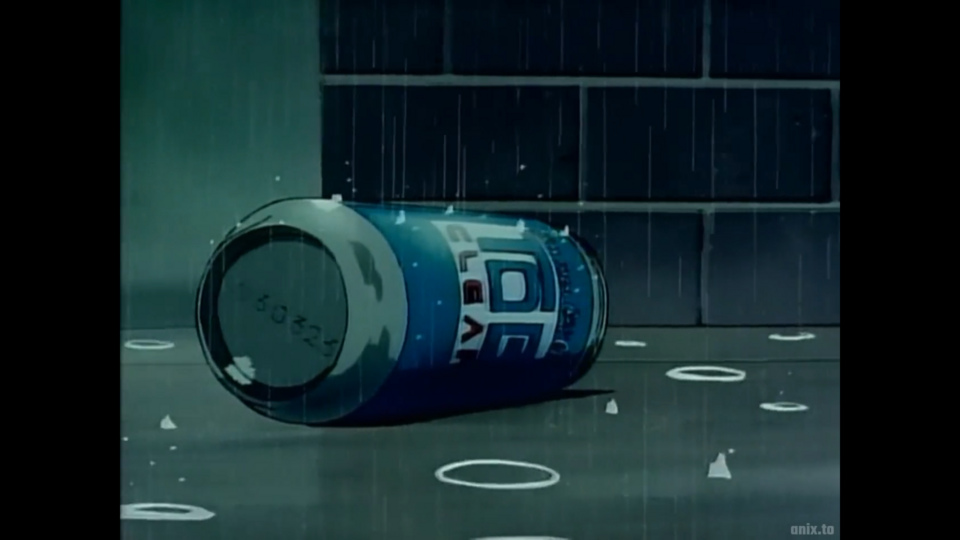
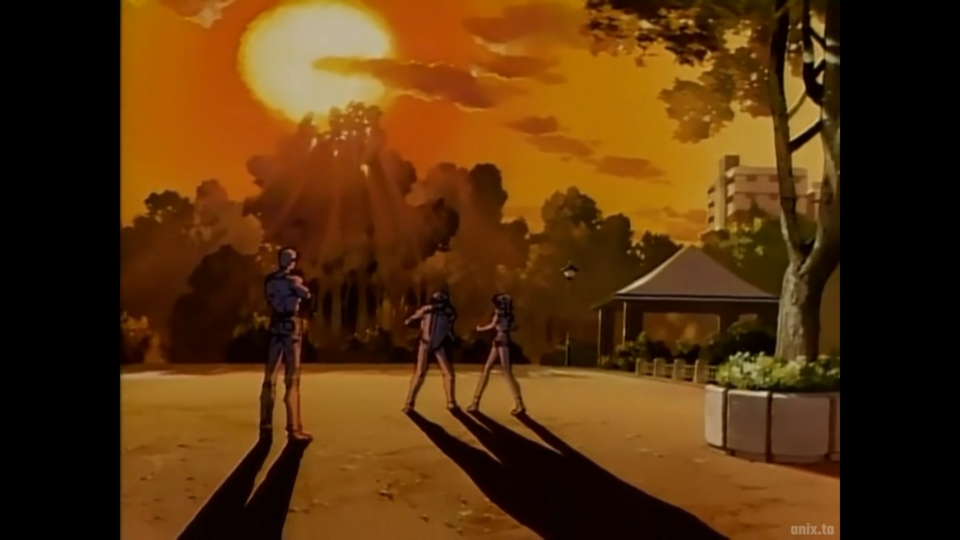
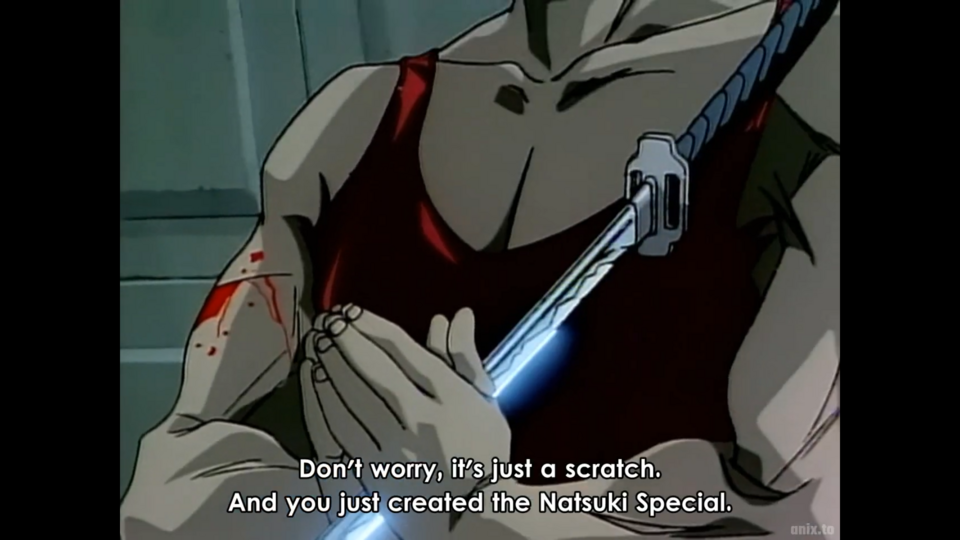
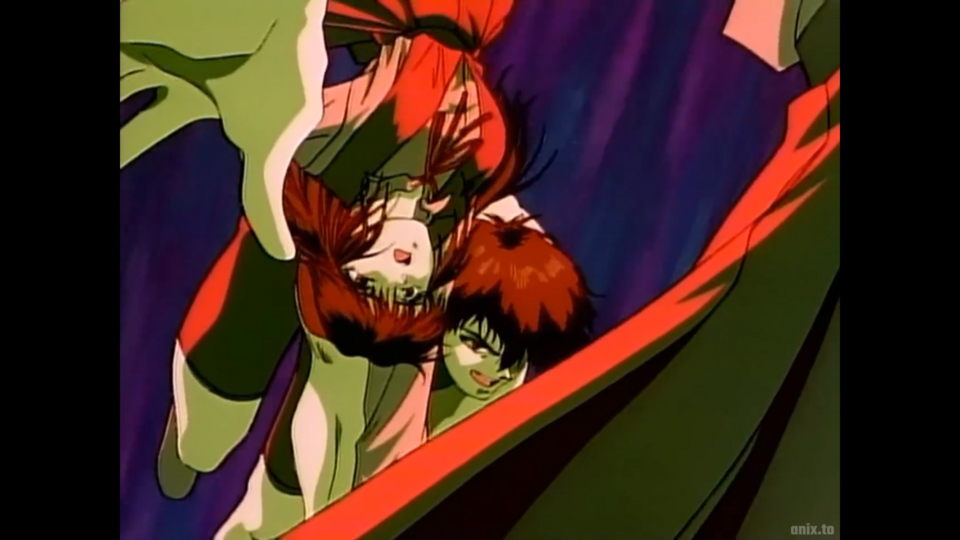
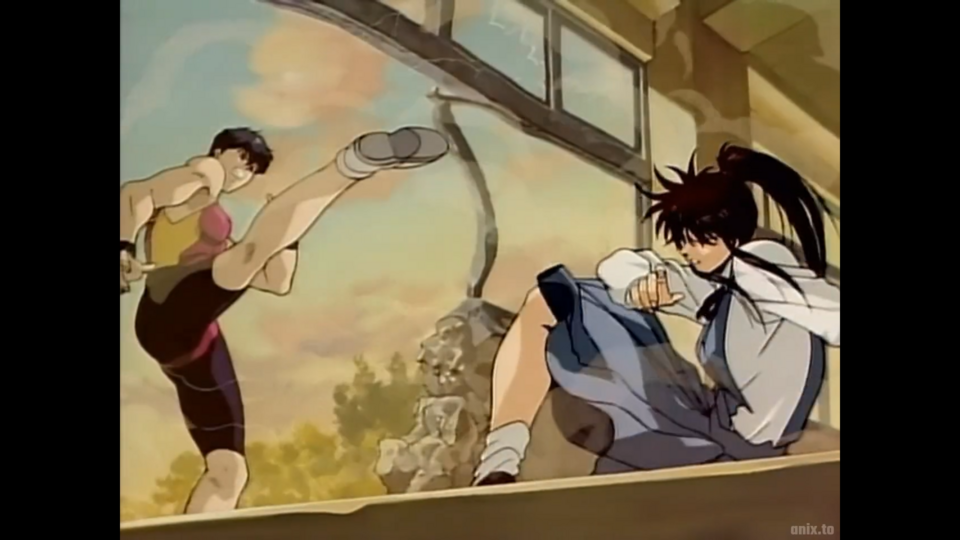
Anyway, that's basically the whole show. Natsuki cries over Rina's corpse but of course she's not actually dead and the two pull off another friendship fighting pose as we fade to credits for the second and last time. While the first episode ended with a preview for this one, there's no preview for a theoretical third episode so I guess Madhouse knew they were two and done for this series. The show (and presumably the manga) tries to bridge the gap between a semi-serious martial arts sports drama where multiple characters discuss the philosophies behind why they fight and a more fantastical and lighthearted martial artist highschooler action show where characters can suddenly start shooting off ki blasts and I'm not sure they quite pull off the delicate balancing act. I imagine future episodes would've given Natsuki and Rina even stronger and weirder opponents from Jotoh Academy to deal with, and Kandori was already bordering on Wonder Woman levels of physical might. By the way, we have no idea if Kandori actually lived through all that or not; I'm guessing she probably did since the whole basis of Natsuki's character is that she refuses to injure people, but that's kinda what I mean about the show's tone and sense of realism being all over the place. Rina asks what happened to Kandori and Natsuki gives her a thumbs down, so I guess that's as definitive an answer as we're going to get. All that's left is to see what the video game can tell us about this world of ludicrously strong highschoolers fighting each other over basically nothing.
The Game(s)
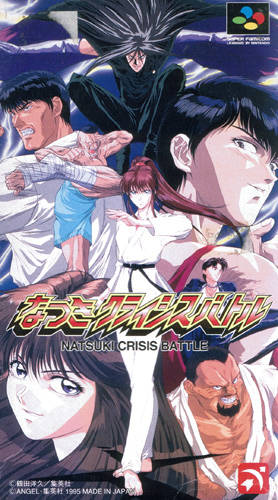
Given what we now know from watching the anime, there's really only two genres that would fit a property like Natsuki Crisis: fighters and brawlers. Natsuki Crisis Battle is in fact a SFC fighter; sadly, The Scientists Three never got around to applying the sweet science to it in their Ranking of Fighter series, so that task now falls to me and my absolute lack of chops when it comes to fighters. It features eight fighters total—five we've seen from the OVAs, three whom are manga-only—and six different stages, most of which are fairly standard like a suburban street at night or a corridor at Goujyu High but there's also a nightclub and a foggy construction site.
Natsuki Crisis Battle was developed in 1995 by TOSE on behalf of publishers Angel. TOSE is perhaps the biggest contract development studio in Japan: since the 1980s they've supposedly been responsible for thousands (the true number is a well-kept secret) of developed games for various studios, producing games of a variable quality level that (allegedly, though also logically) matches the amount of money and time they were given by their clients. The client in this case actually being Bandai: Angel was simply one of many labels they used back then. Take any anime licensed video game of the past 40 years and there's a solid-to-good chance Bandai was the one who commissioned it. It also means I don't have a lot of high hopes for a game that was already perilously close to kusoge level simply by virtue of being a SNES fighter not developed by SNK or Capcom, as Bandai tended to churn out these anime games by the truckload.
Still, though, a fighter should prove to be a refreshing break from all the platformers and side-scrolling shooters we've seen so far. Surely? Maybe I should actually play it first...
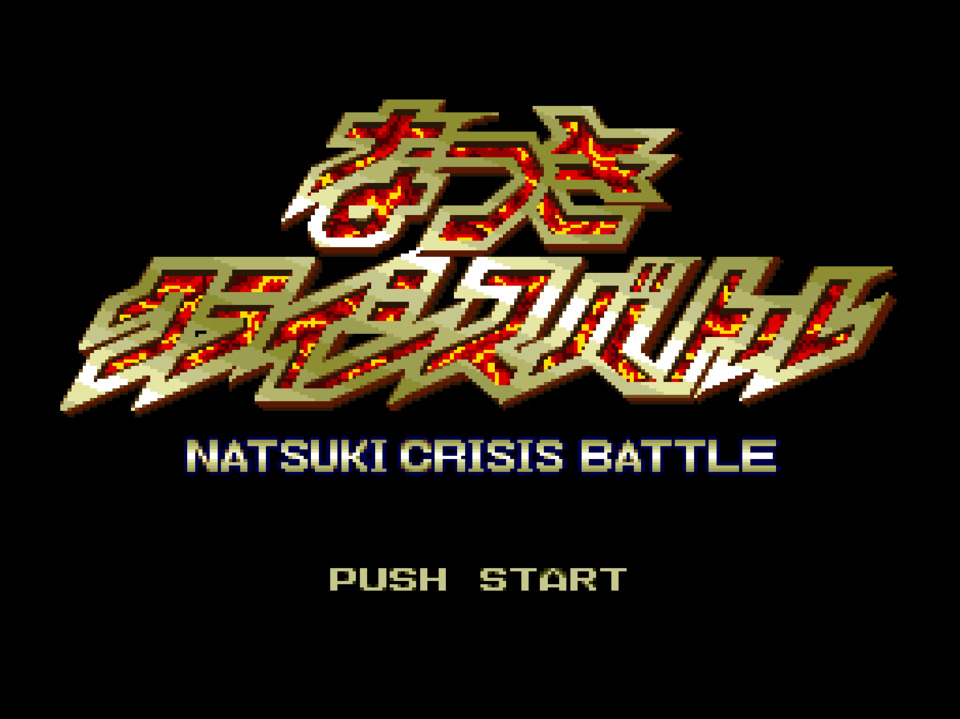
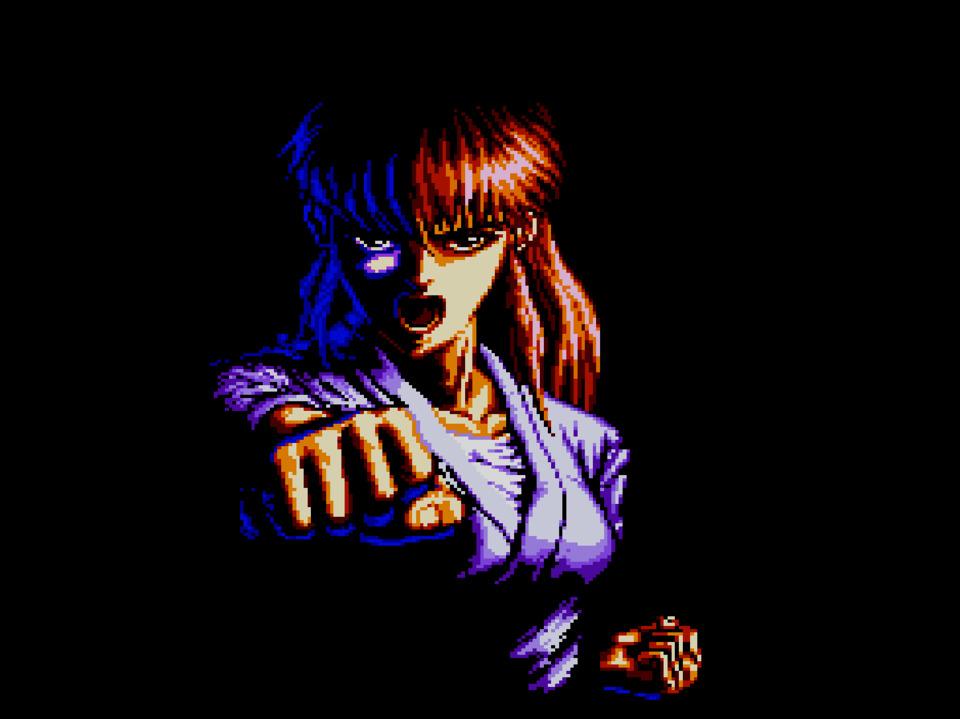
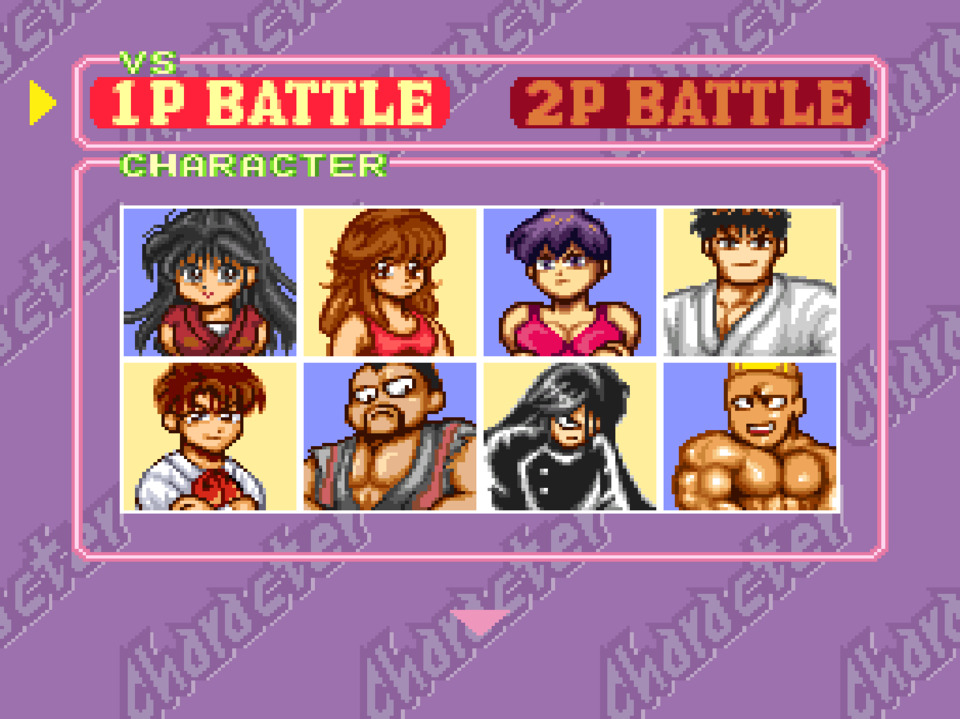
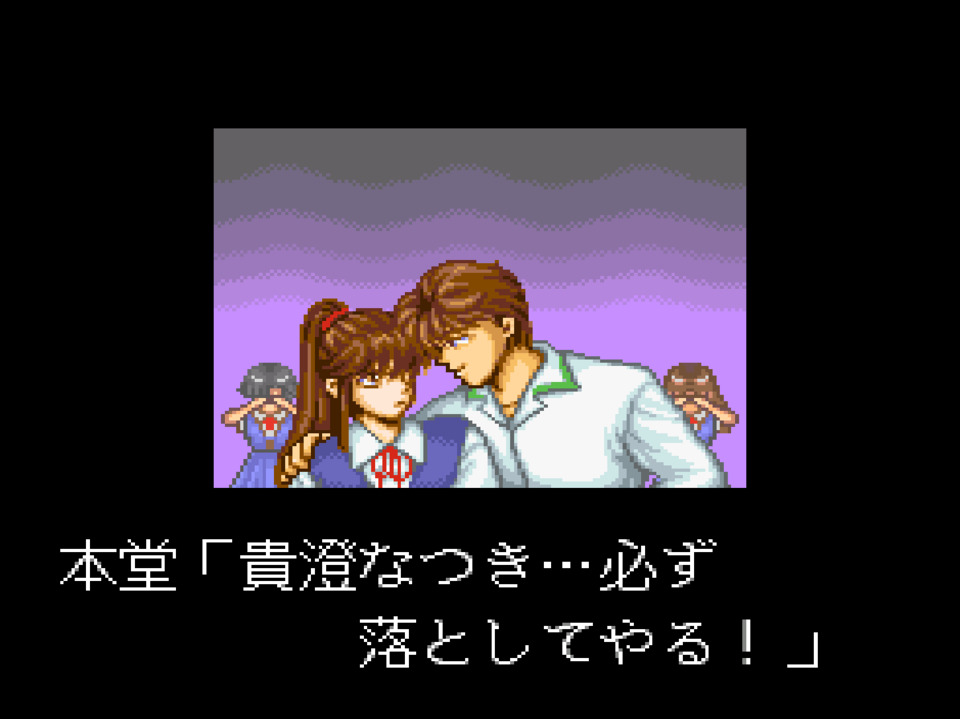
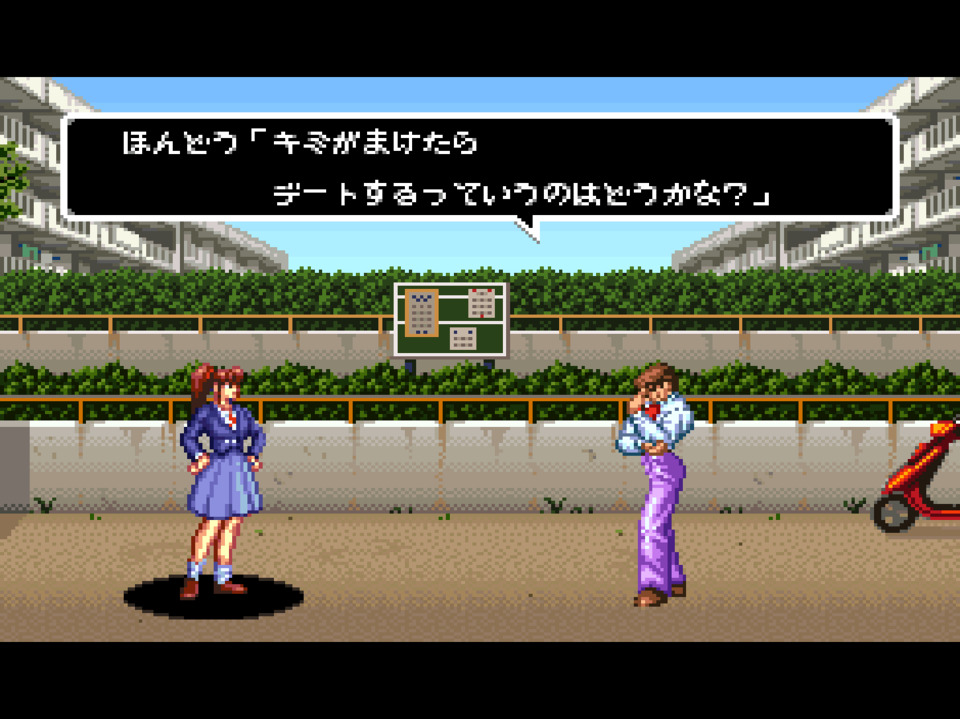
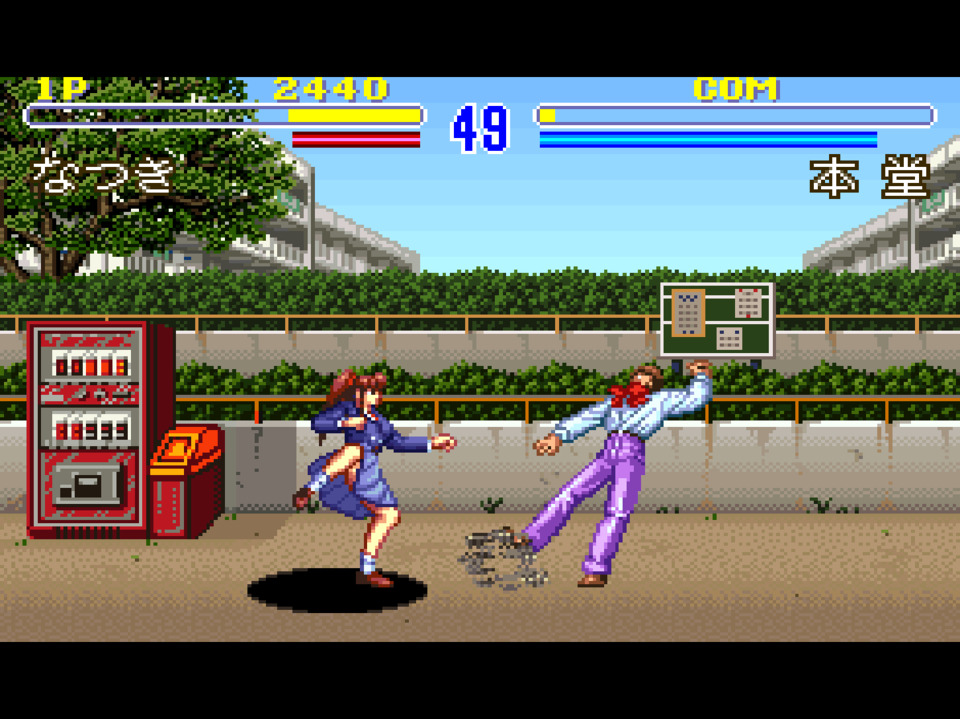
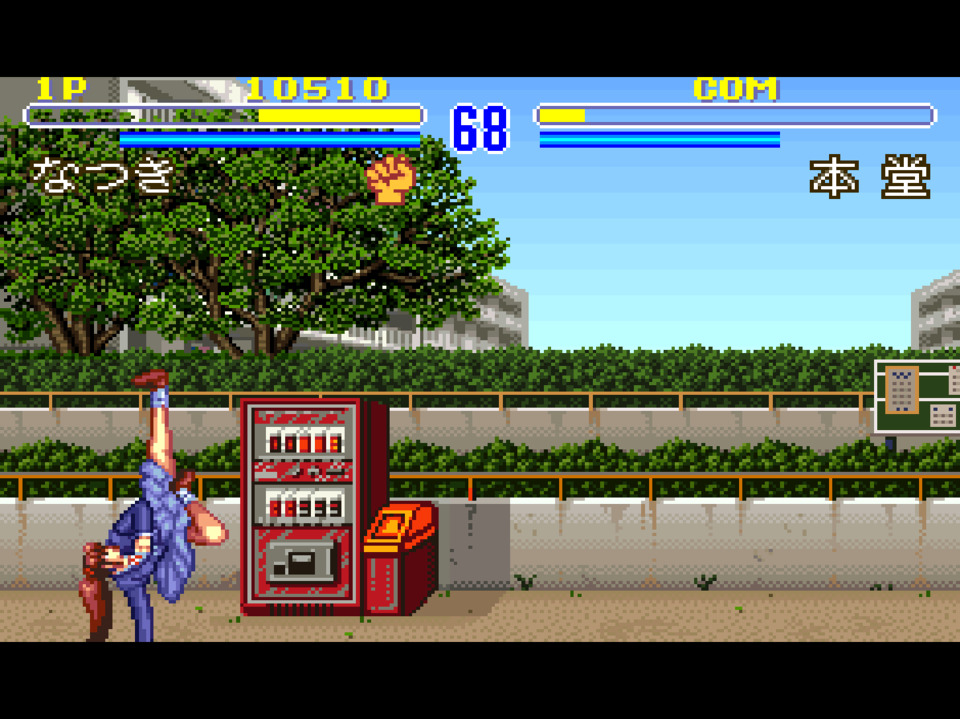
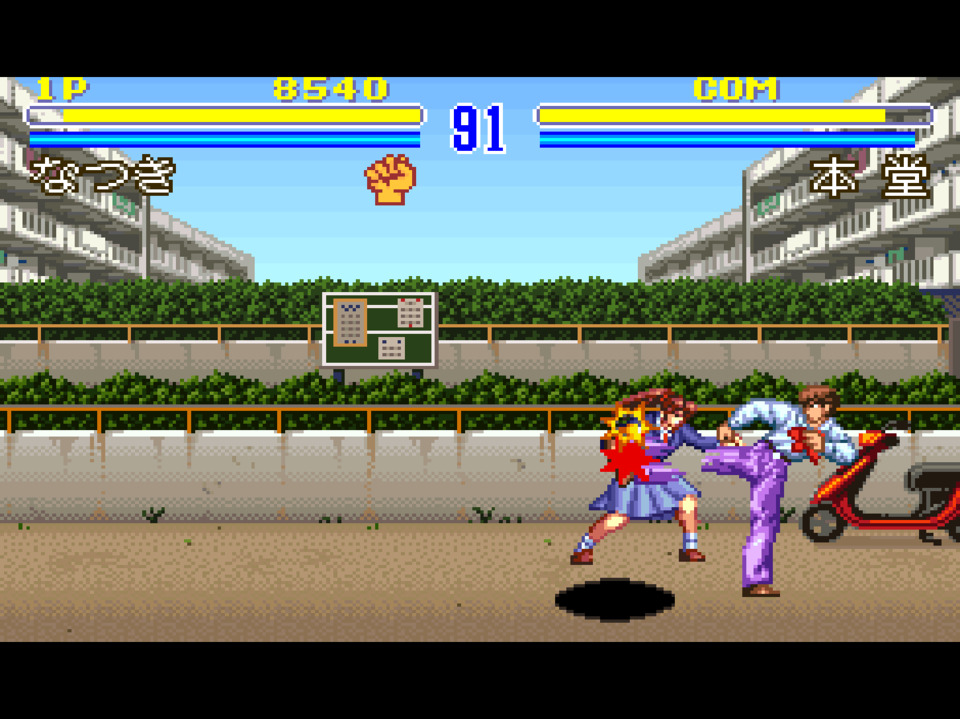
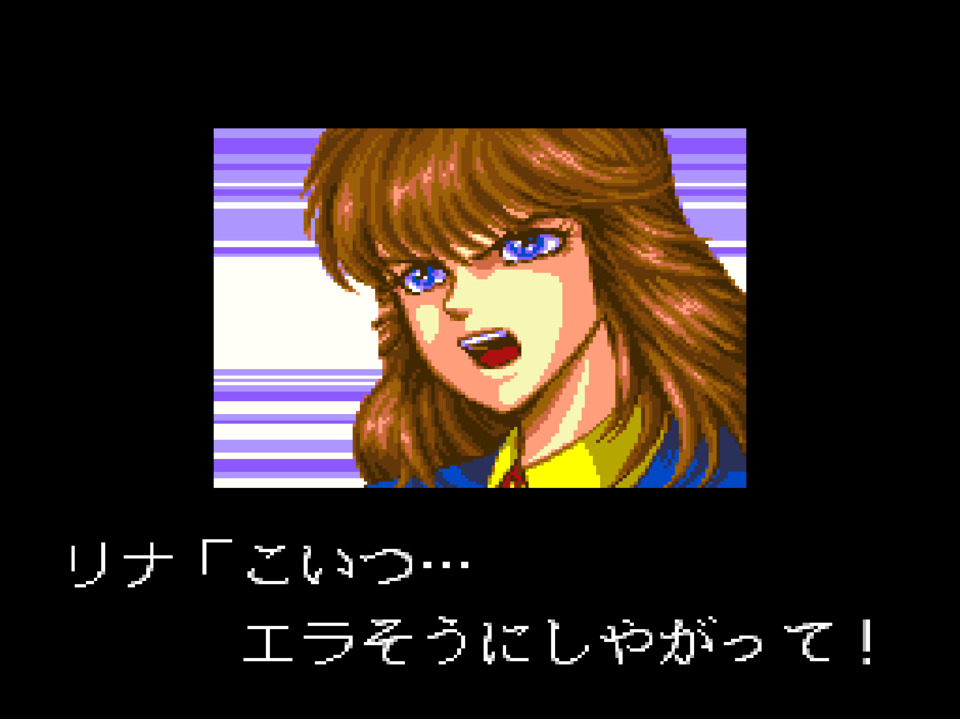
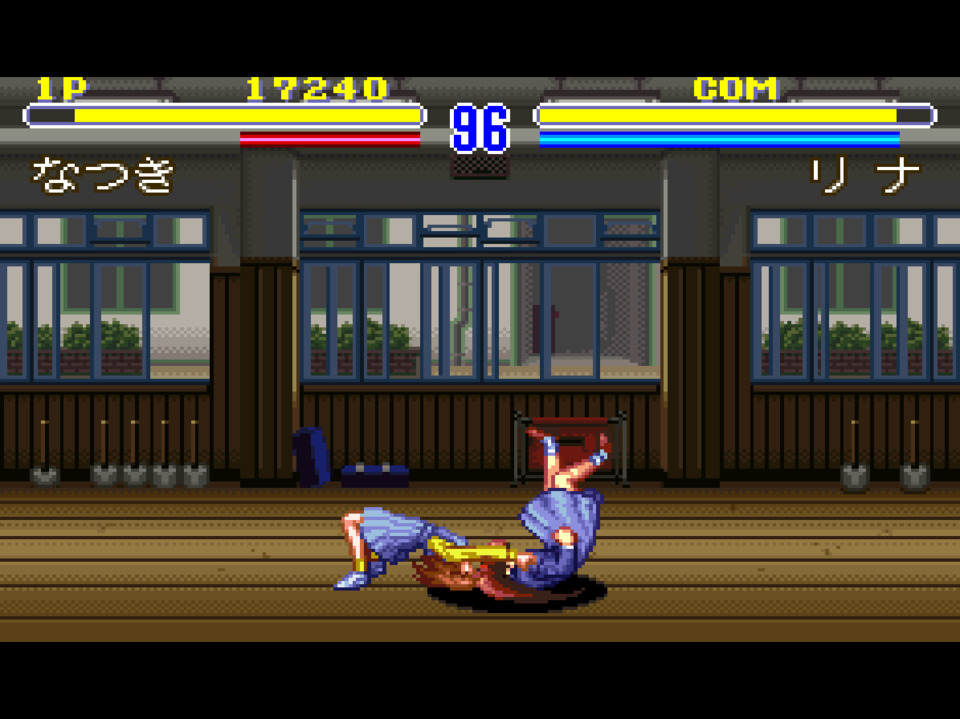
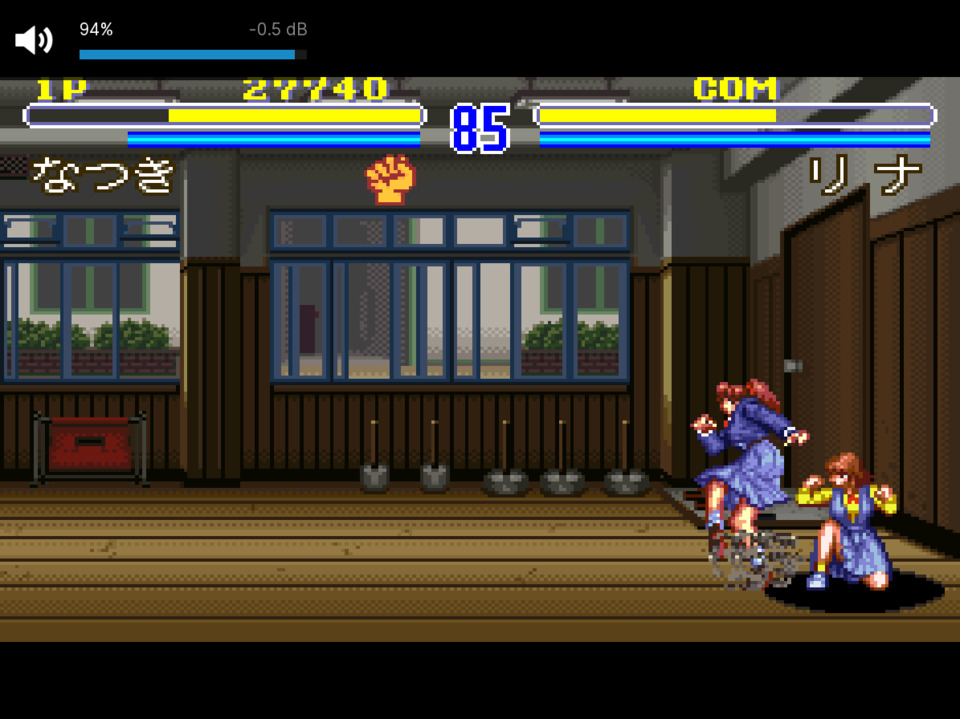
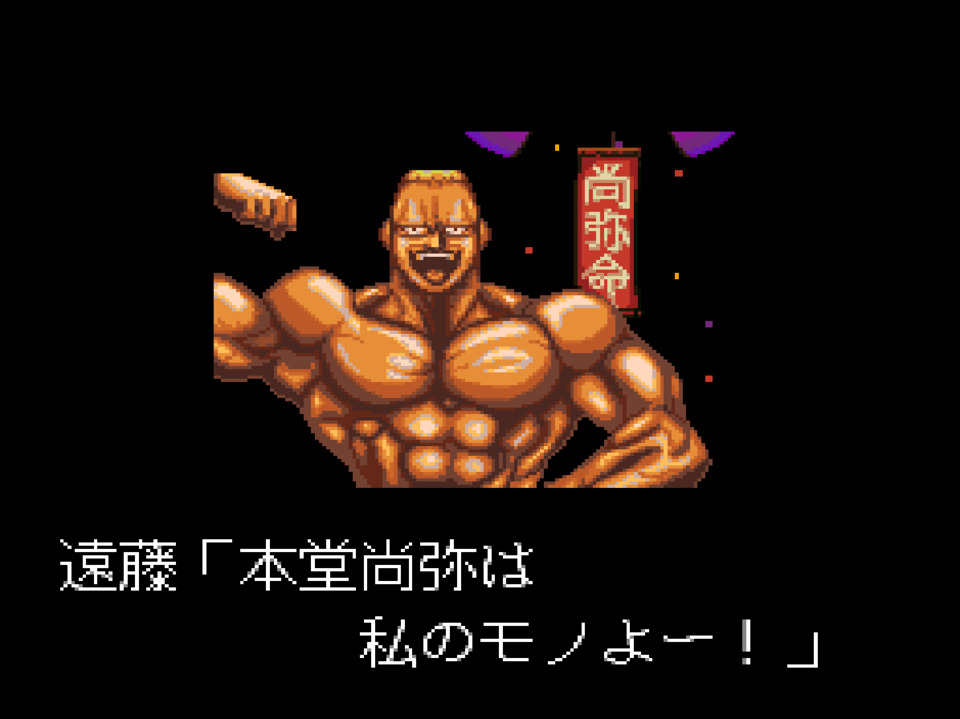
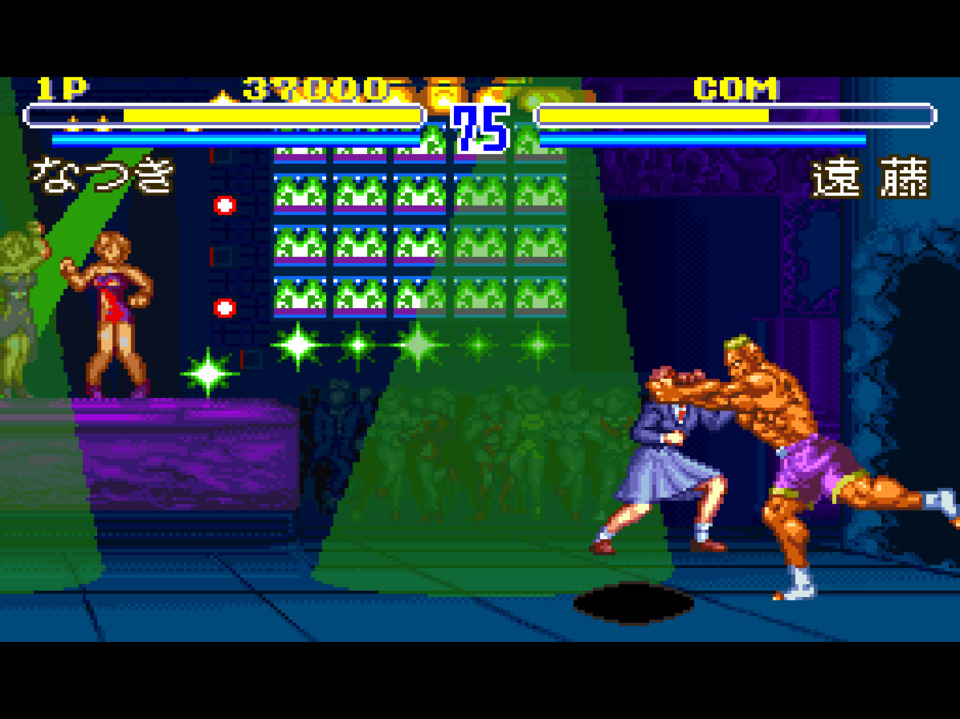
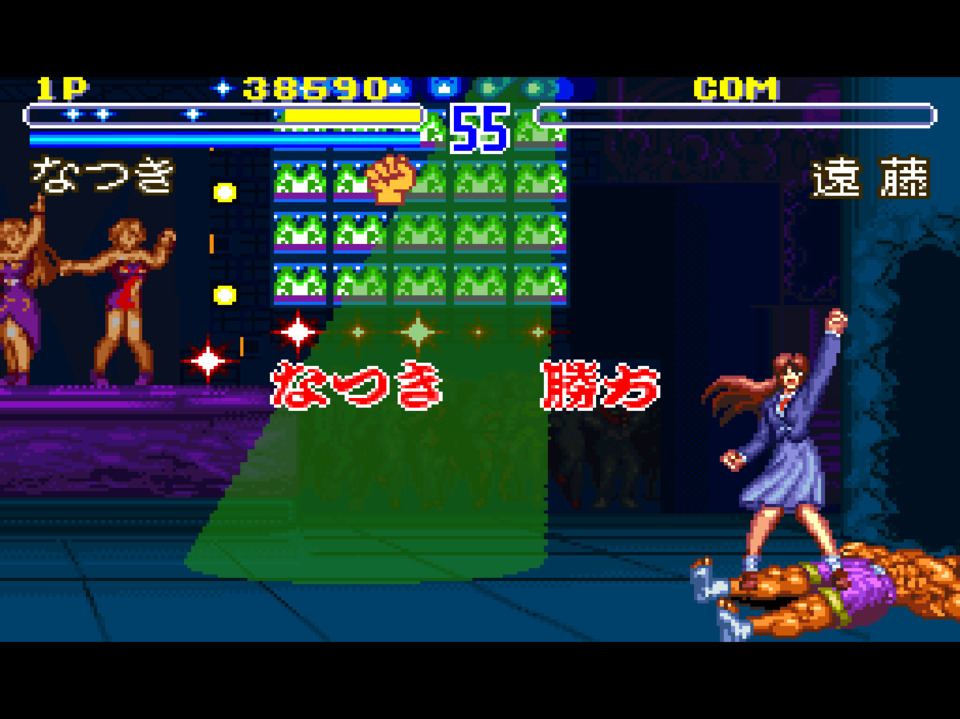
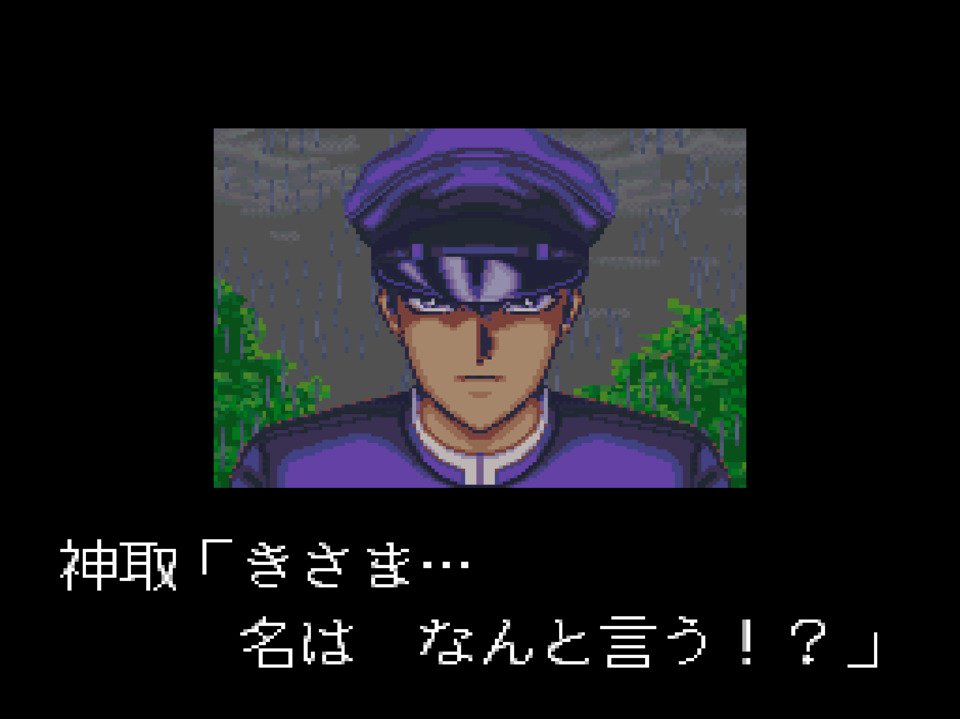
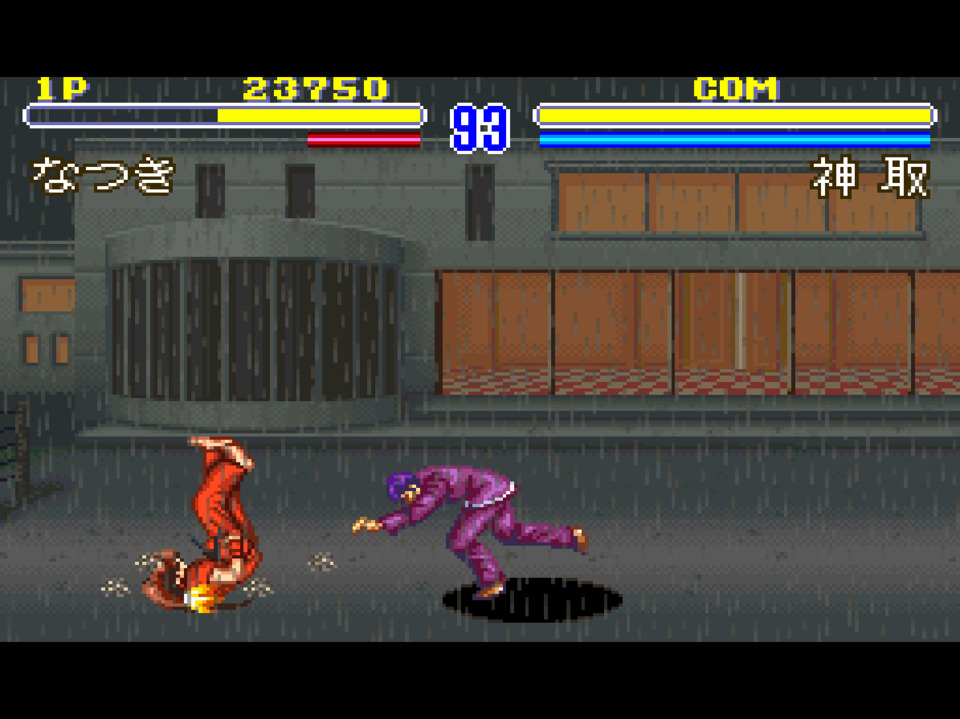
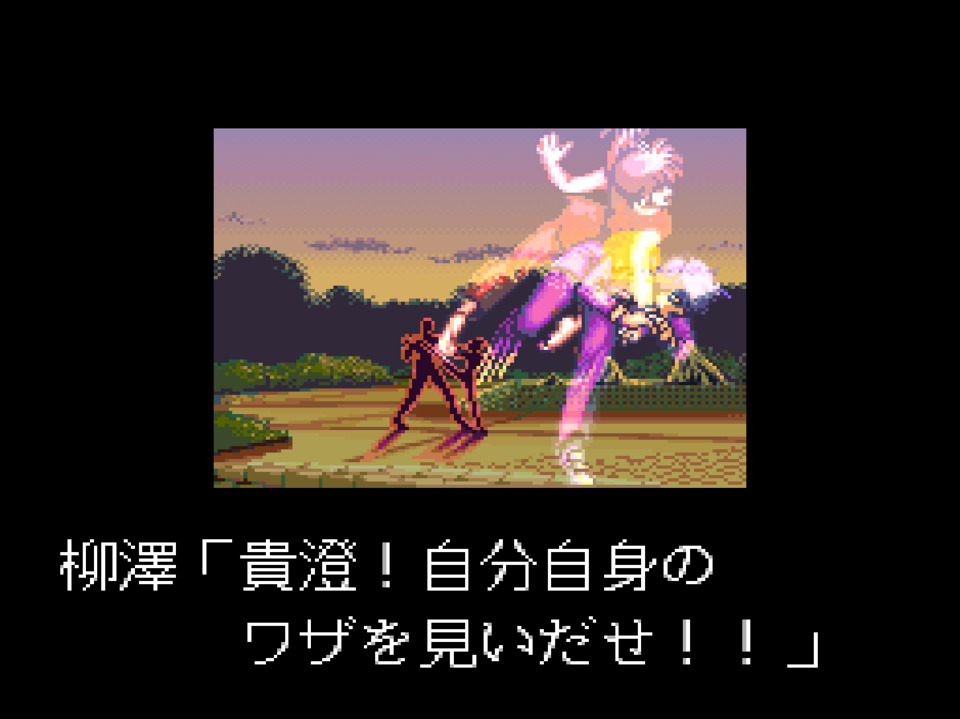
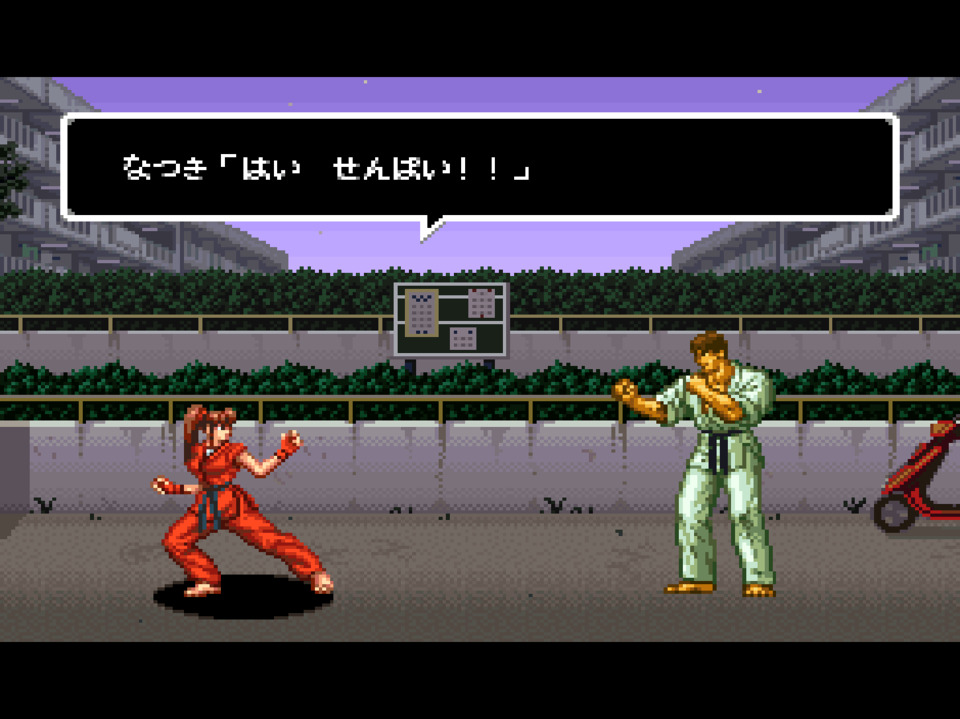
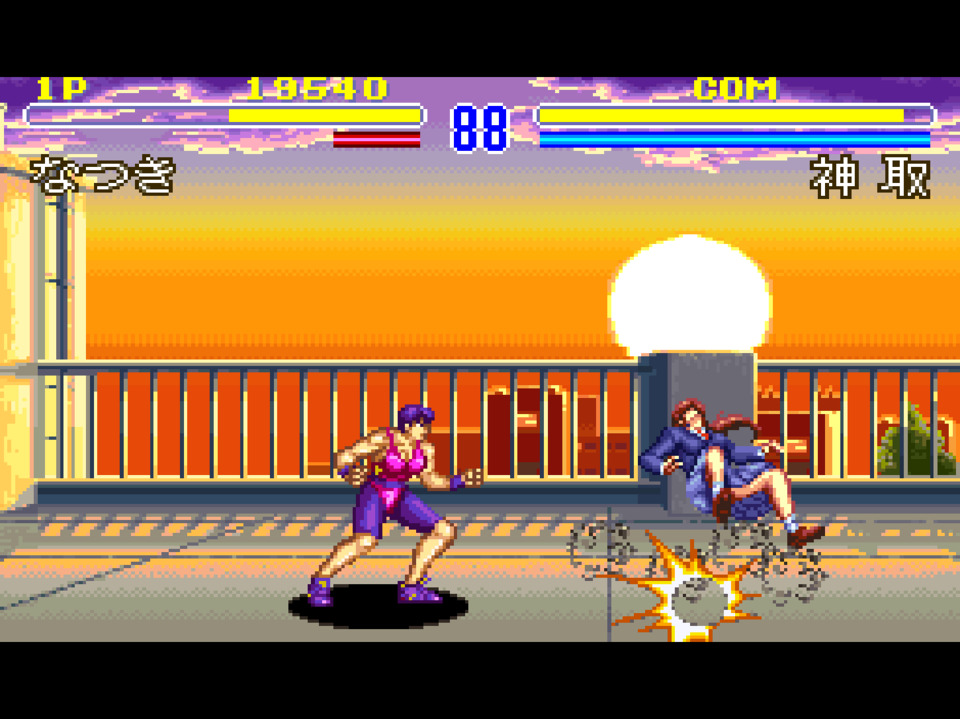
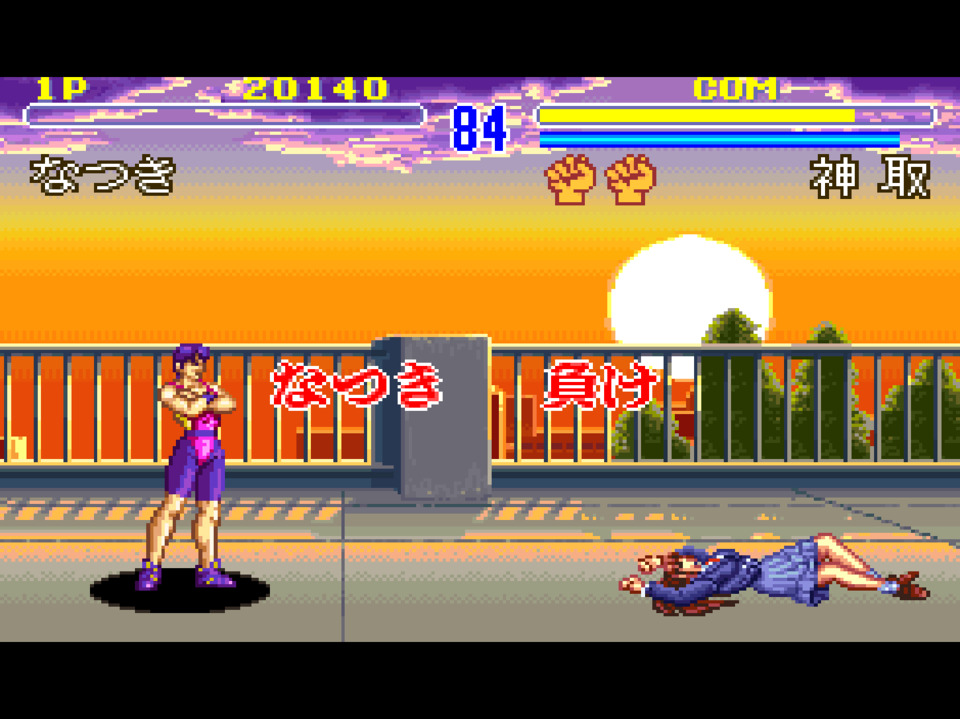
Does it do right by the anime? For as barebones as it is, Natsuki Crisis Battle isn't totally without merit. The story mode, which appears to follow the manga pretty closely albeit with a lot omitted, seems to know what it's doing with regards to giving manga fans the fight scene recreations they want. I was surprised they put an unwinnable battle in there, but given it's accurate to the story it's a nice touch of verisimilitude; I'm curious if the story branches if you manage to win, though I somehow doubt it. I guess there won't be many more instances like that in the game: there doesn't seem to be a way for two fighters to team up against one, for instance (that is, if such a fight ever happens in the manga, but I could totally see Natsuki and Rina uniting to take down a truly fearsome foe). There's some nuance to the combat as well: you don't tend to see a lot of counter moves/stances in other fighters, and as they're pretty powerful here I imagine that adds much to the extended footsie mindgames that moderate-to-champion-level bouts tend to devolve into. As a fighter neophyte (neophyter?) I'm probably not the one to cast final judgment on this, but as a quickie licensed cash-grab it's better than it has any right to be.
That's going to be all for our Natsuki Crisis management for this episode. As we head into September I've got a couple more episodes lined up but no solid plans for the two candidates in question. It does feel I'm starting to get lost in the woods with these obscure choices, so maybe I'll bite the bullet on something a little better known with more adaptations to check out. If my time with Natsuki Crisis has taught me anything it's to always remember to eat your vitamins, practice your fireballs, don't do what Donny Hondo does, and if a 6' tall chick with a pixie cut and more muscles than Lou Ferrigno shows up at your school you stay the heck out of her way if you don't want to get Mountain Storm'd into the concrete.

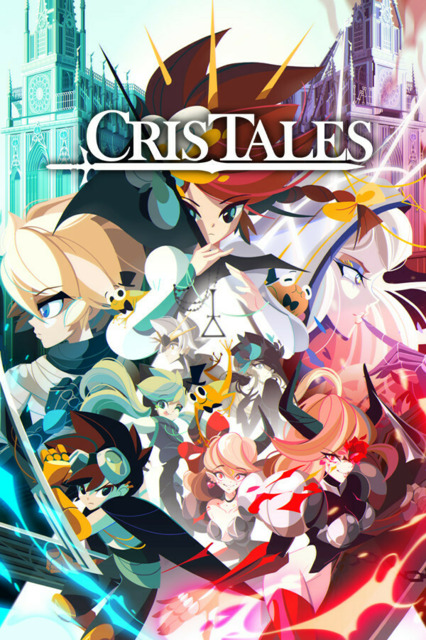
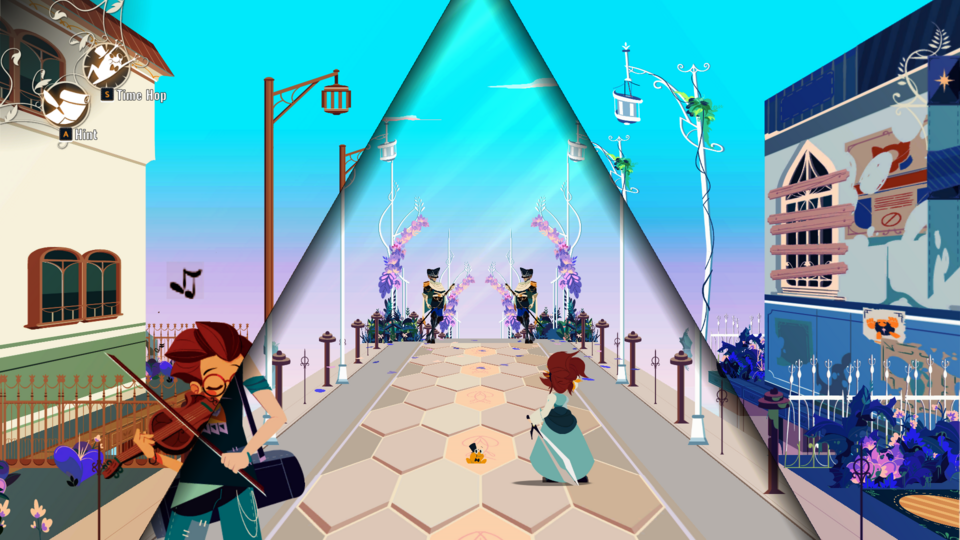
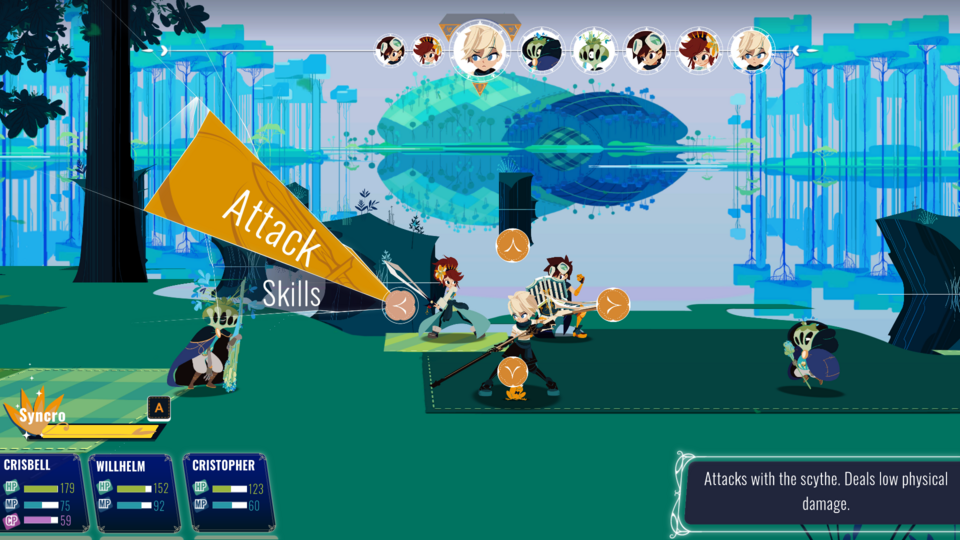
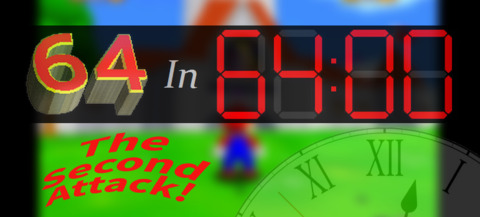
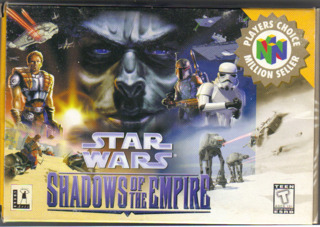
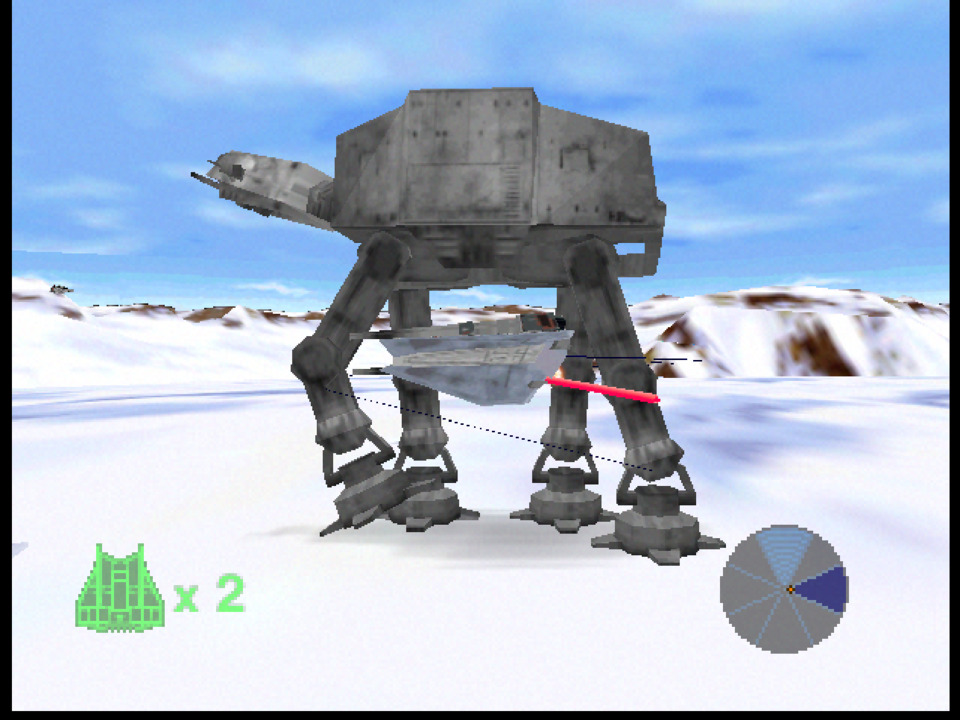
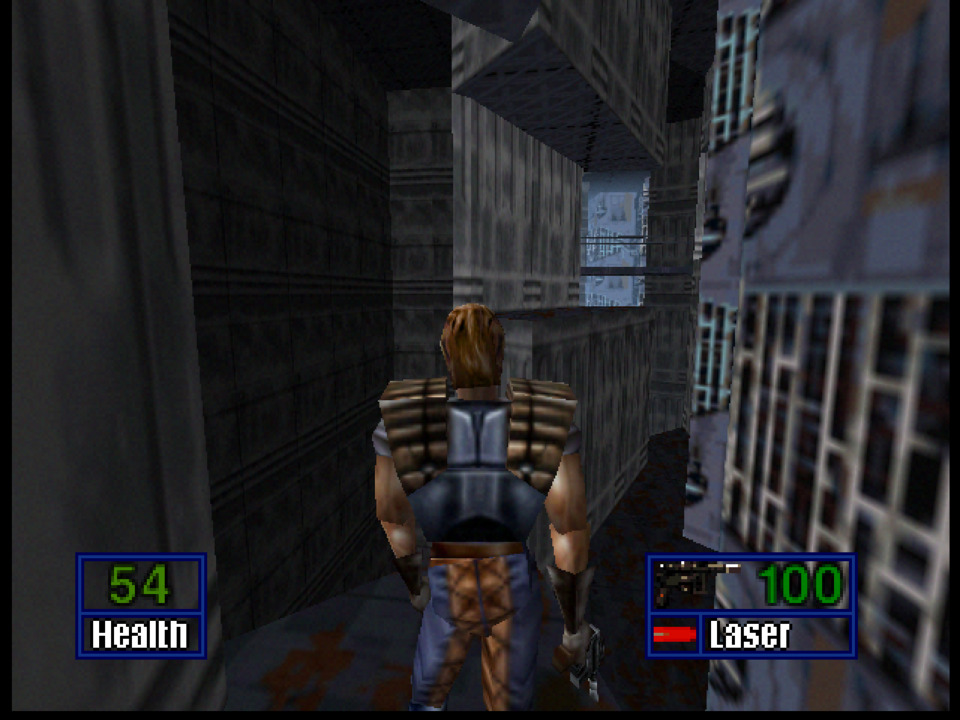
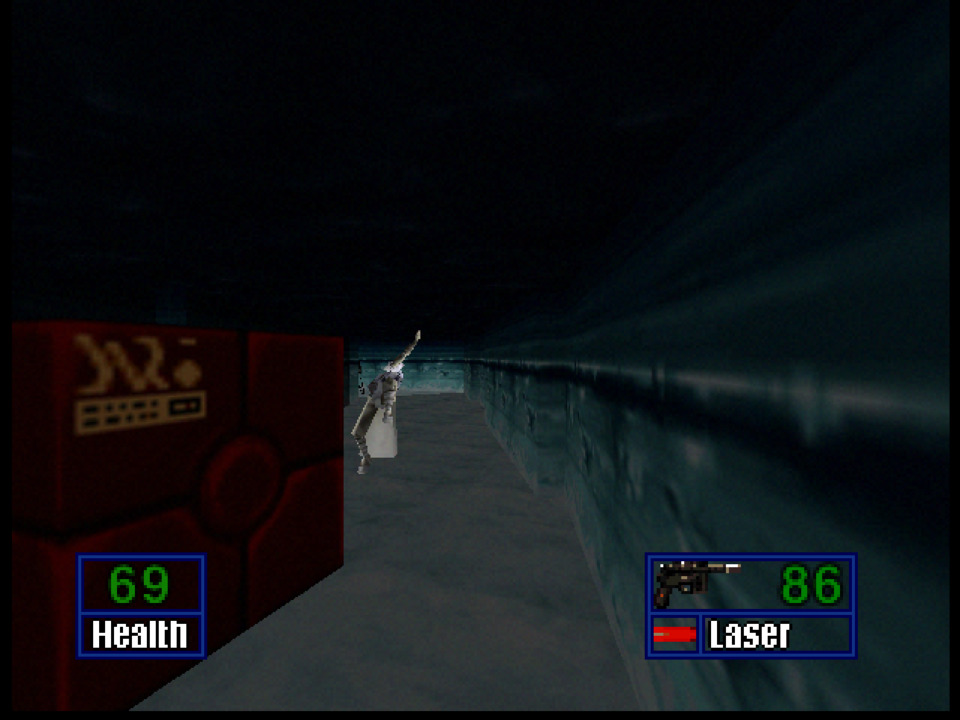
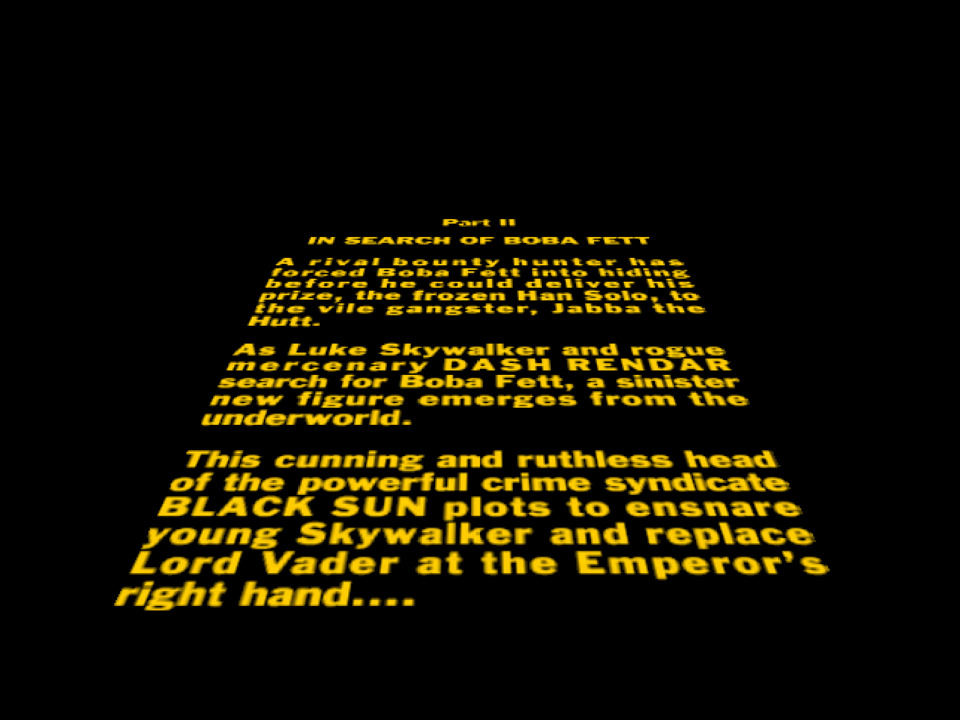
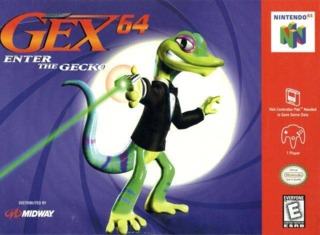
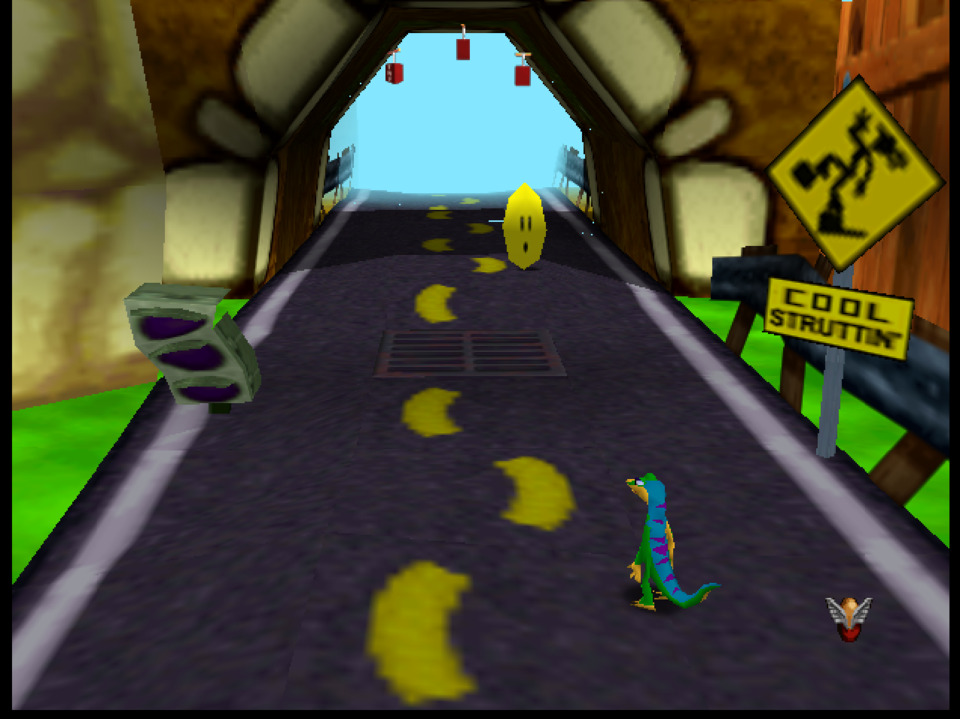
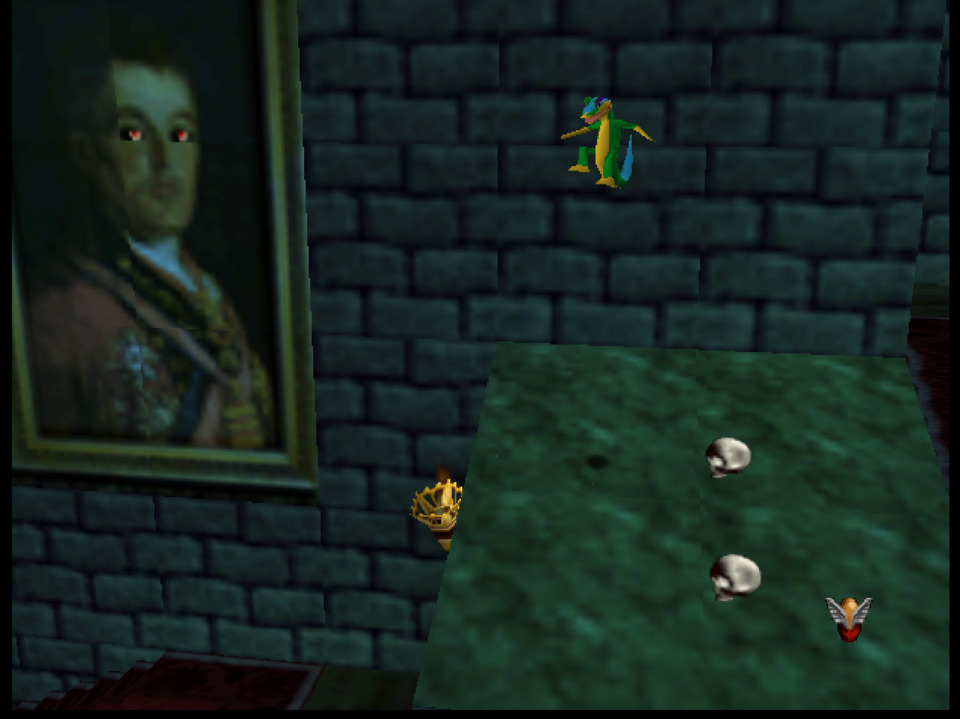
![Sick skull flamethrower my dude. This guy's spitting more fire than [REFERENCE_19111_NOT_FOUND].](https://www.giantbomb.com/a/uploads/scale_super/2/23093/3496699-gex64-enterthegecko%28usa%29-230821-224123.jpg)
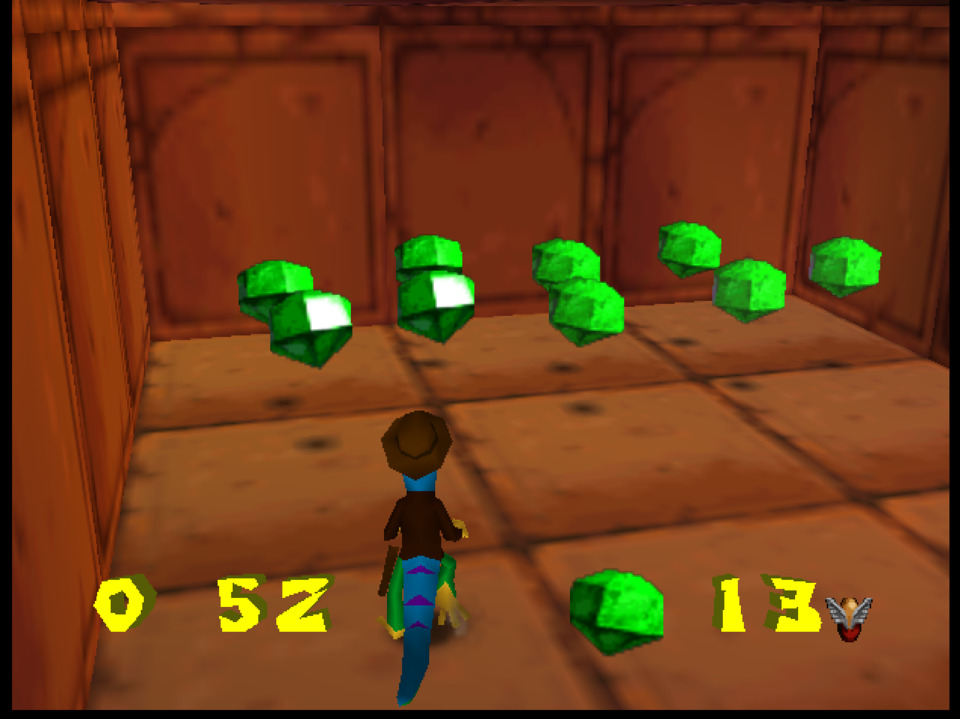
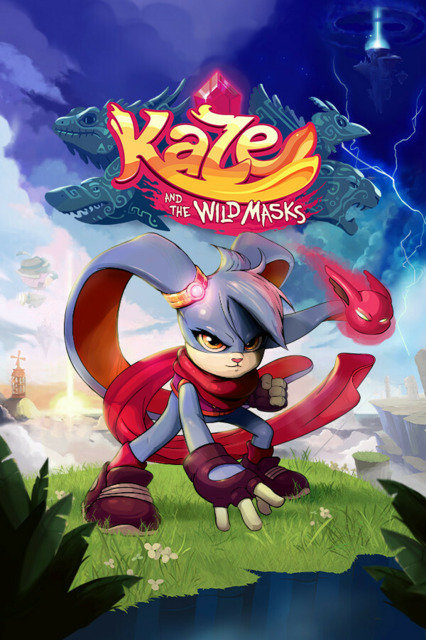
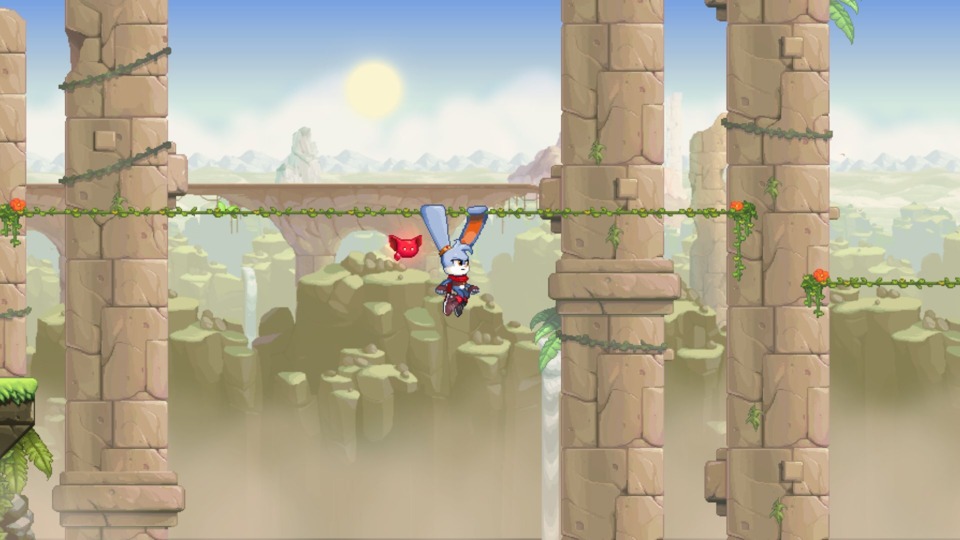
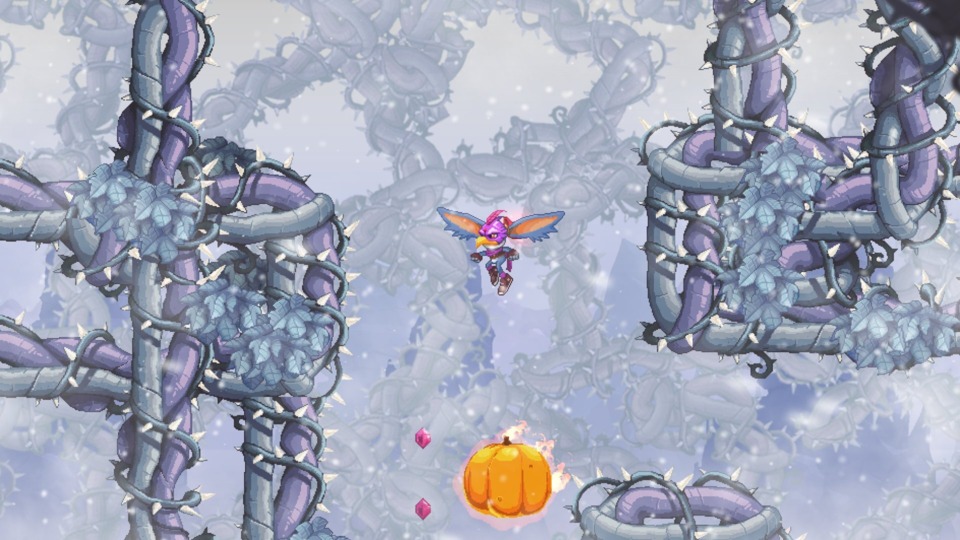
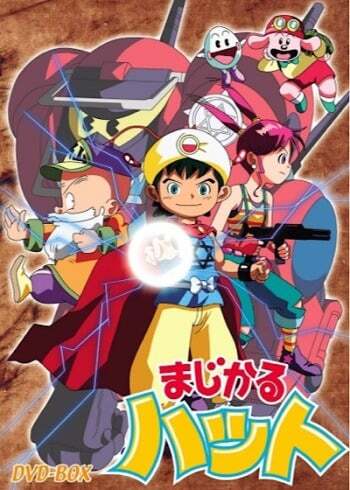
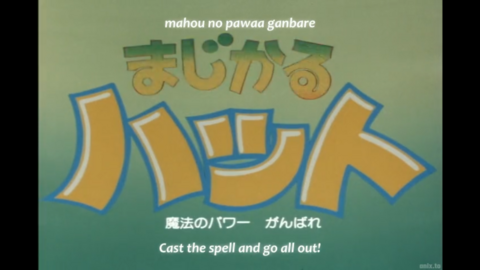
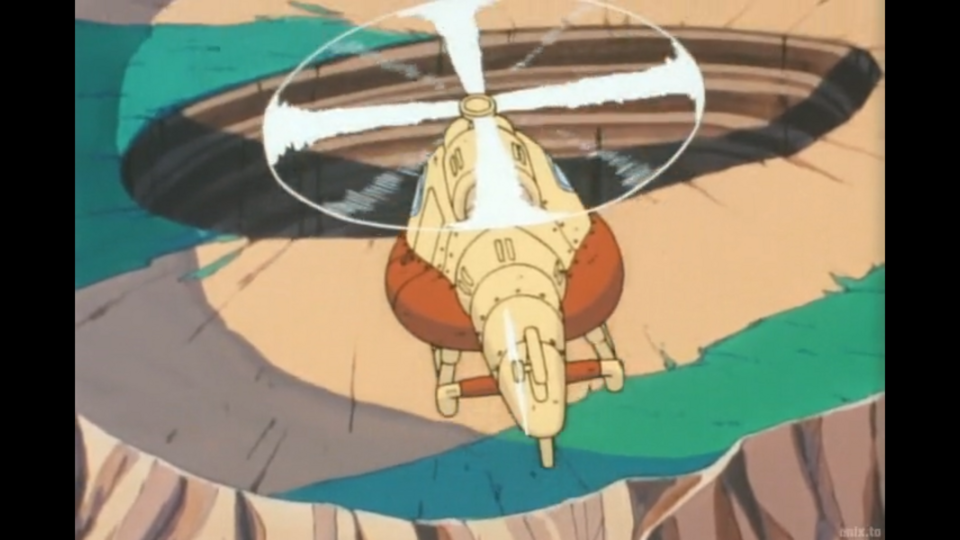
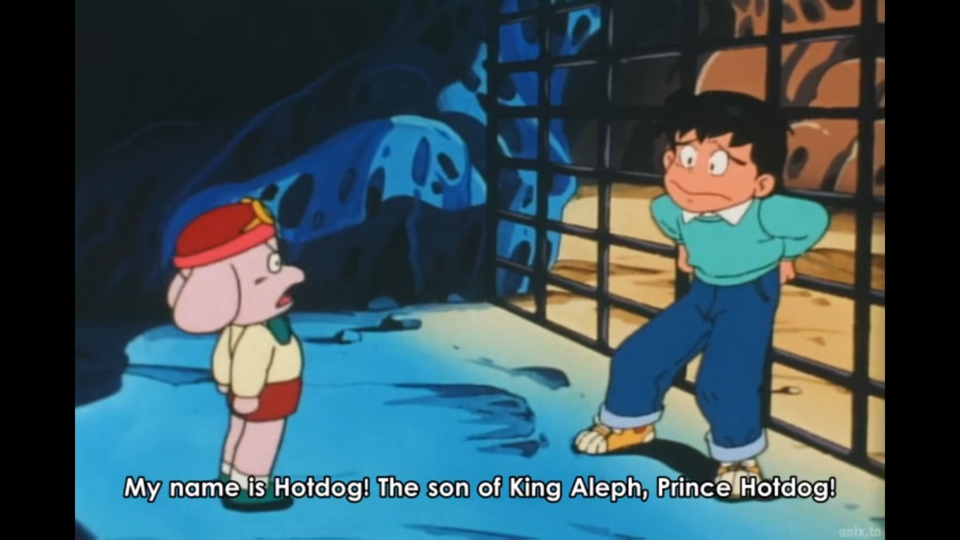
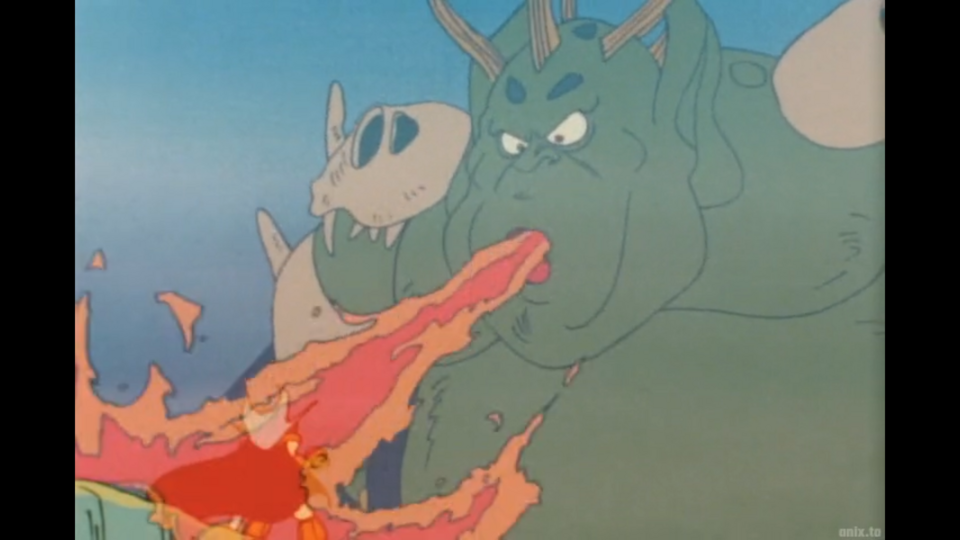
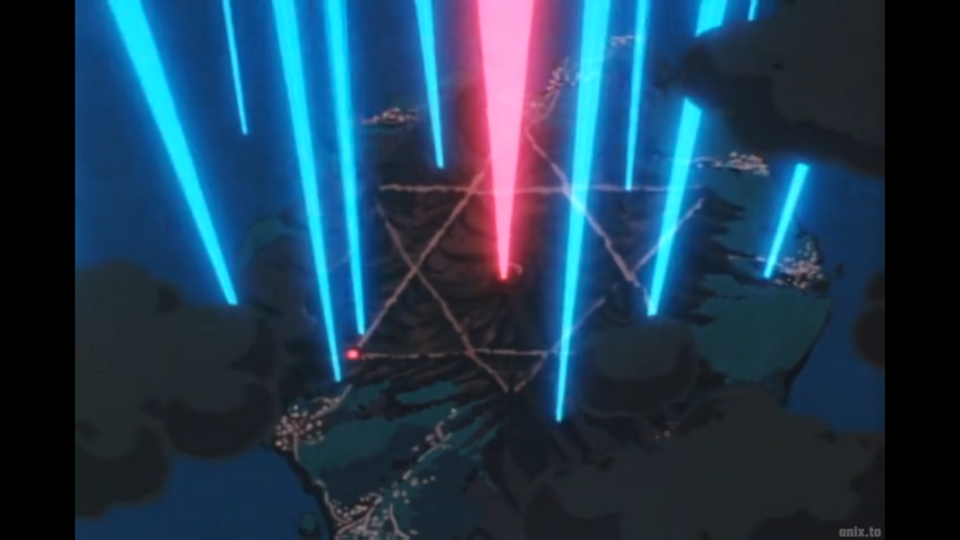
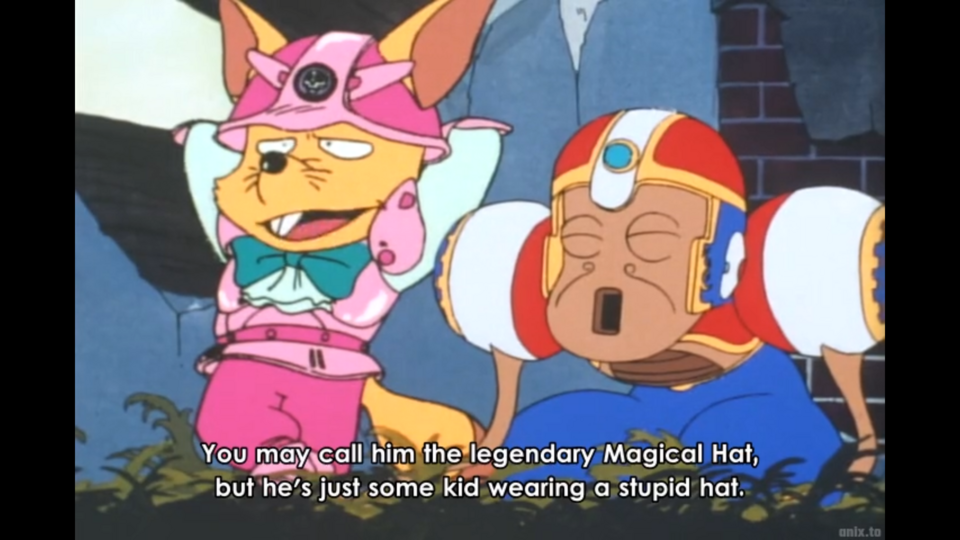

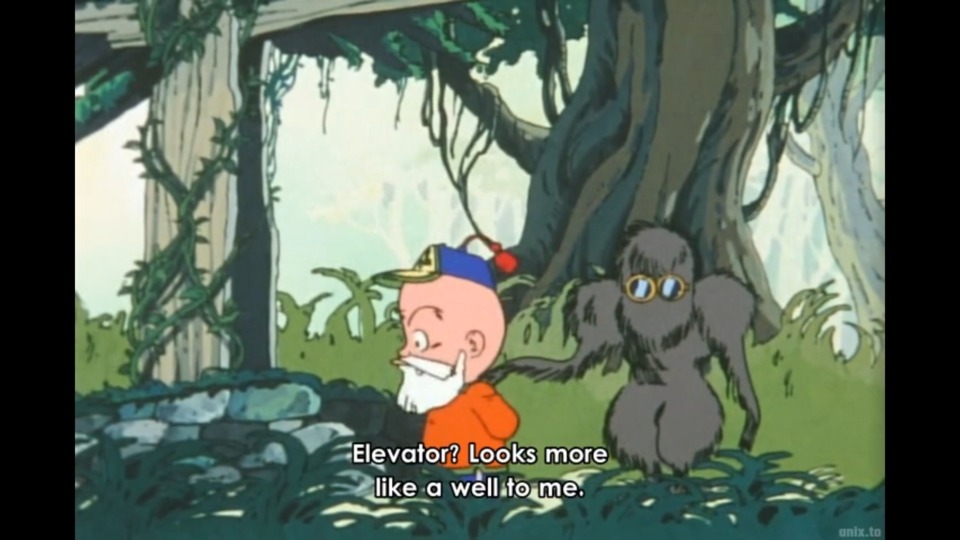
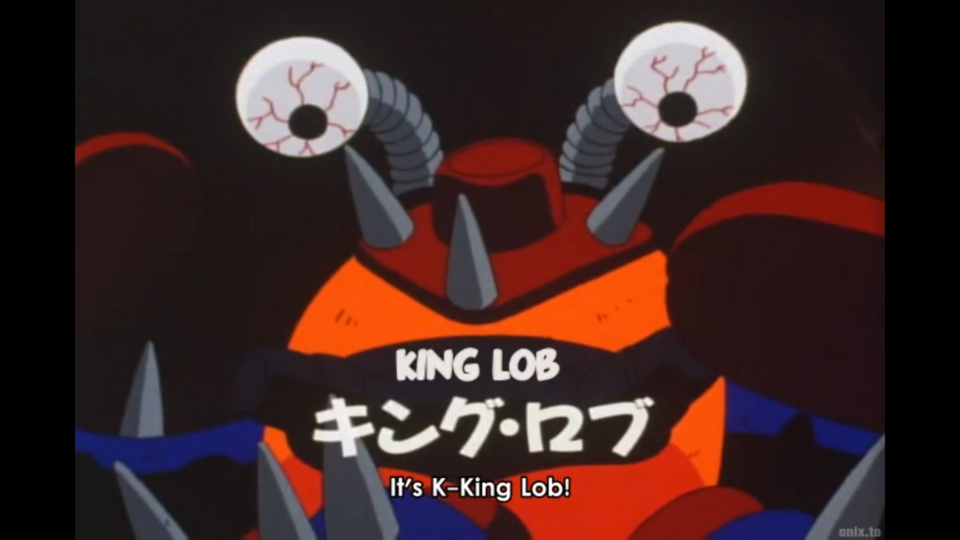
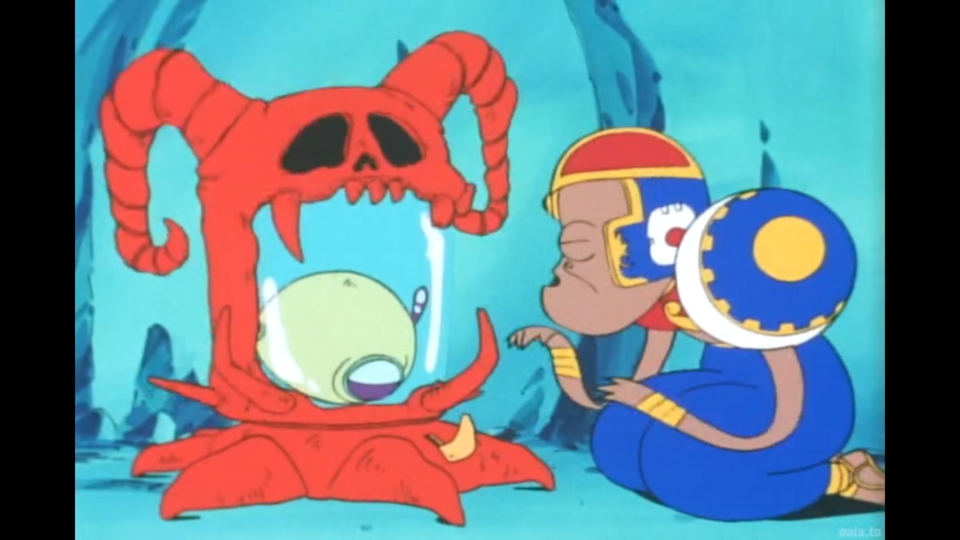
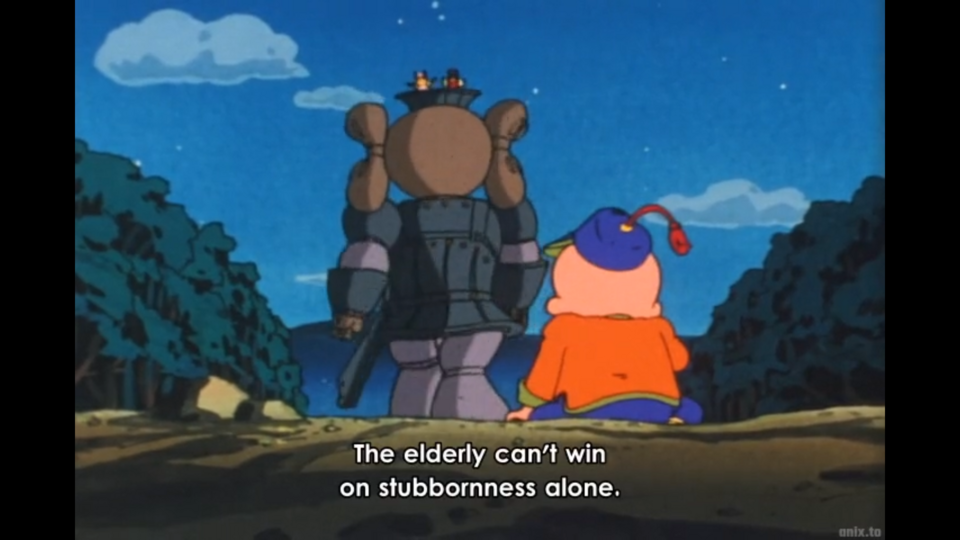
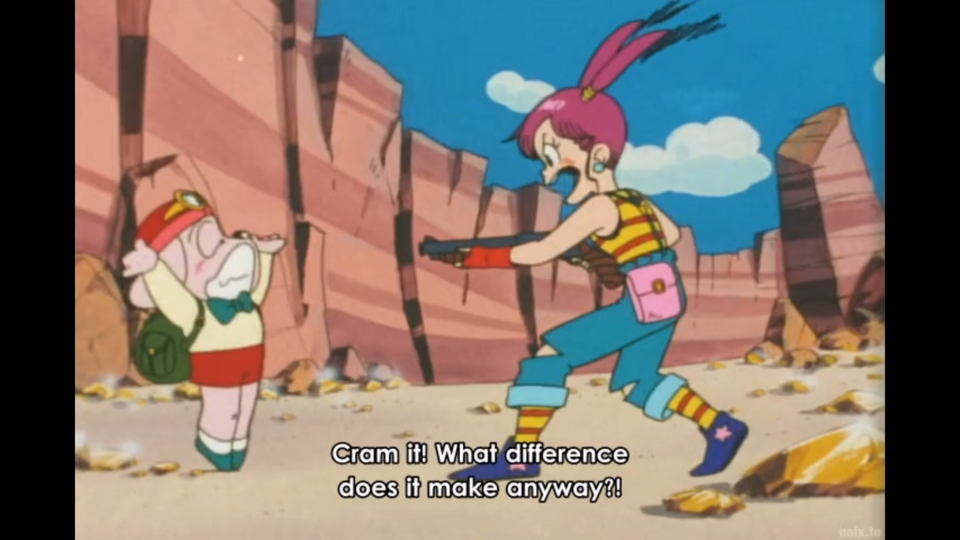
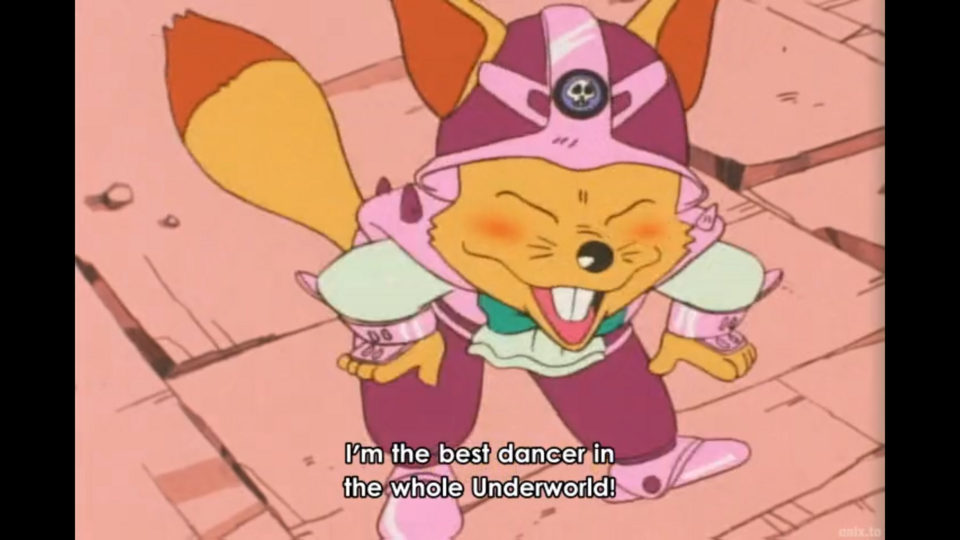
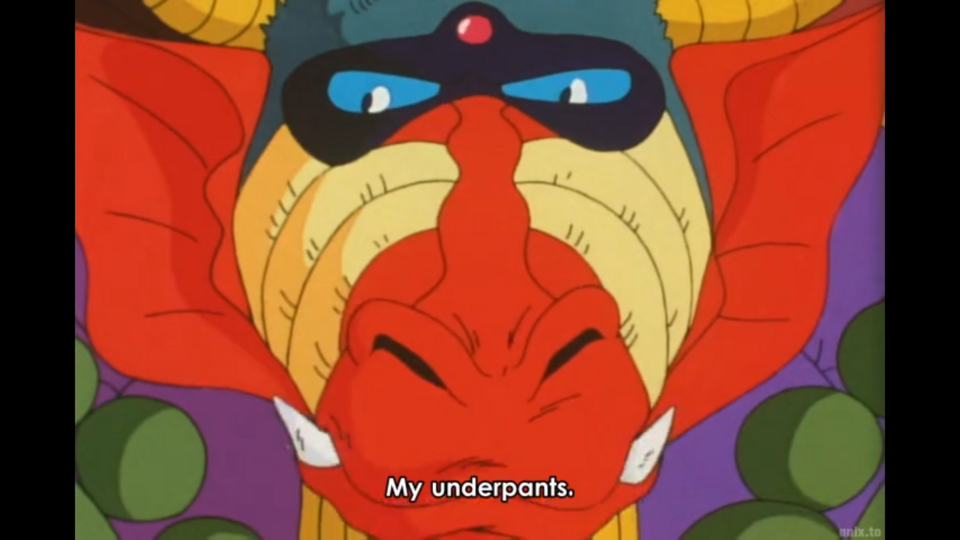
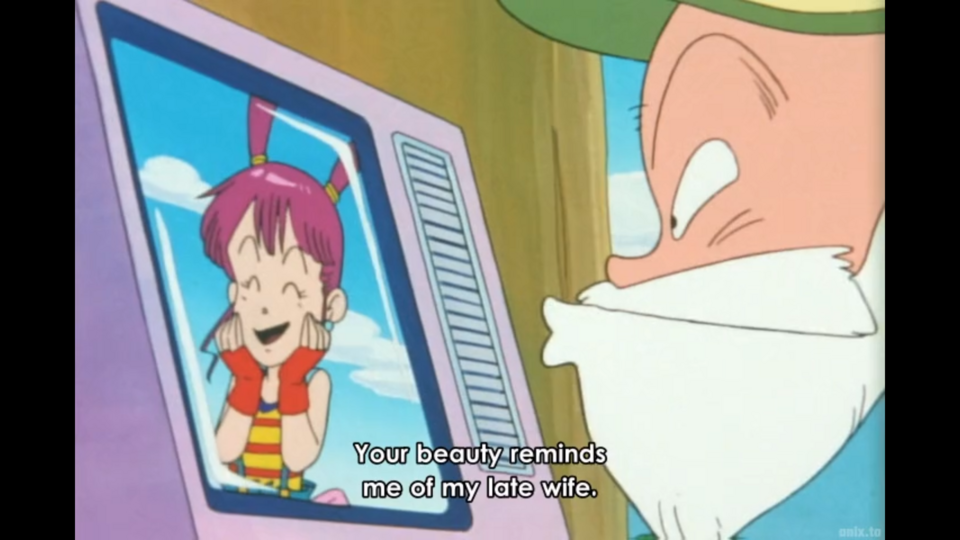
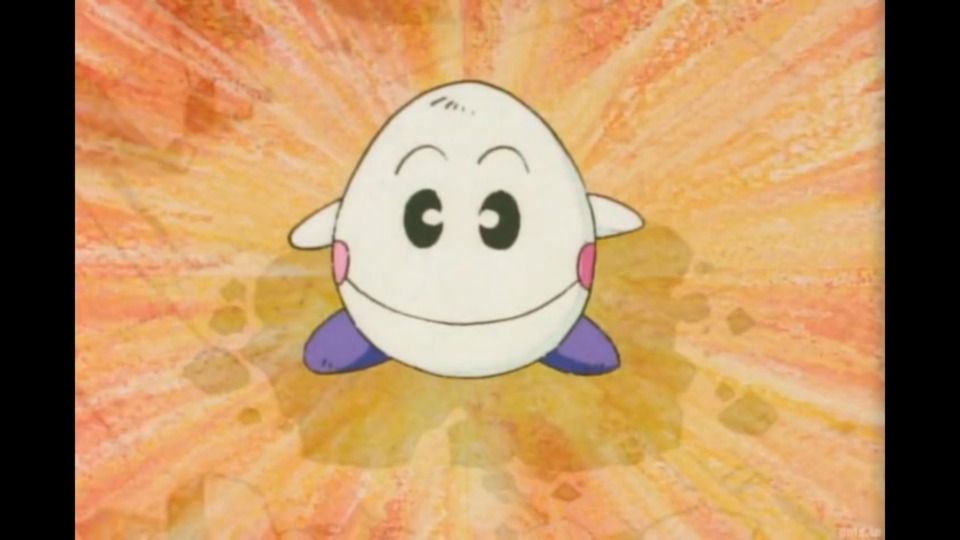
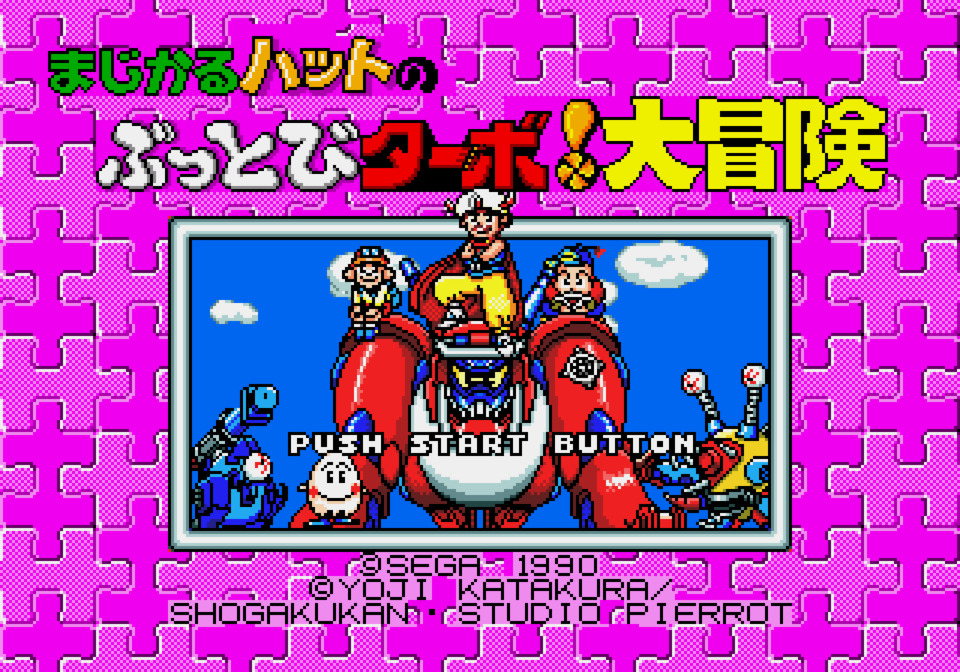
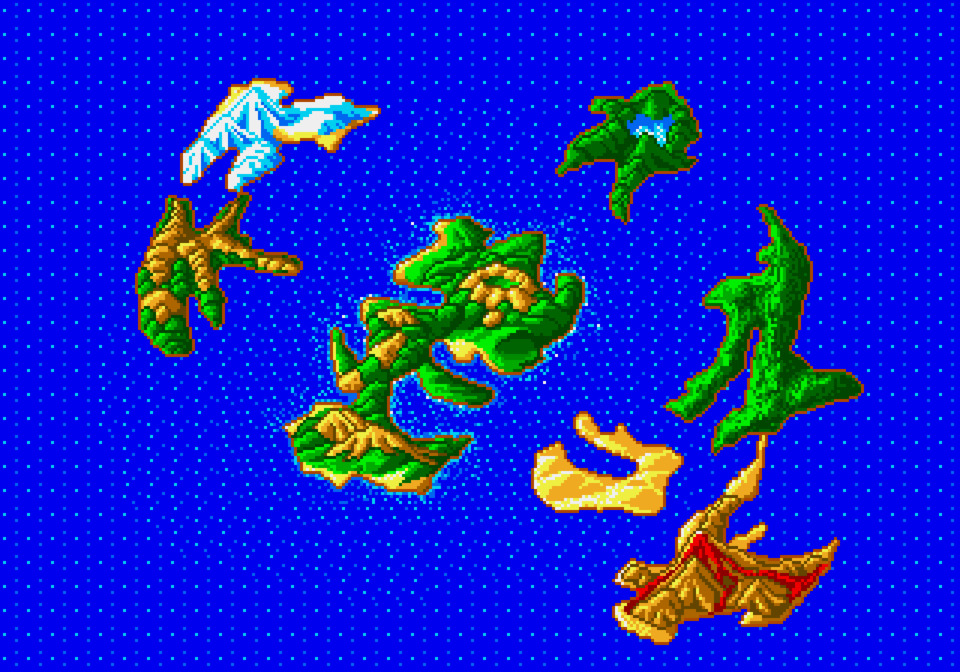
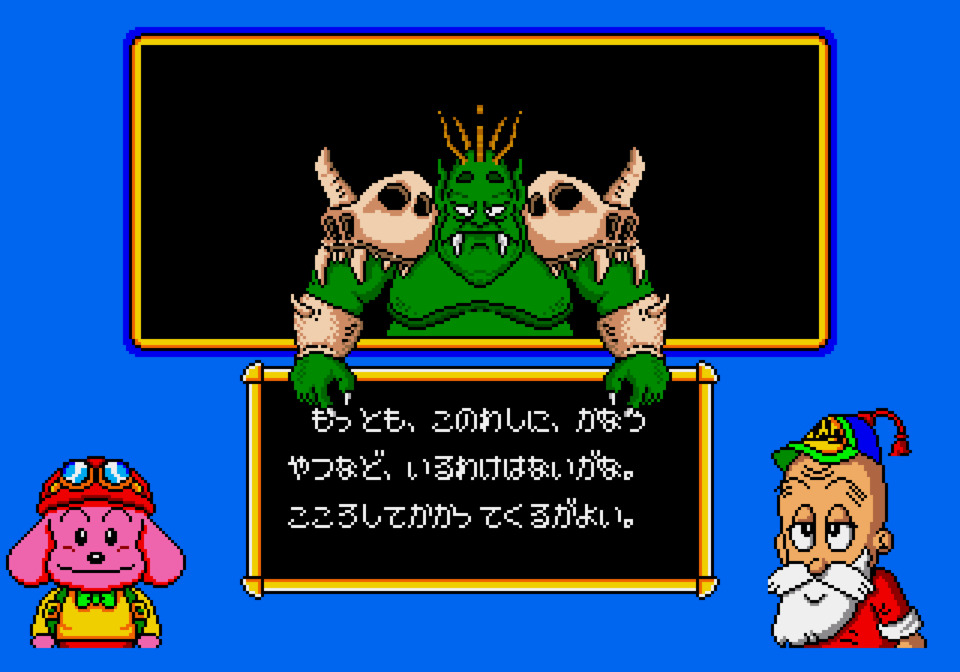
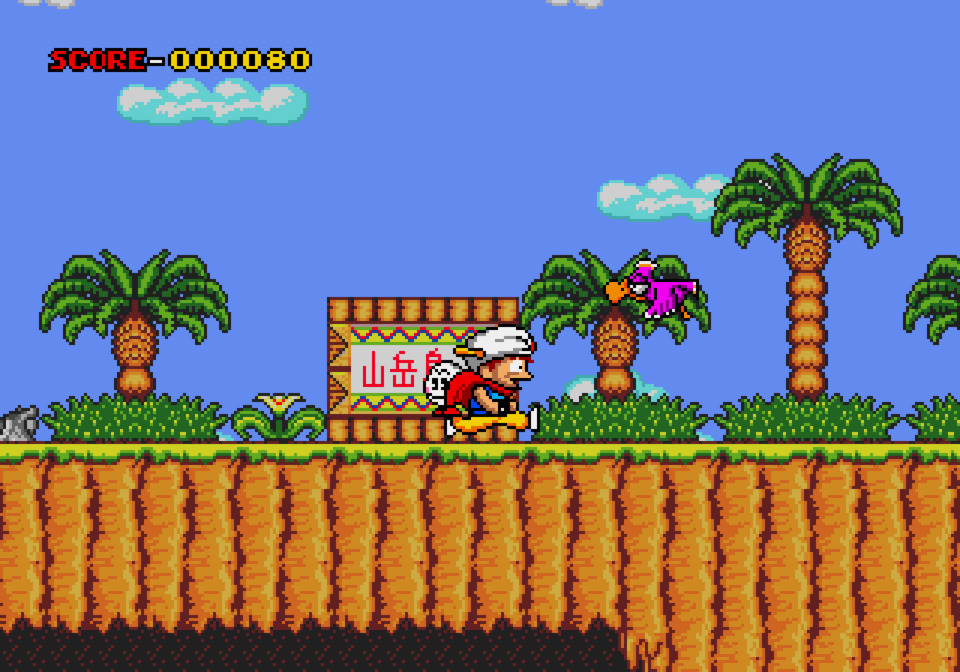
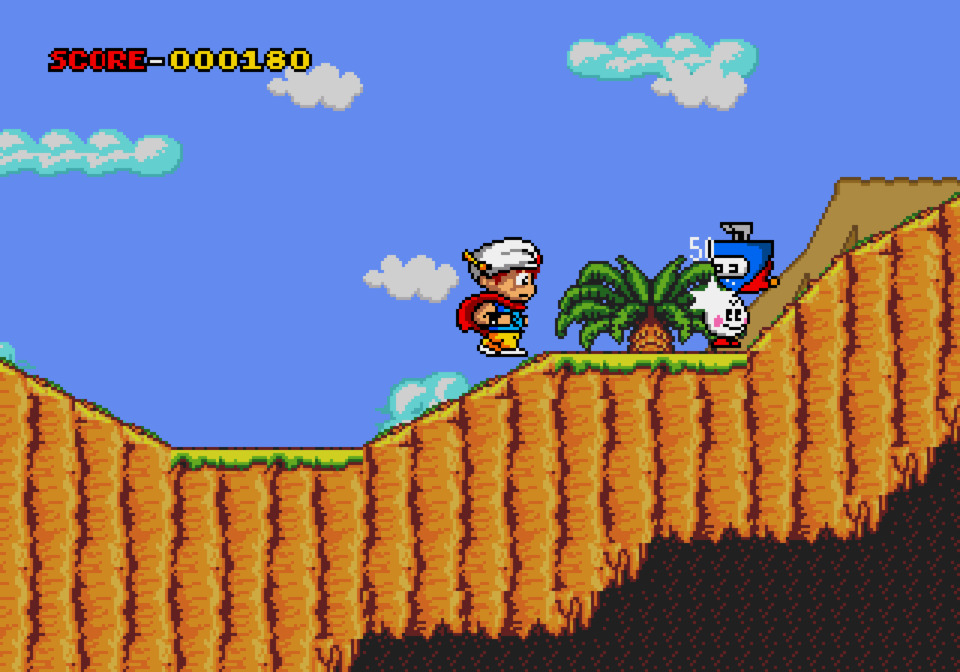
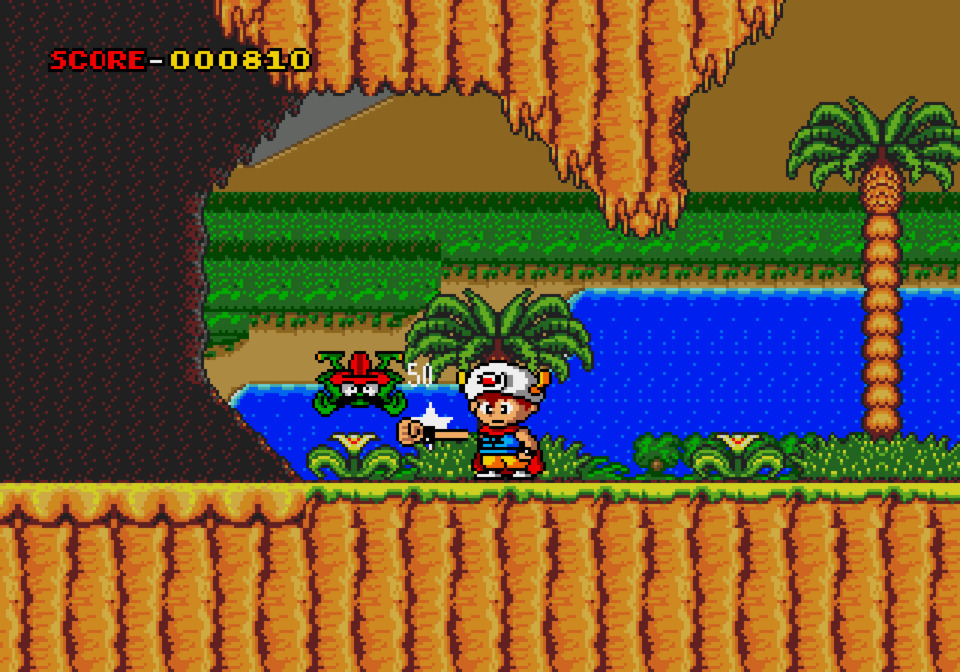
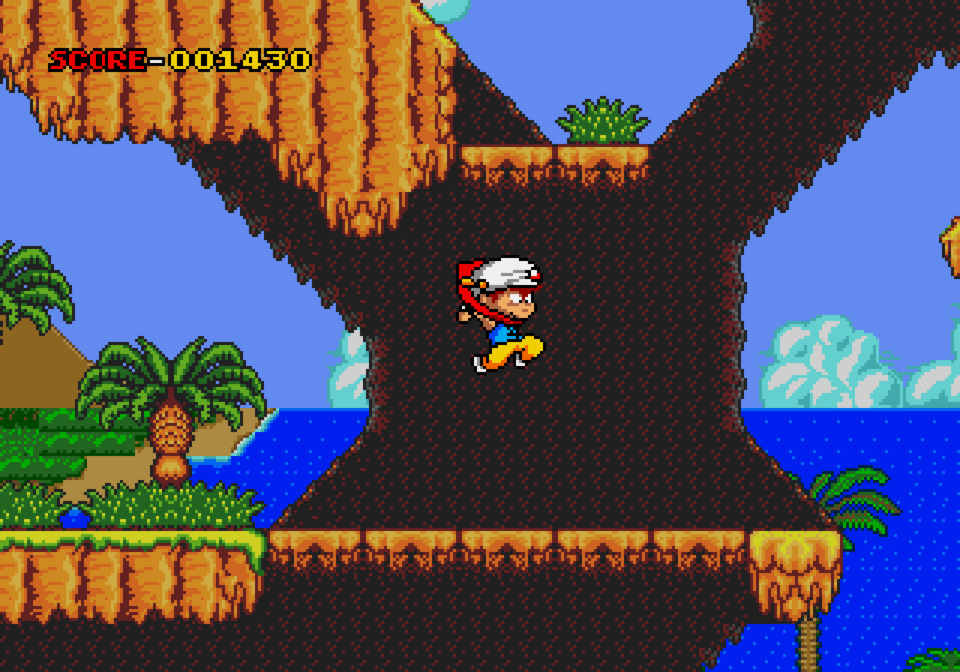
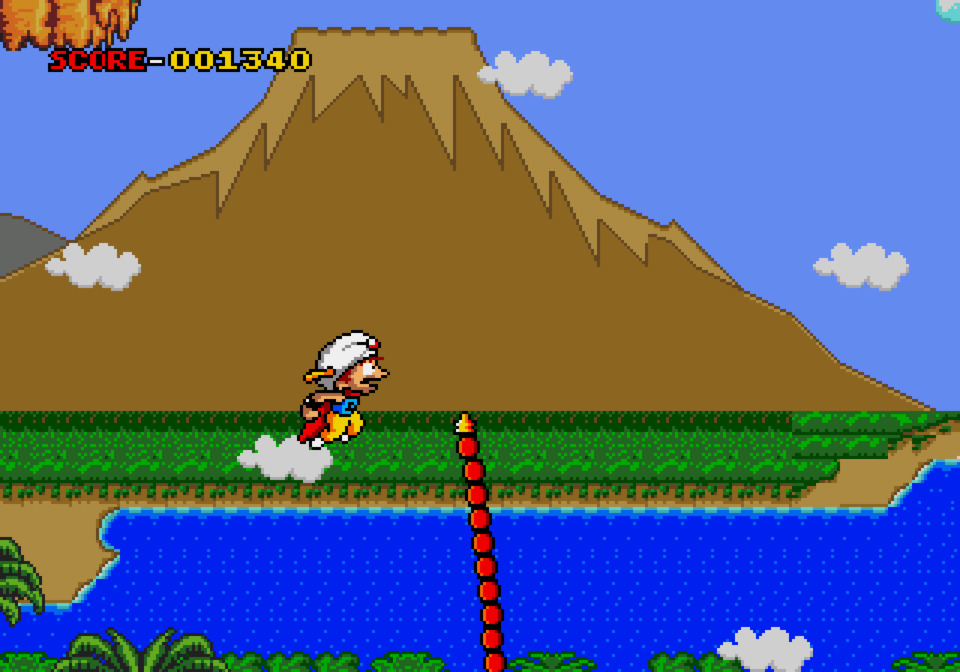
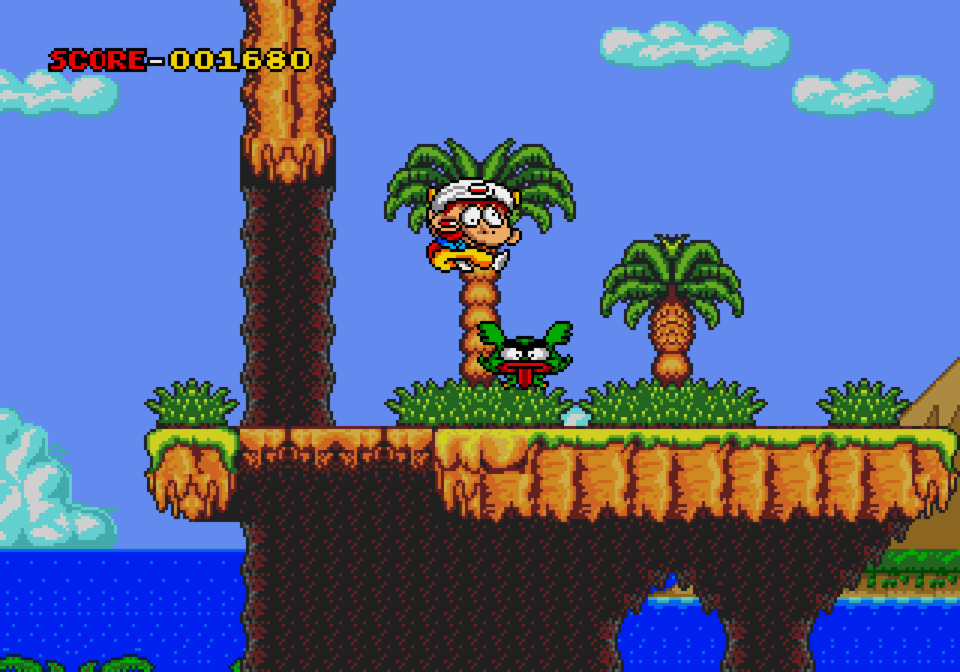
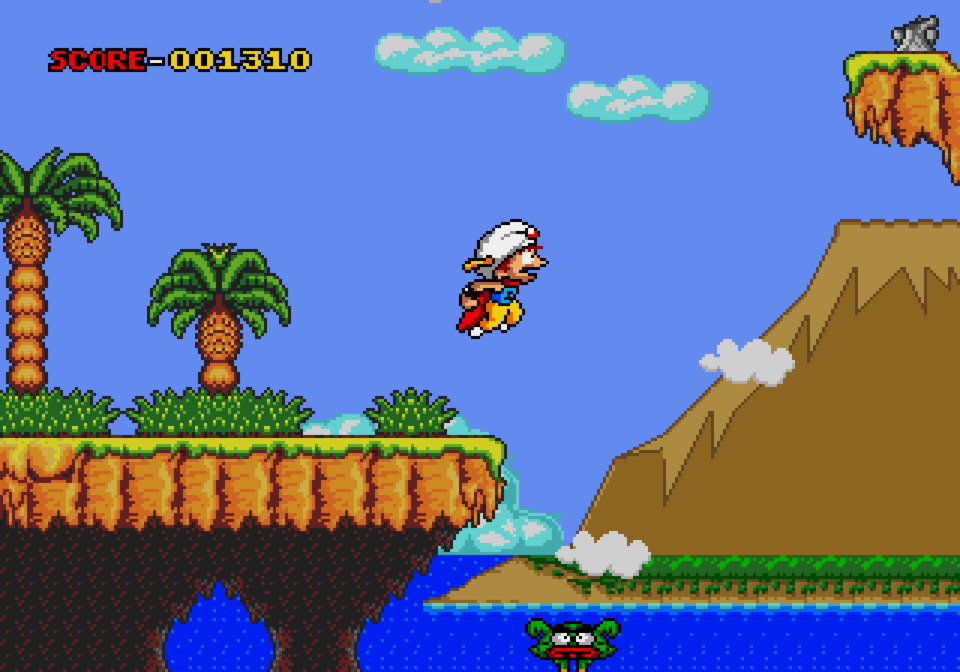
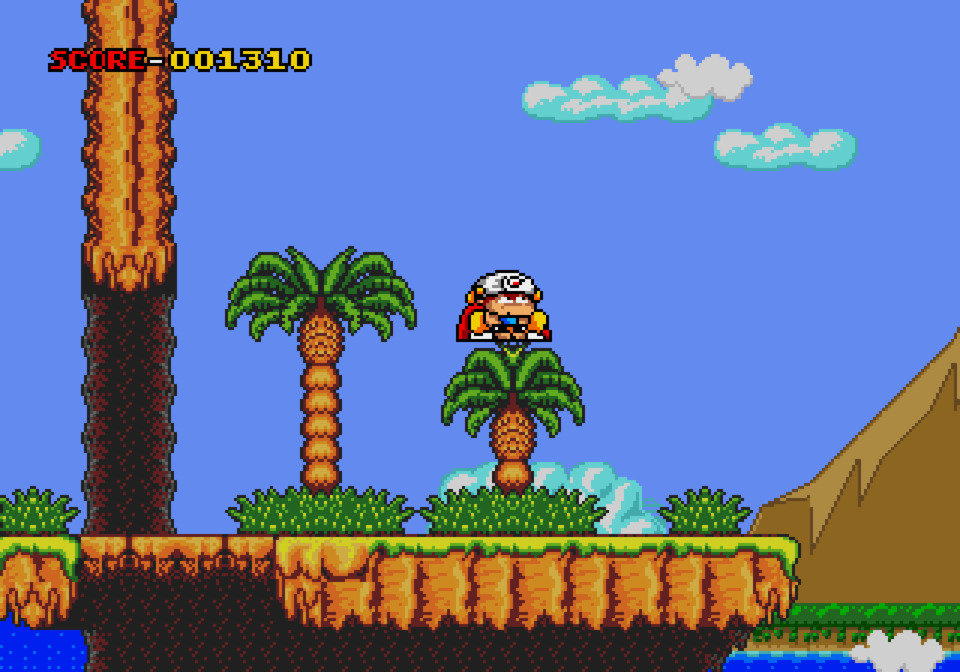
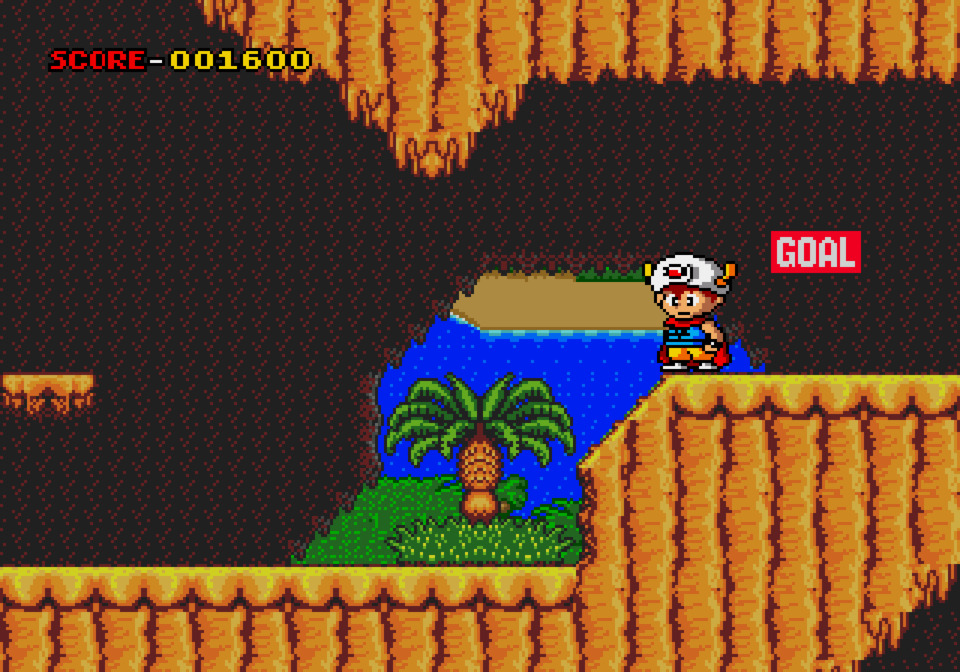
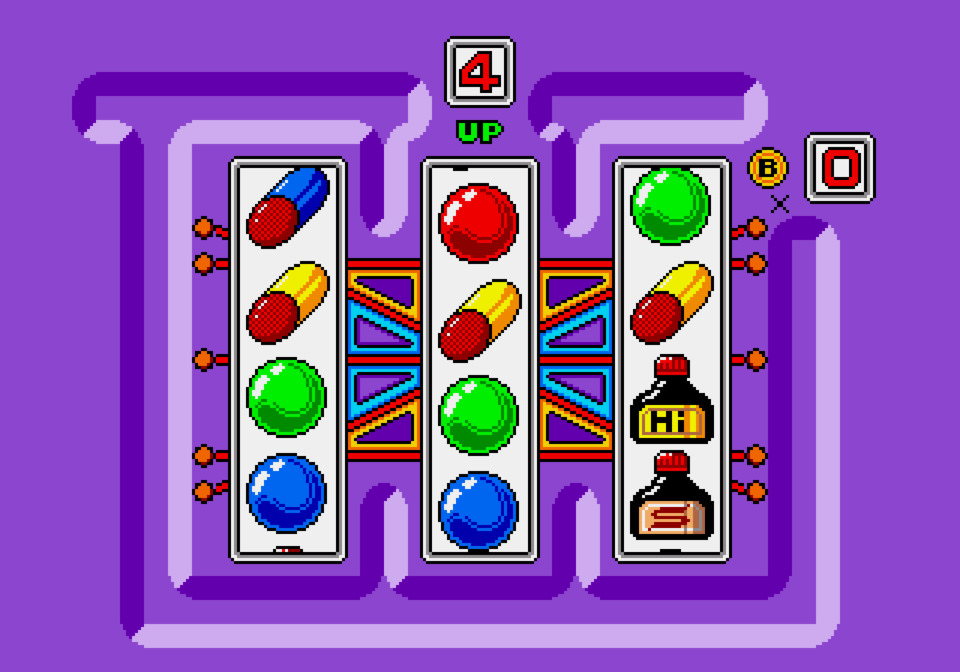
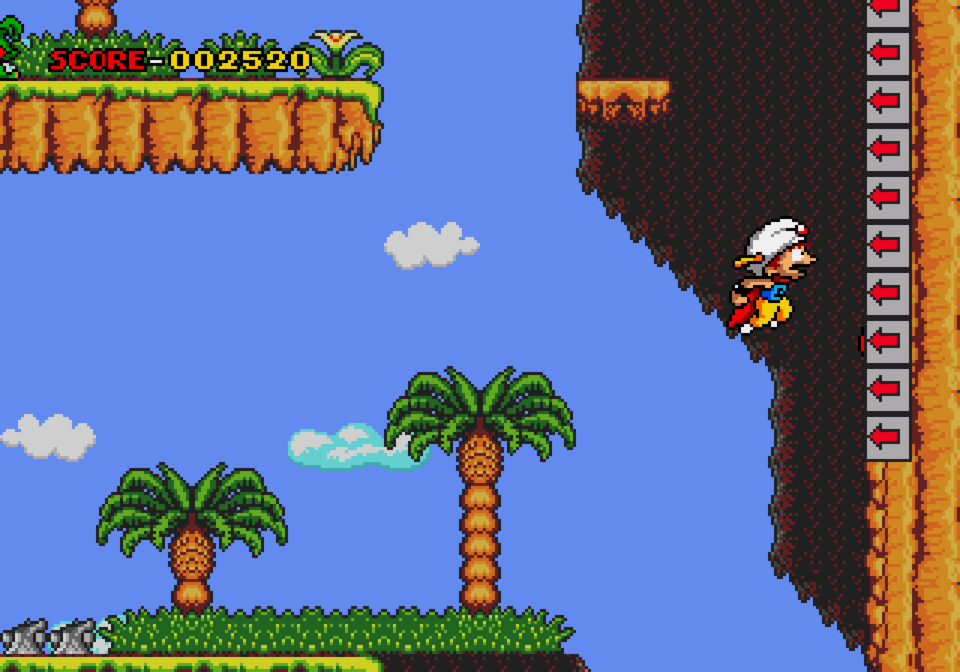
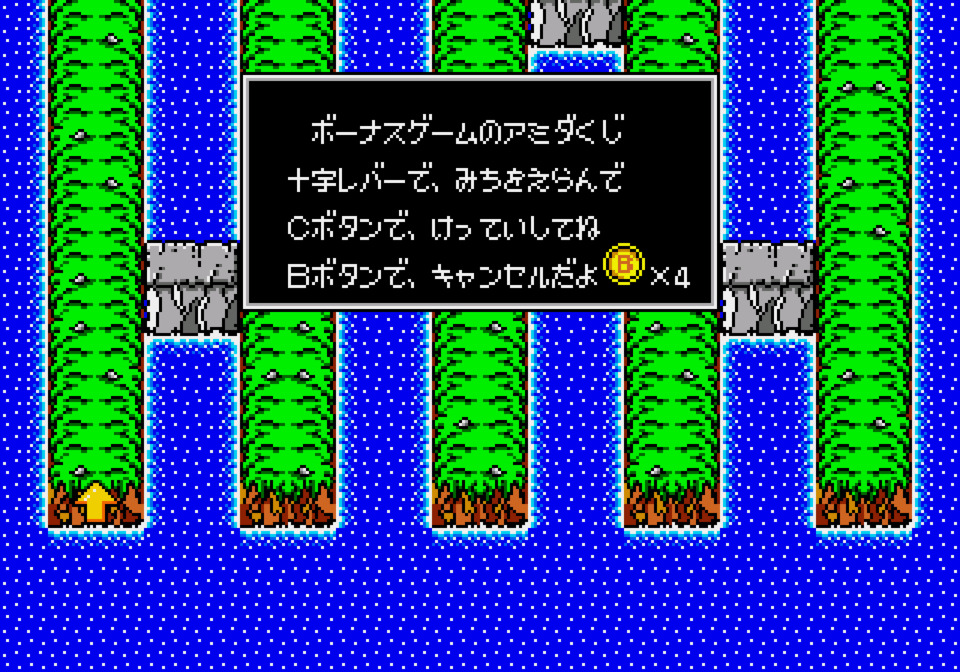
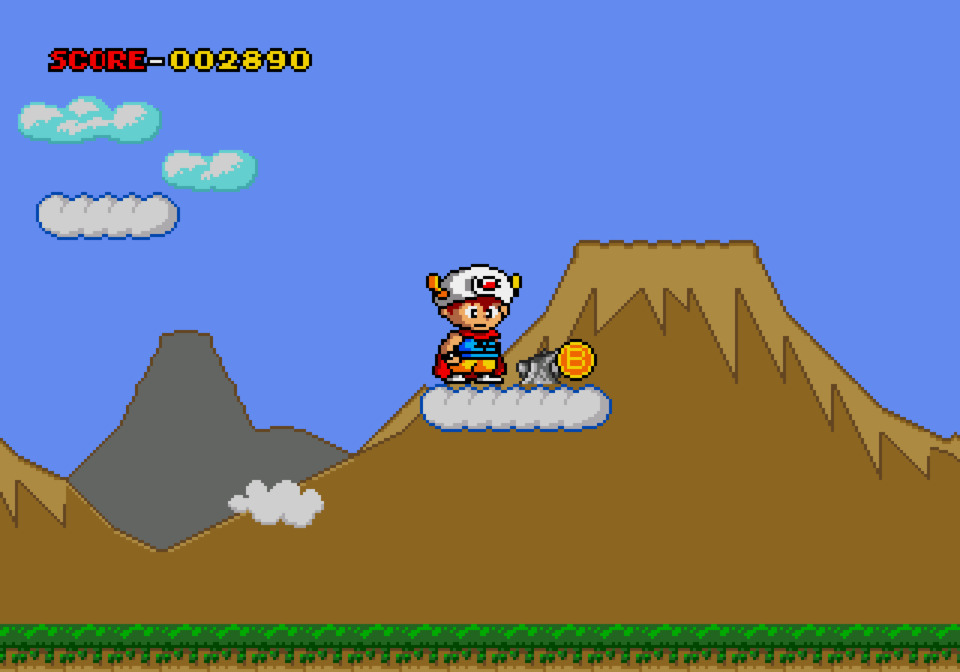
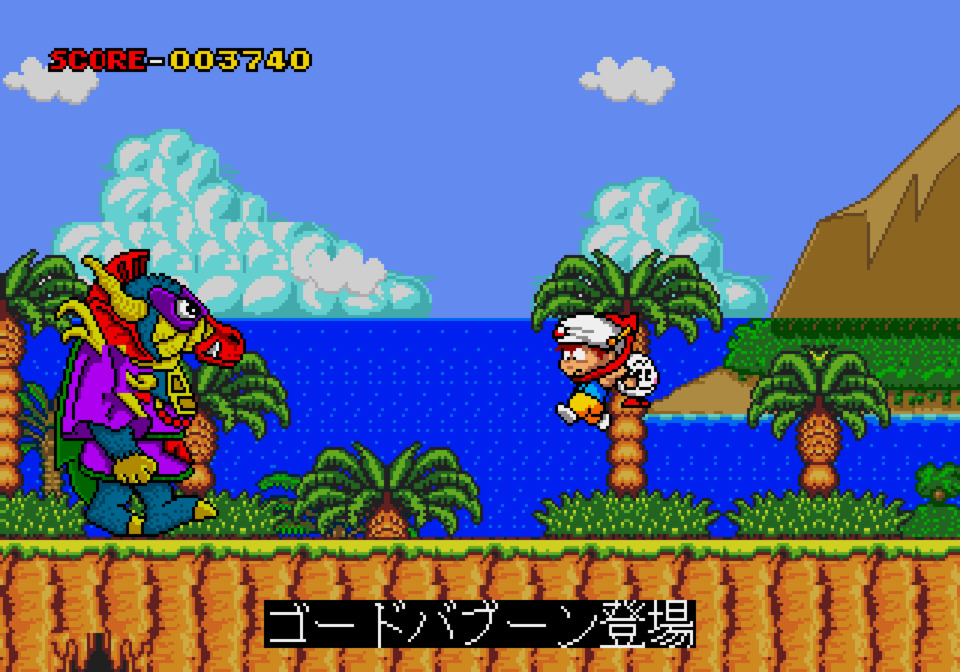
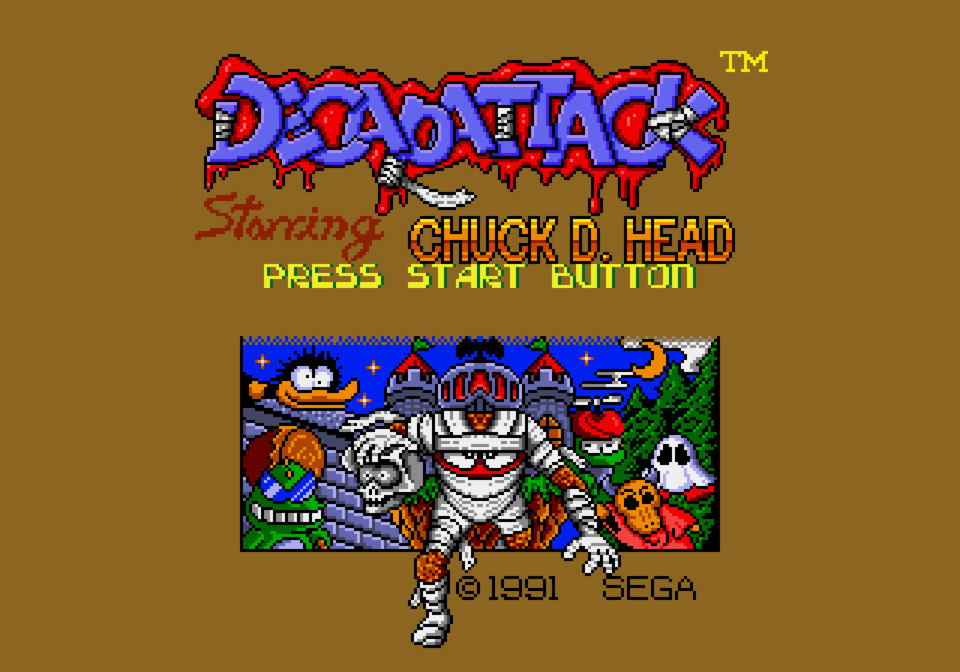
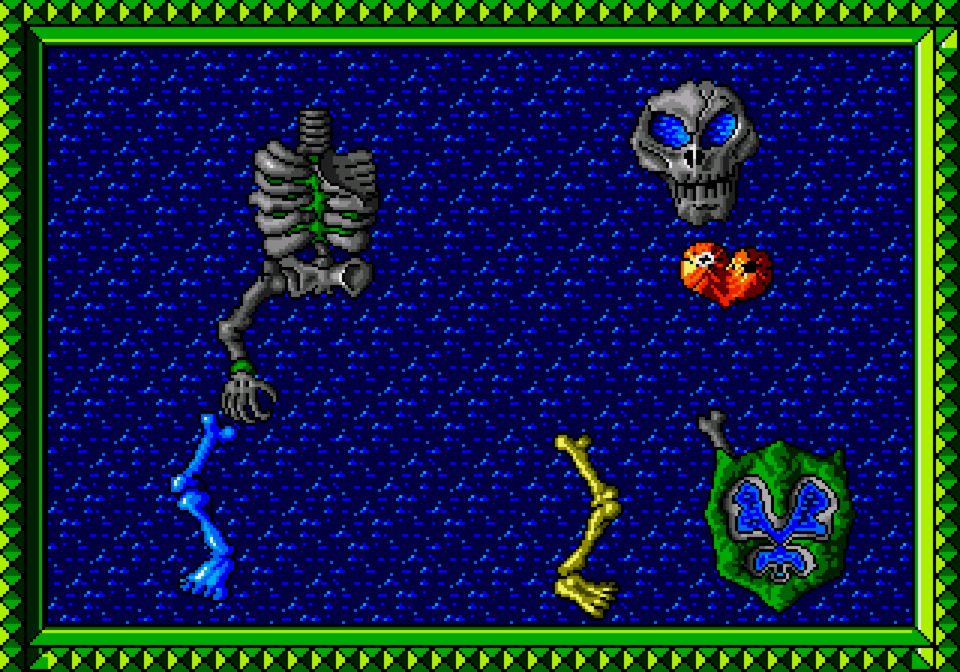
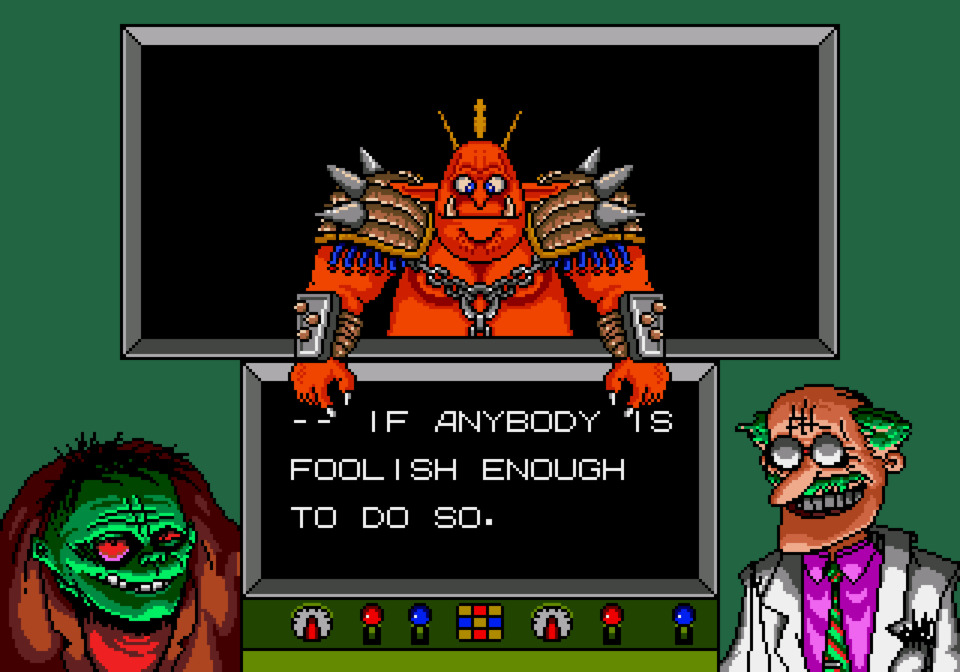
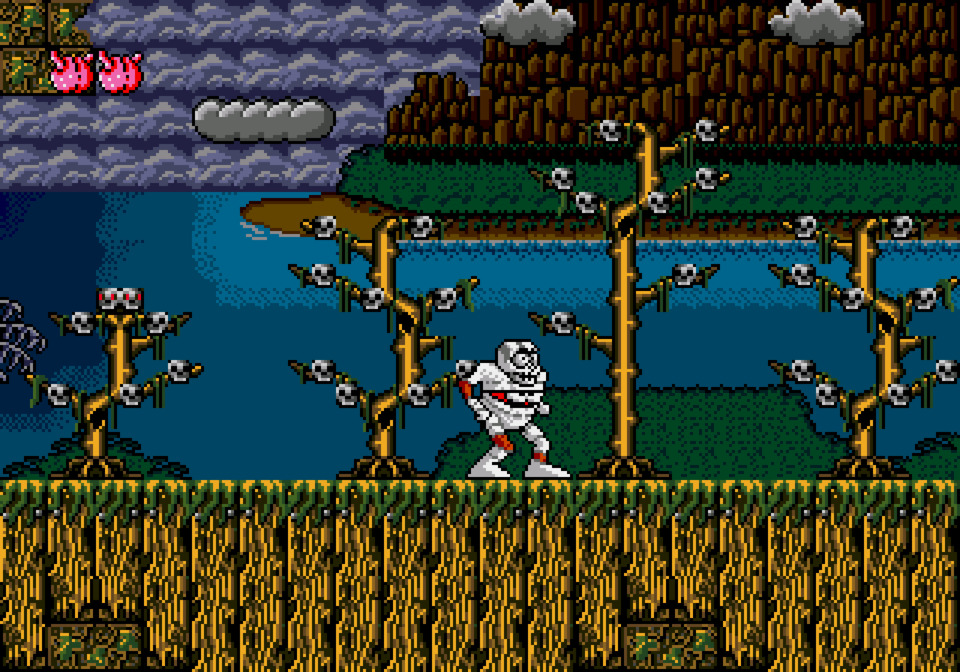
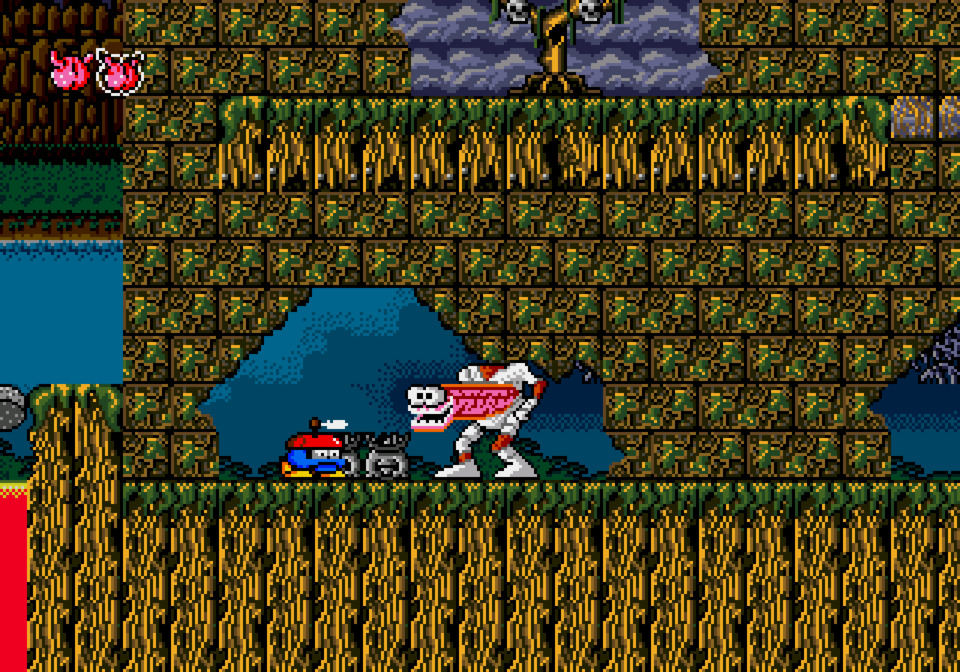
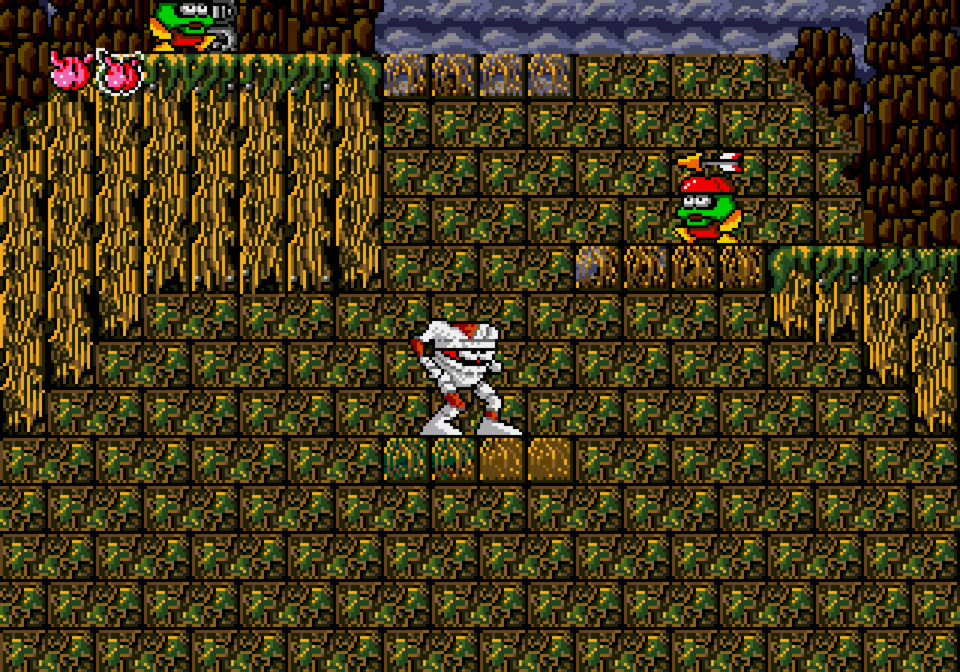
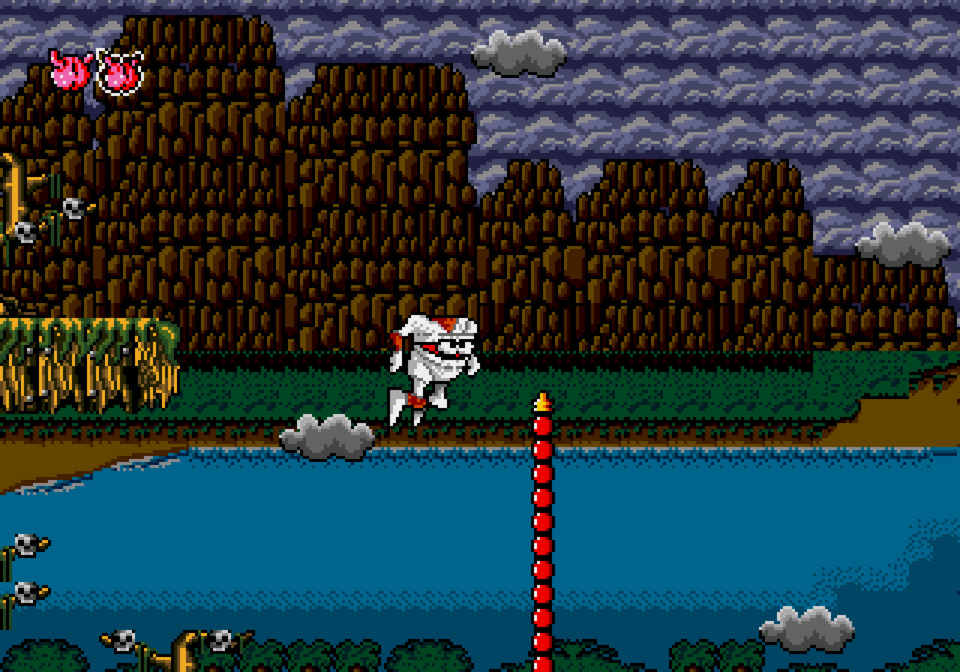
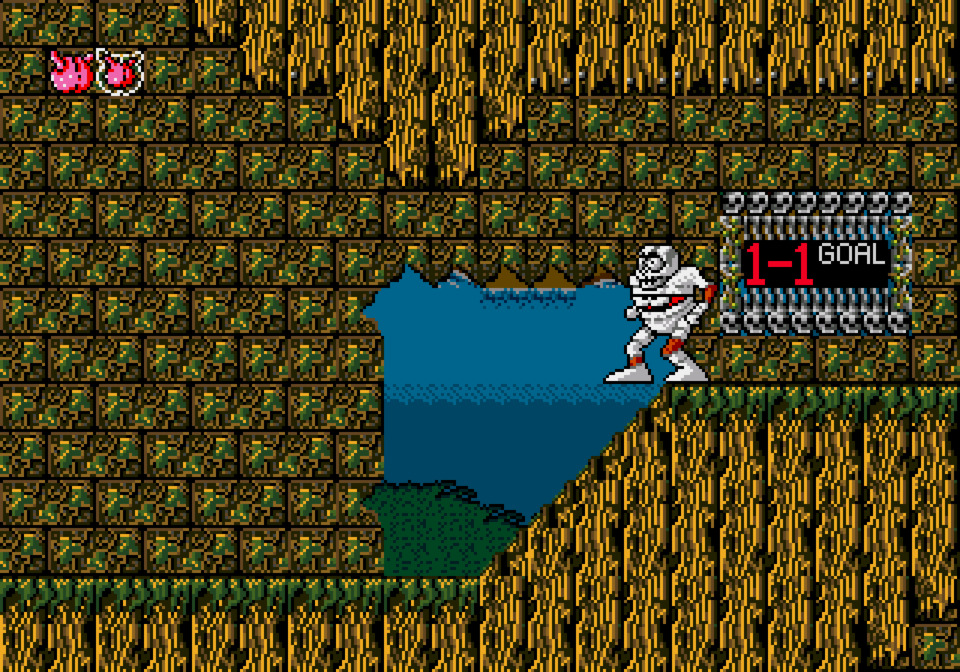
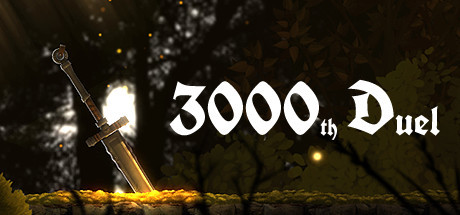
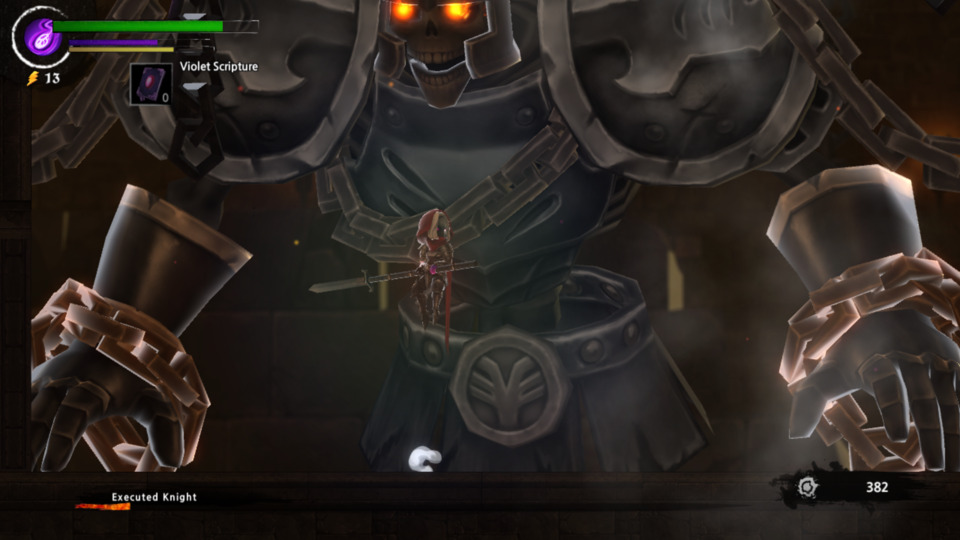
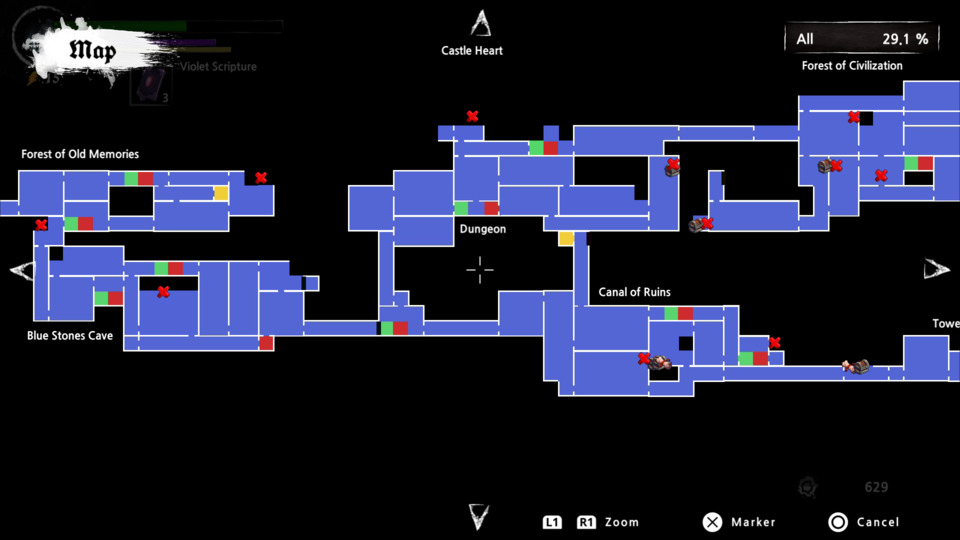
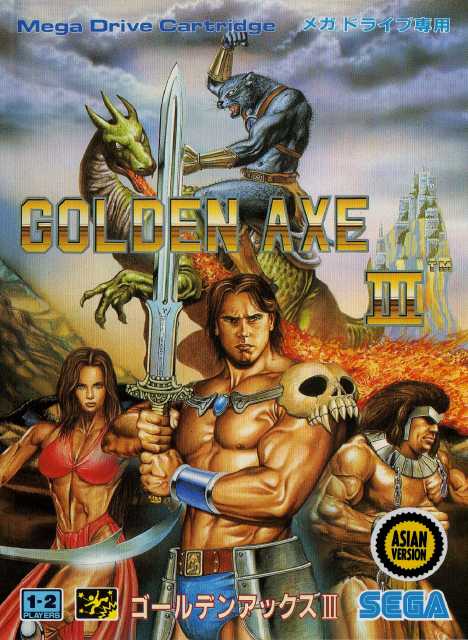
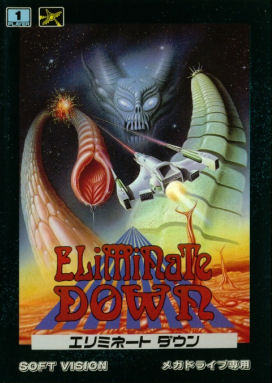
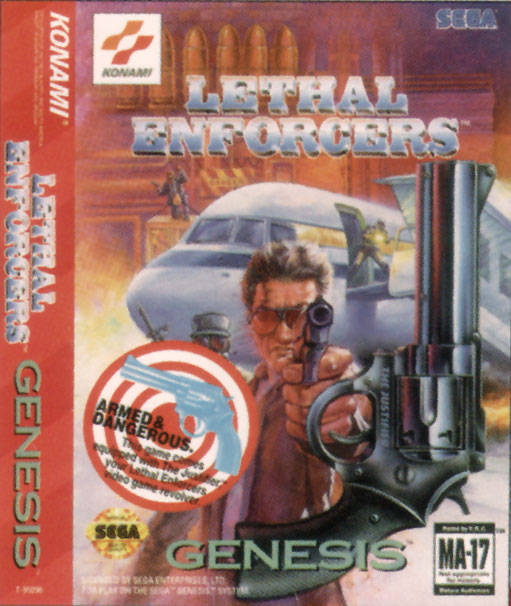
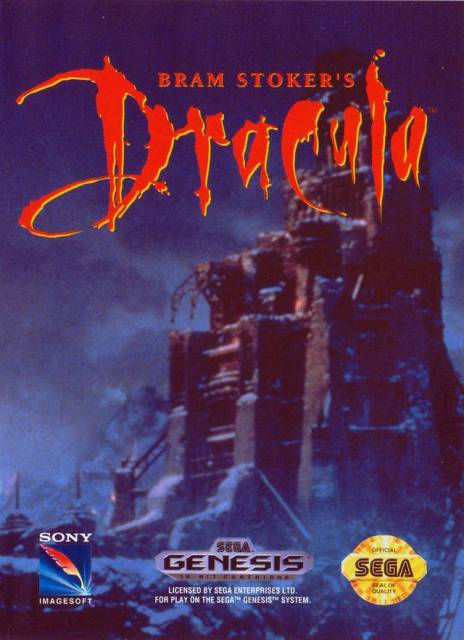
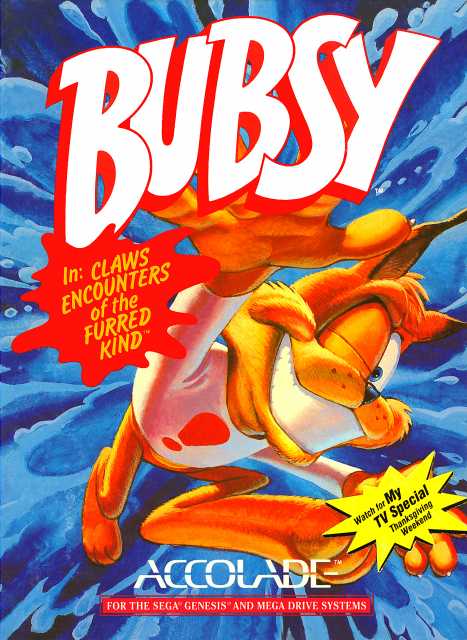
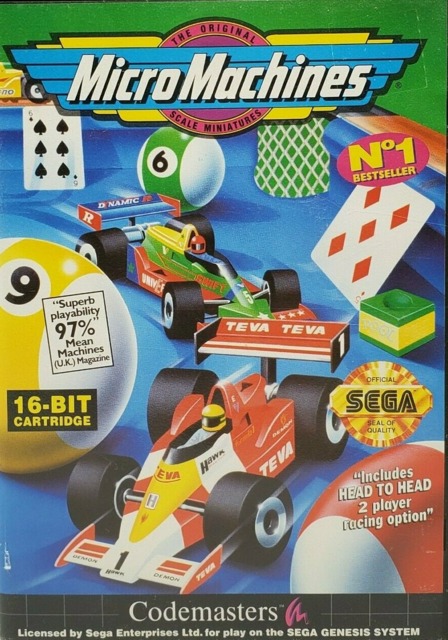
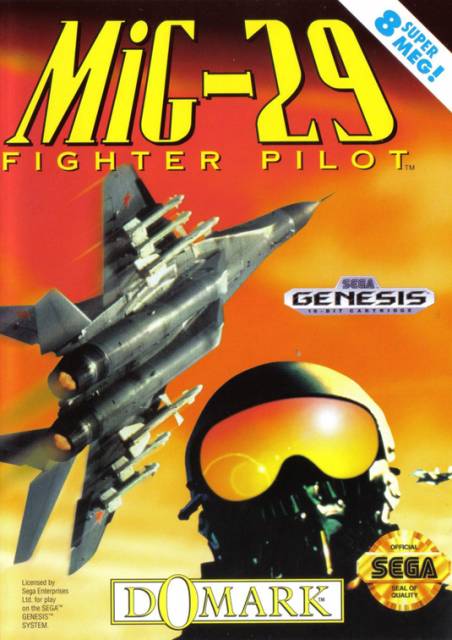
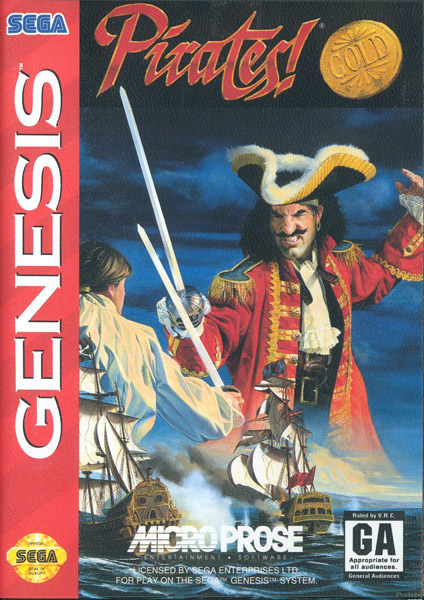
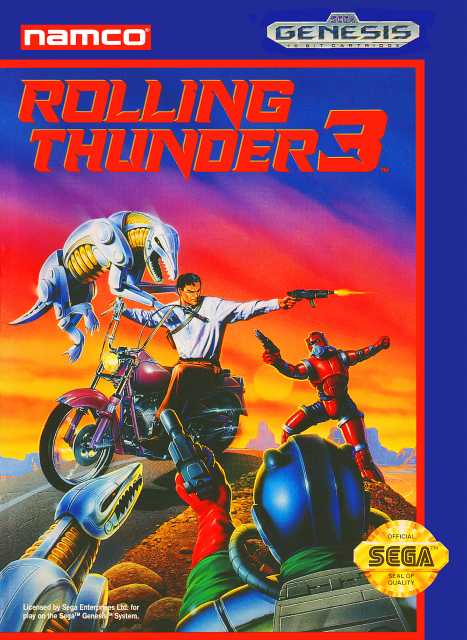
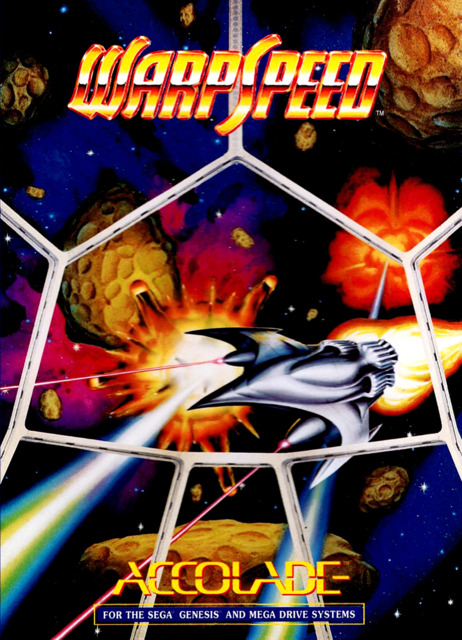

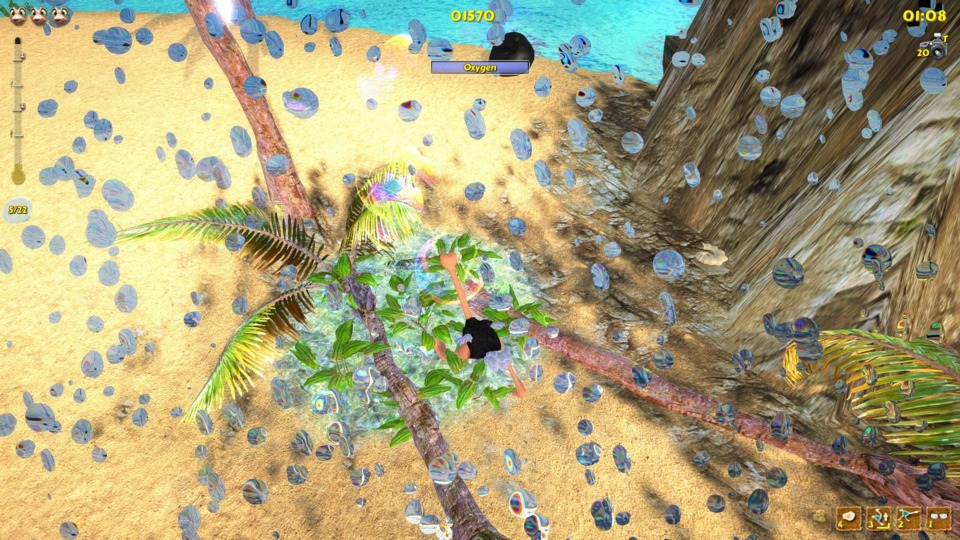
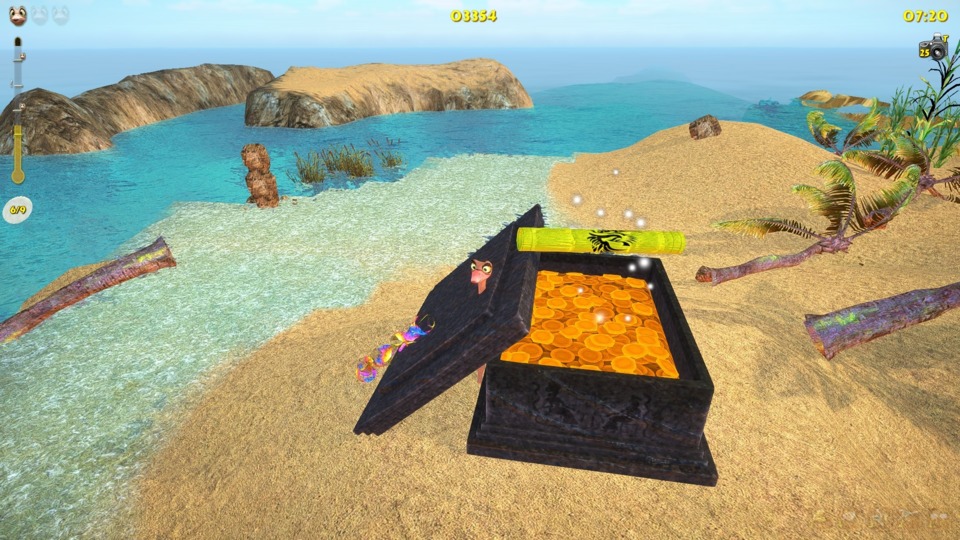

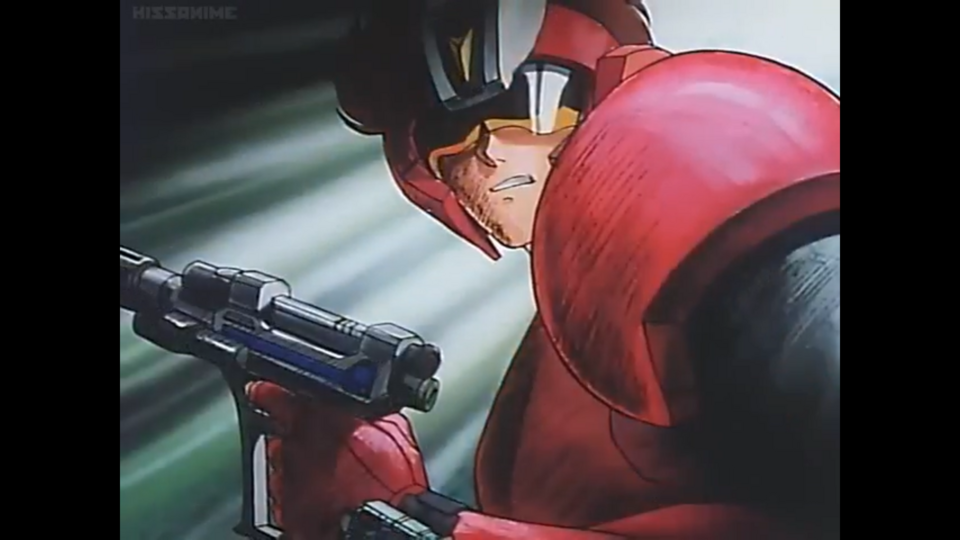
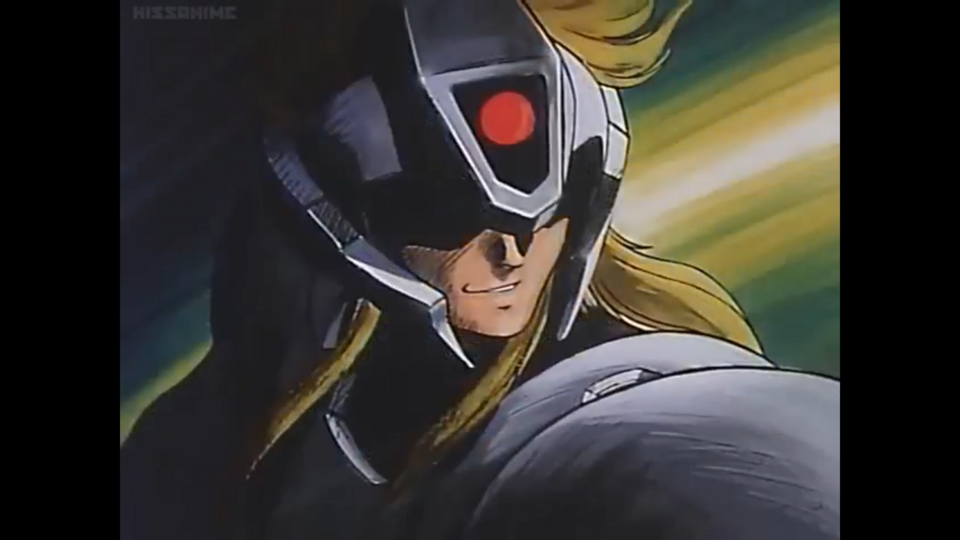
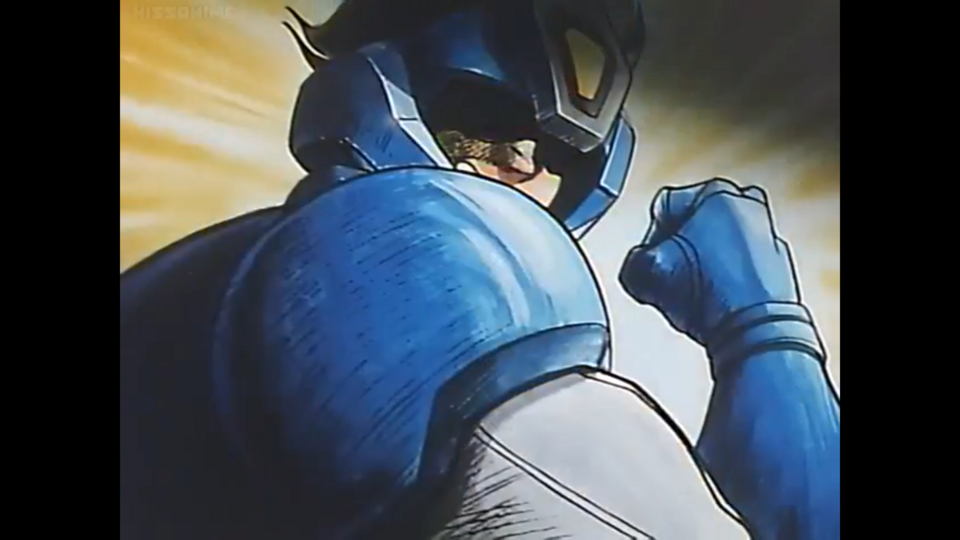
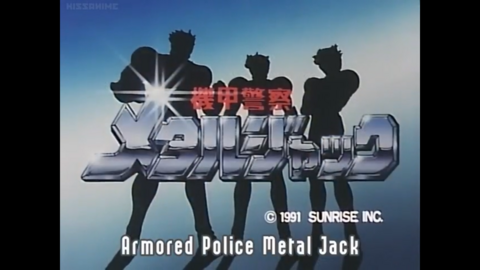
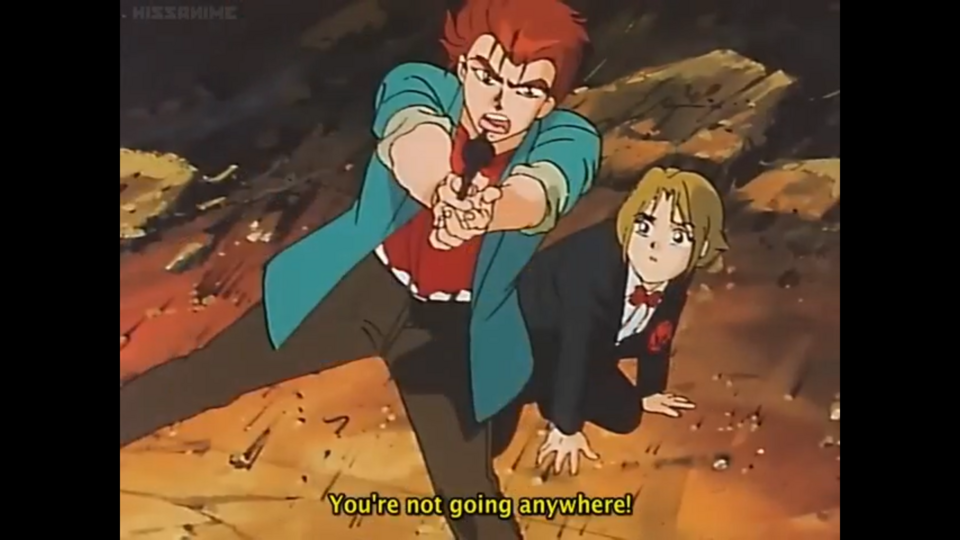
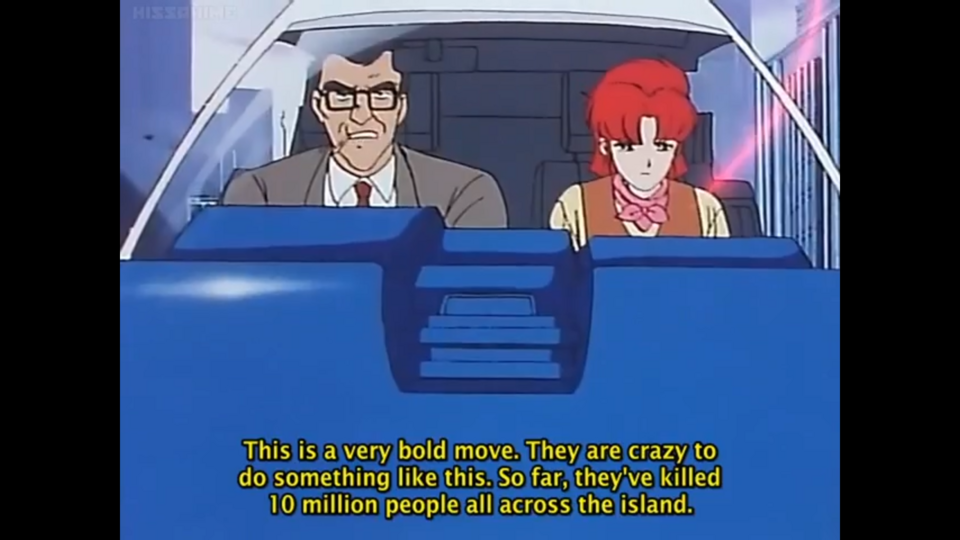
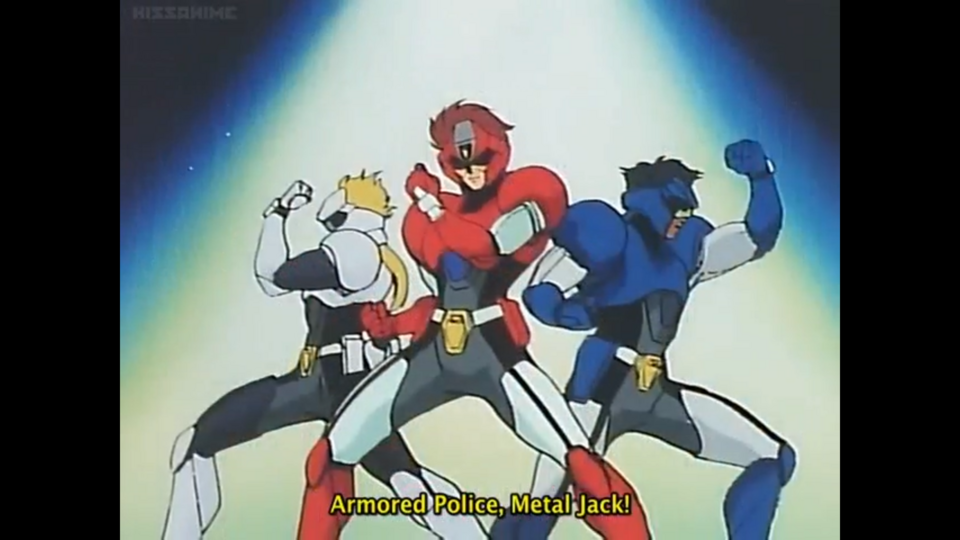
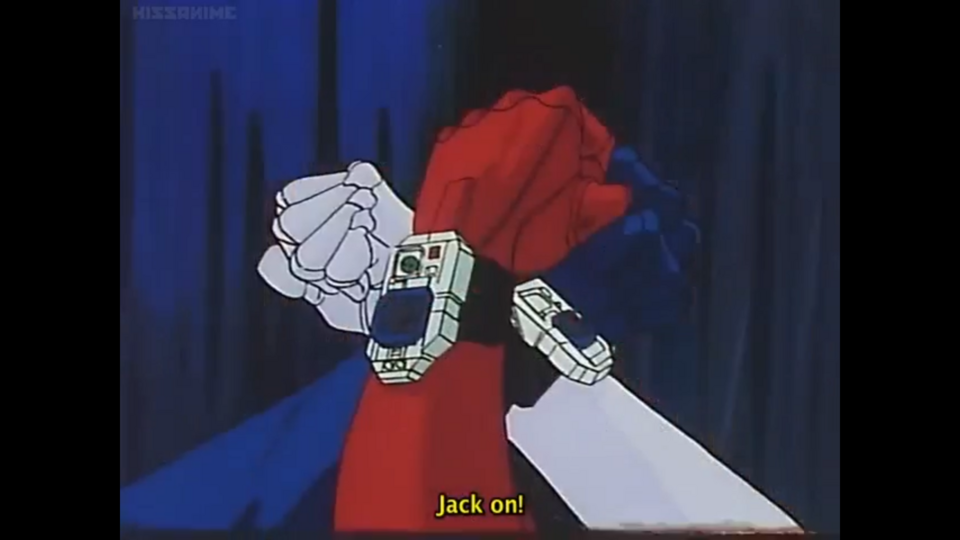
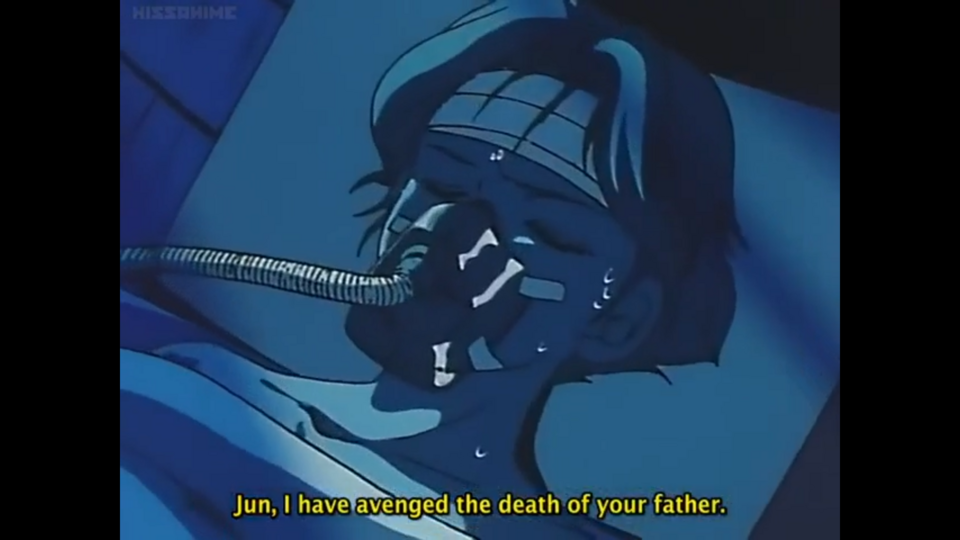
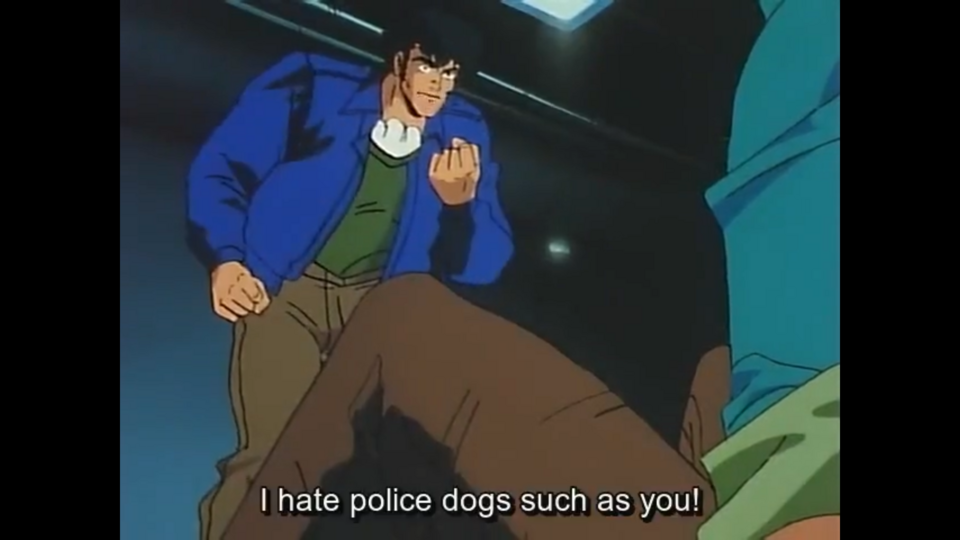
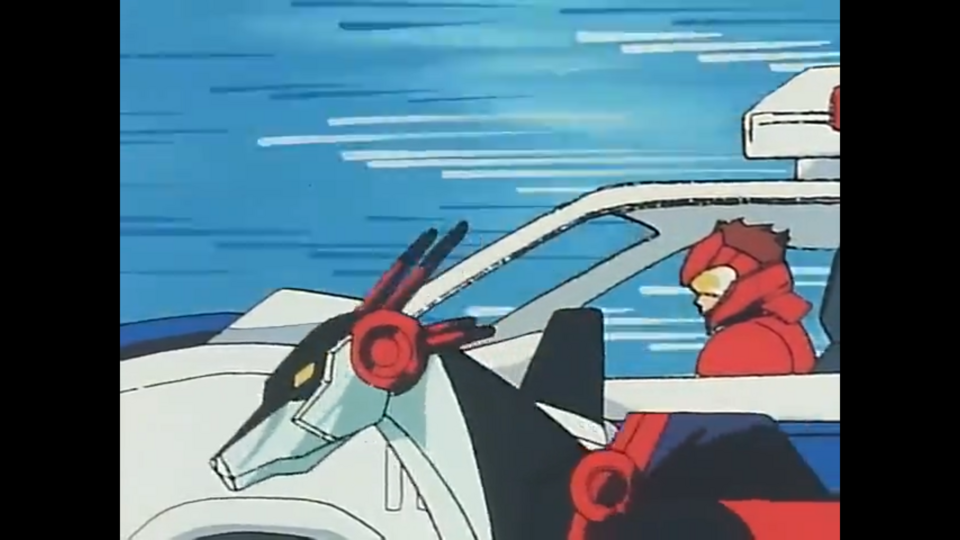
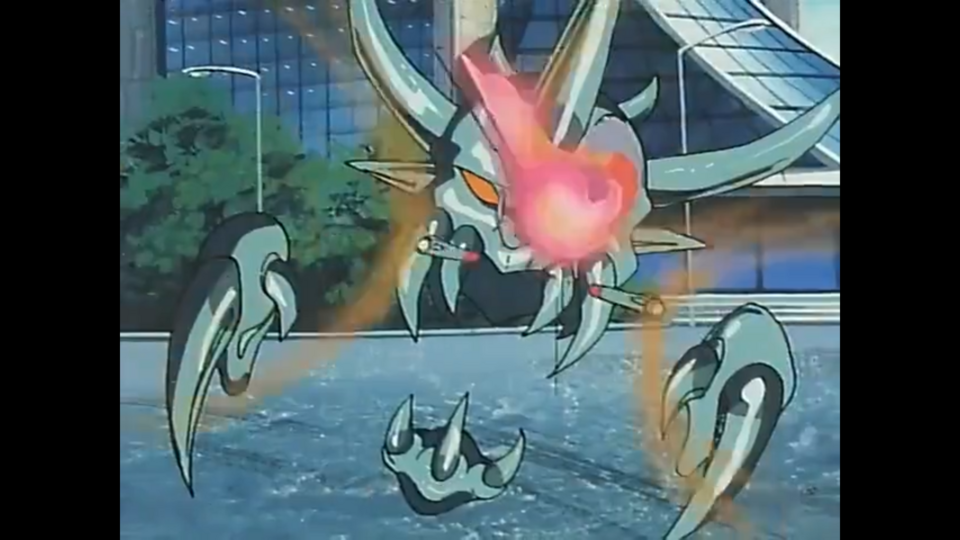
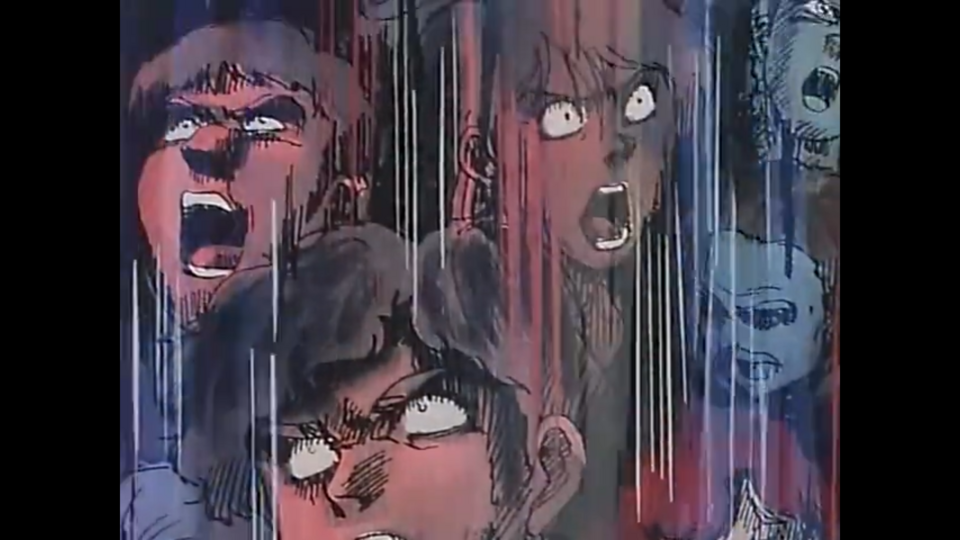
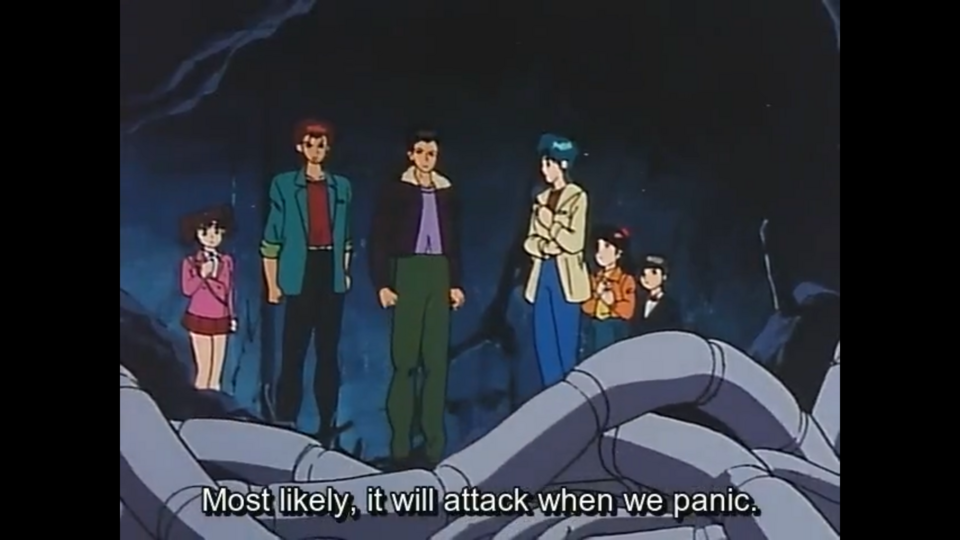
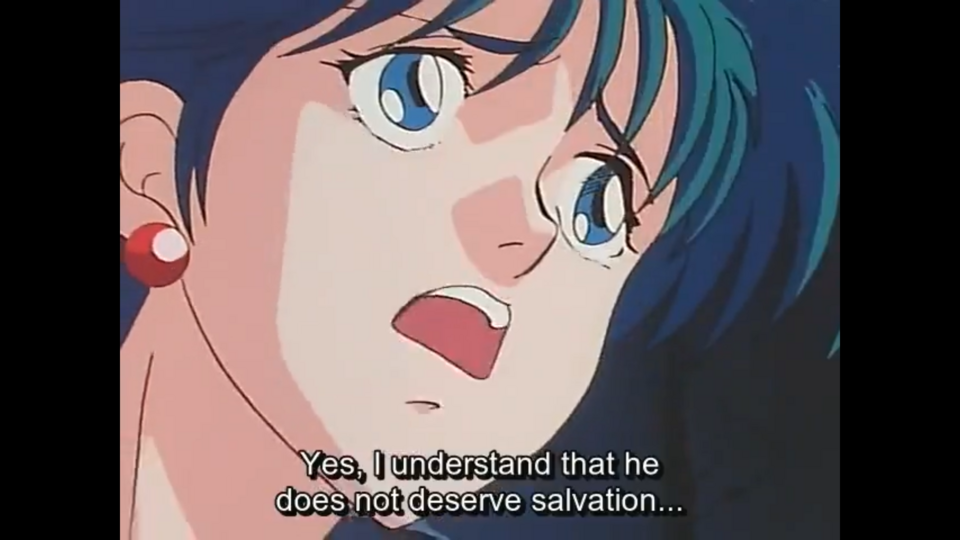
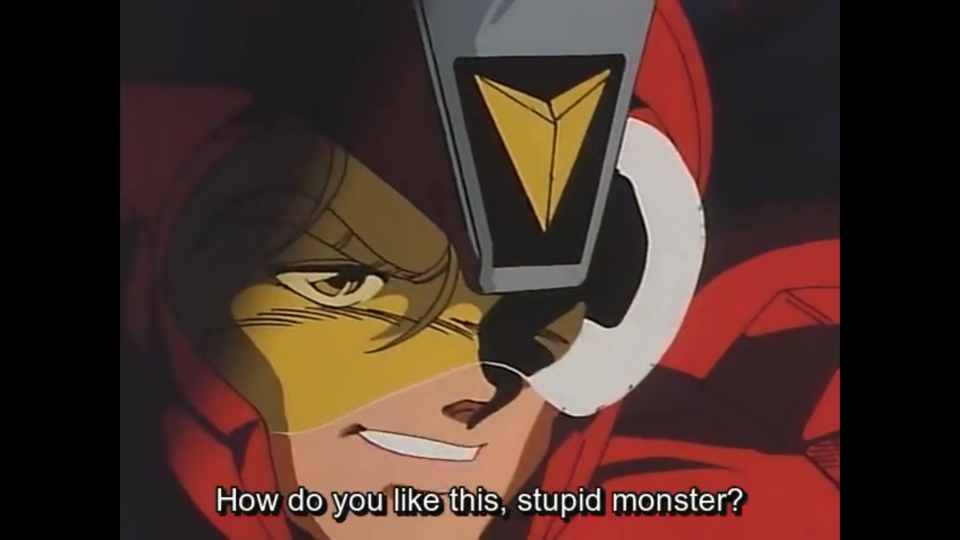
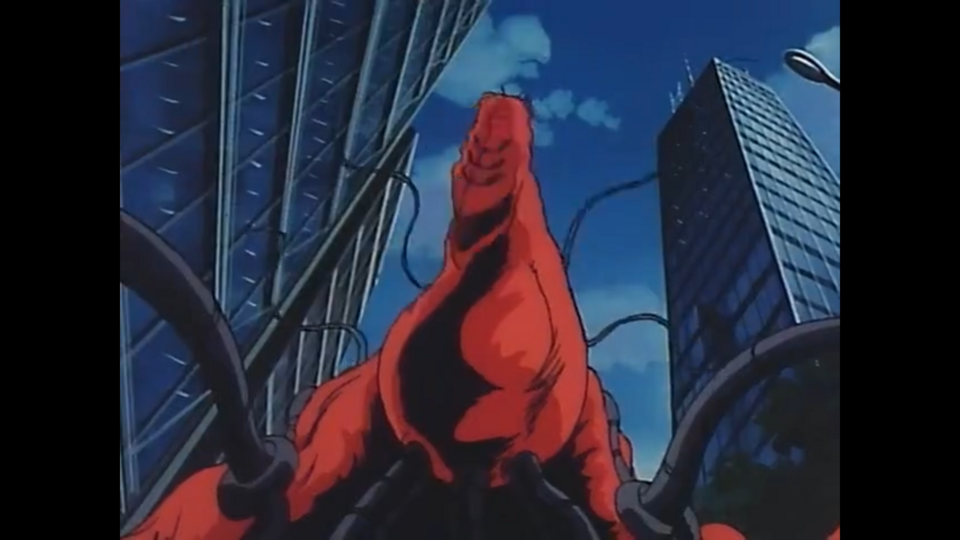
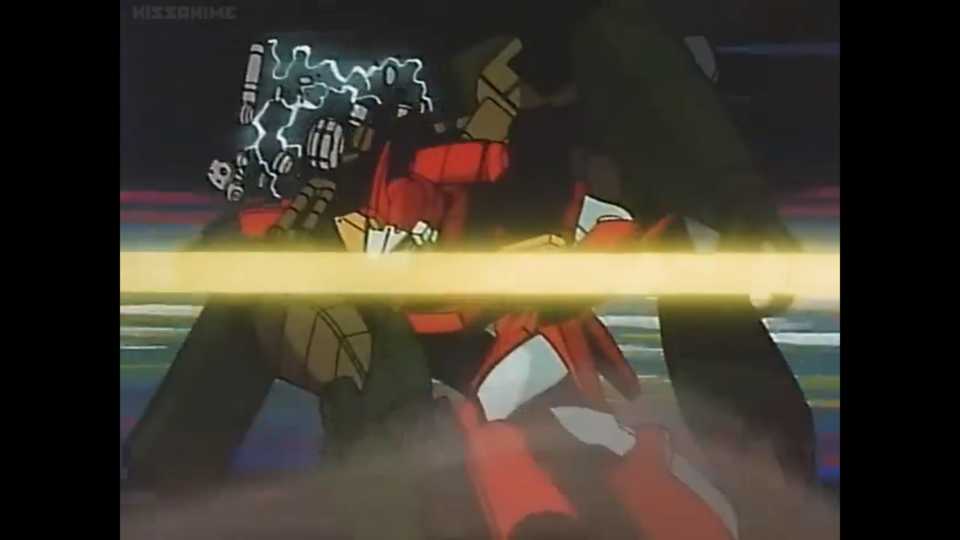
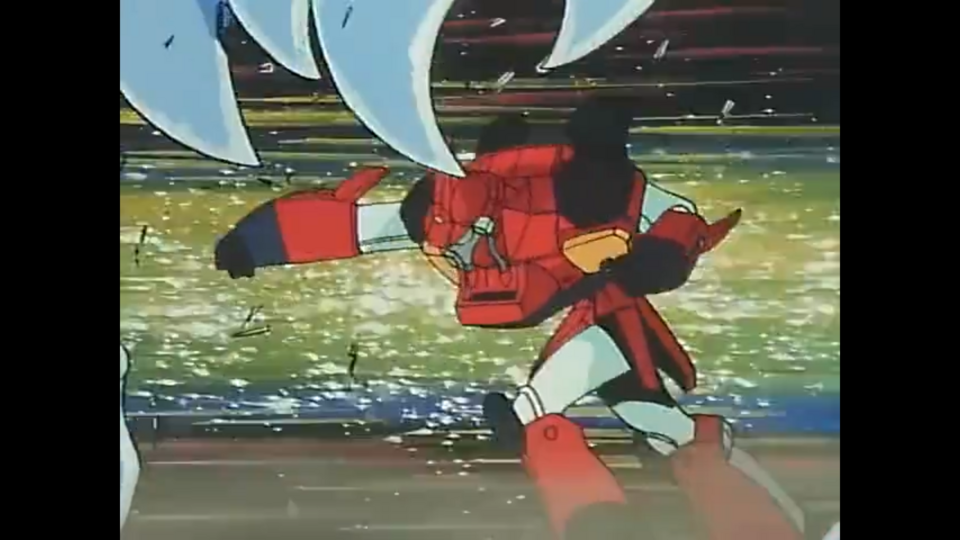
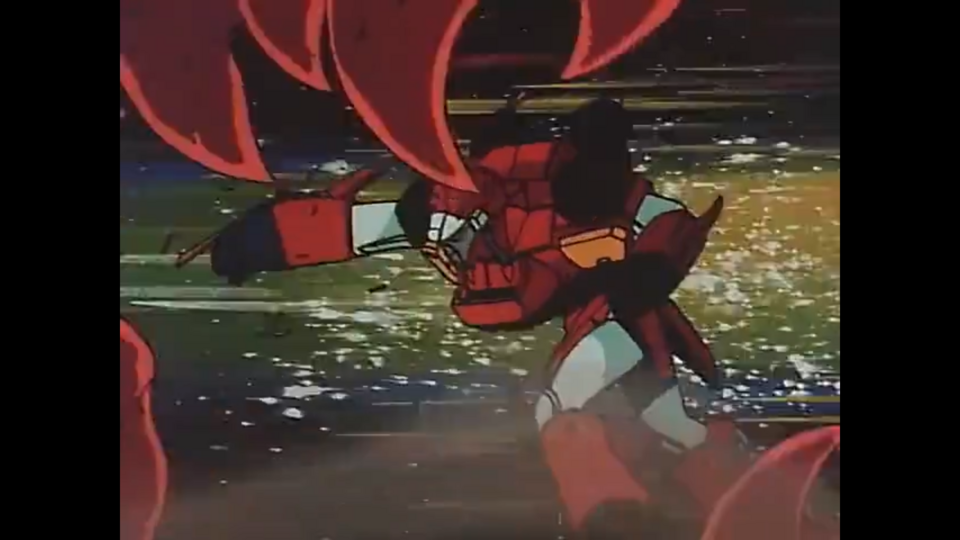

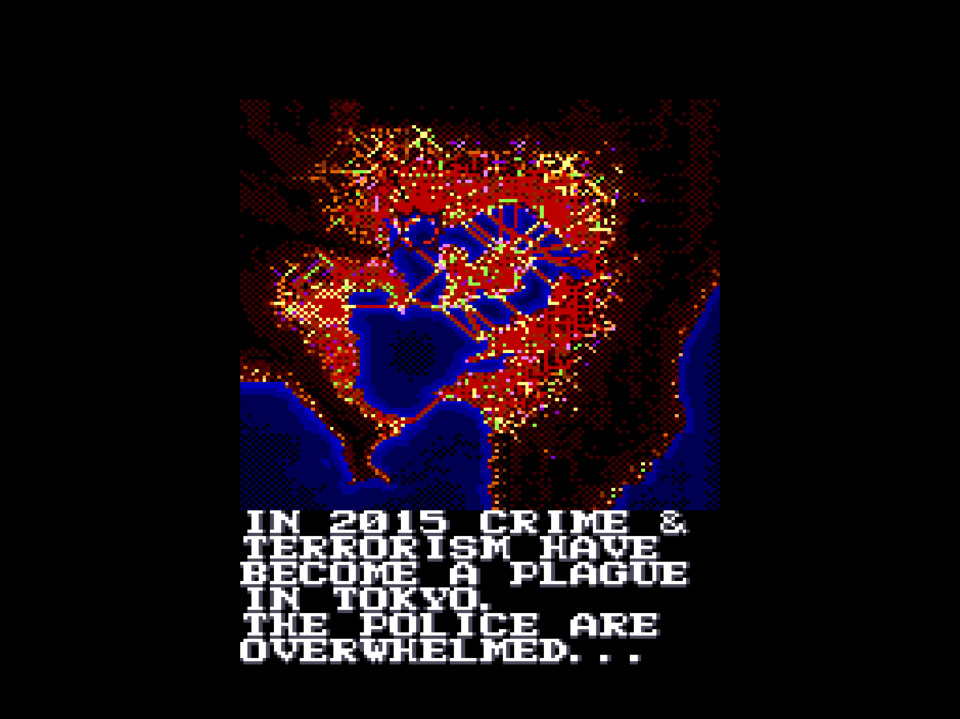
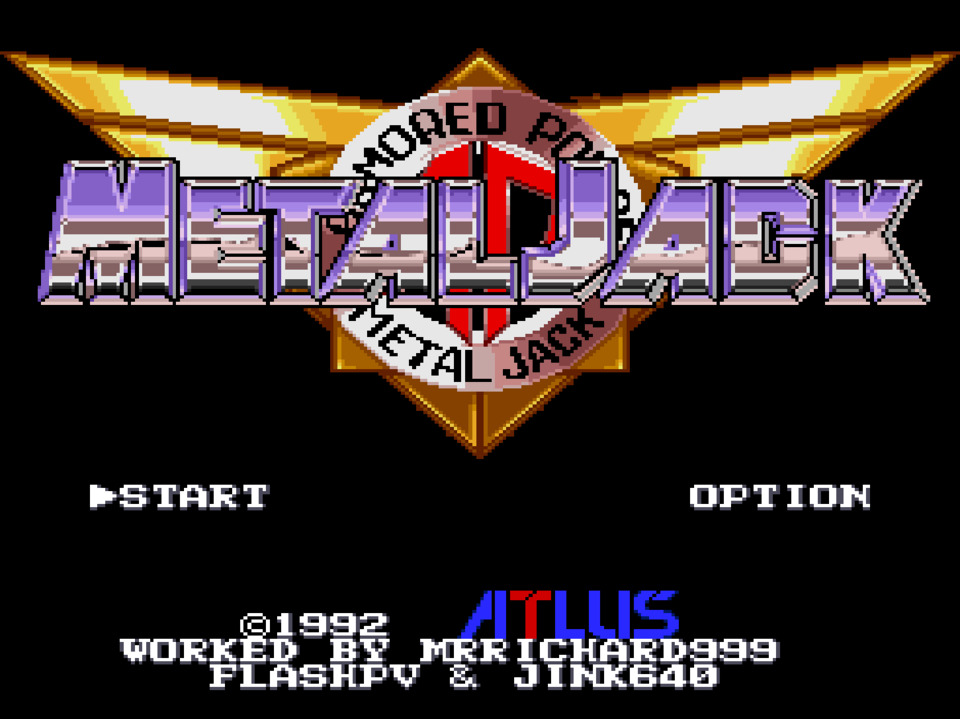
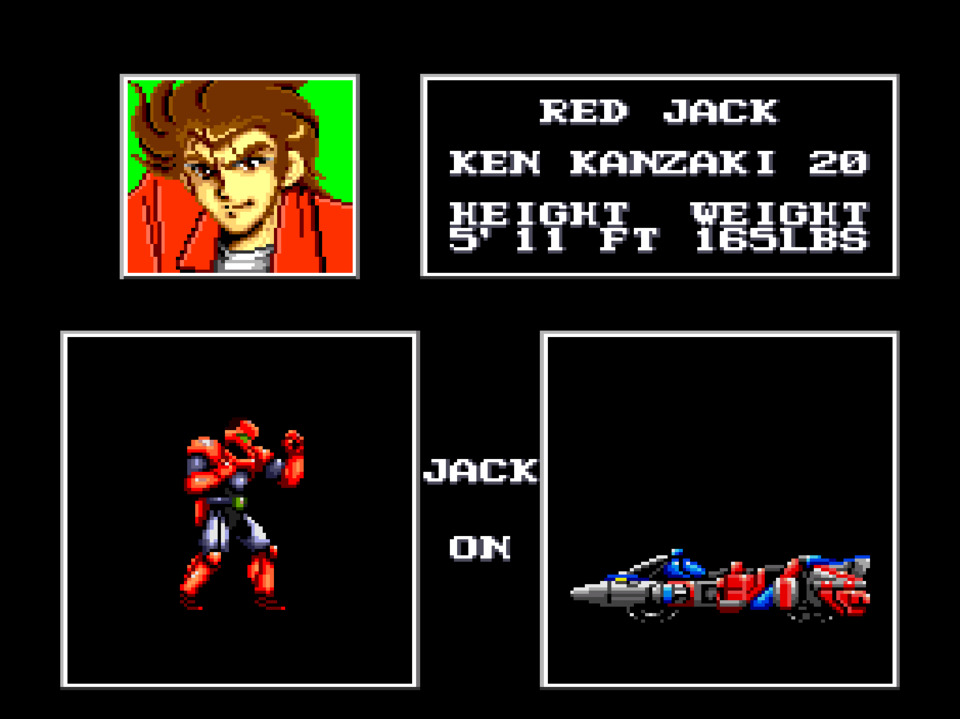
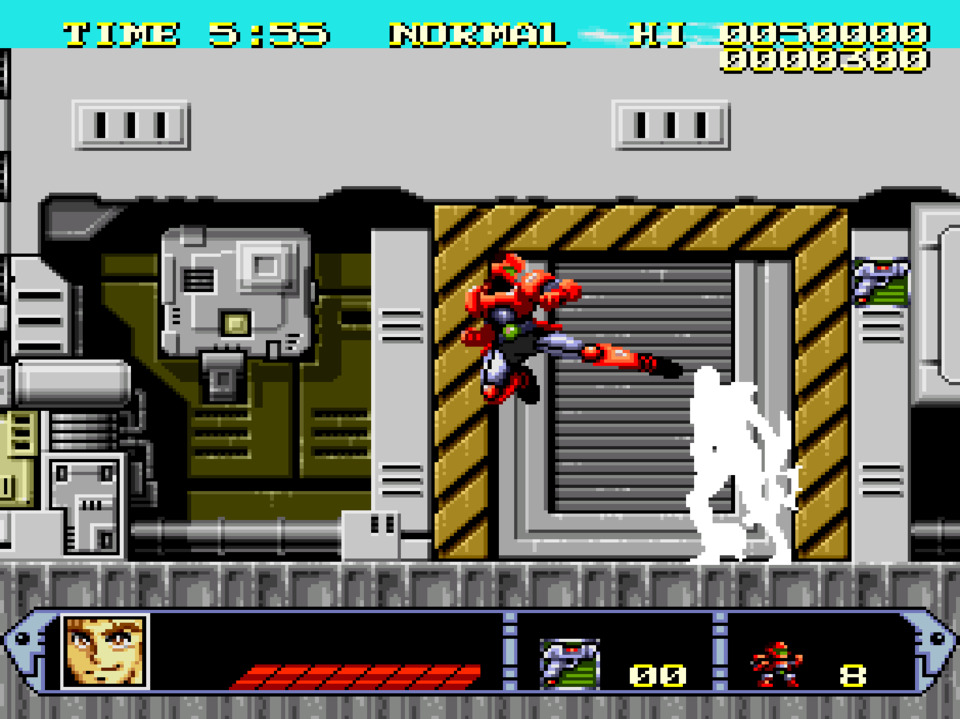
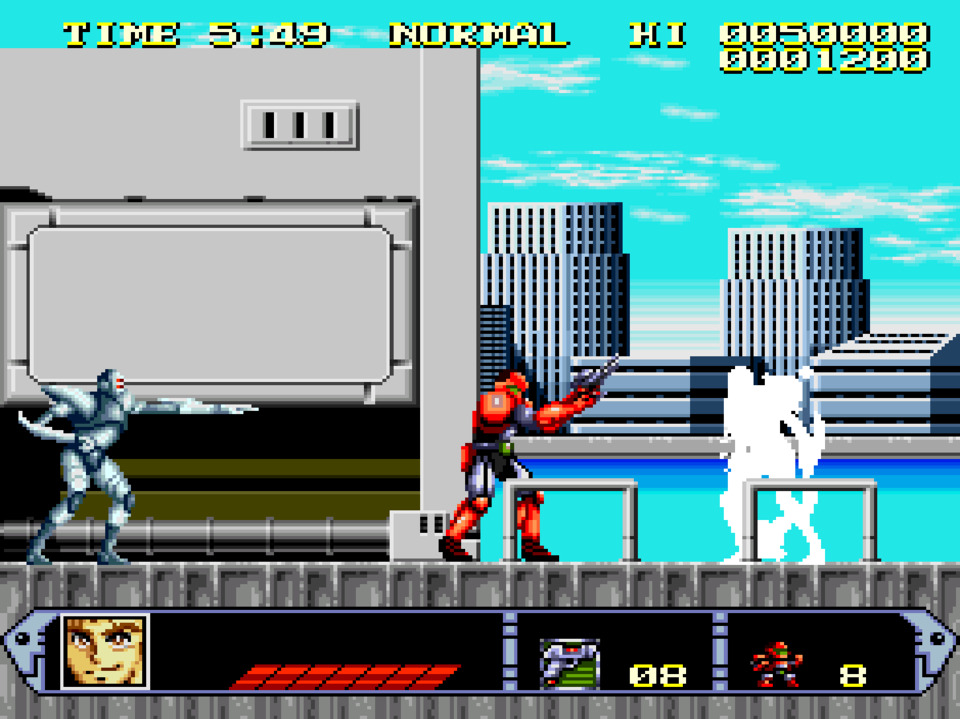
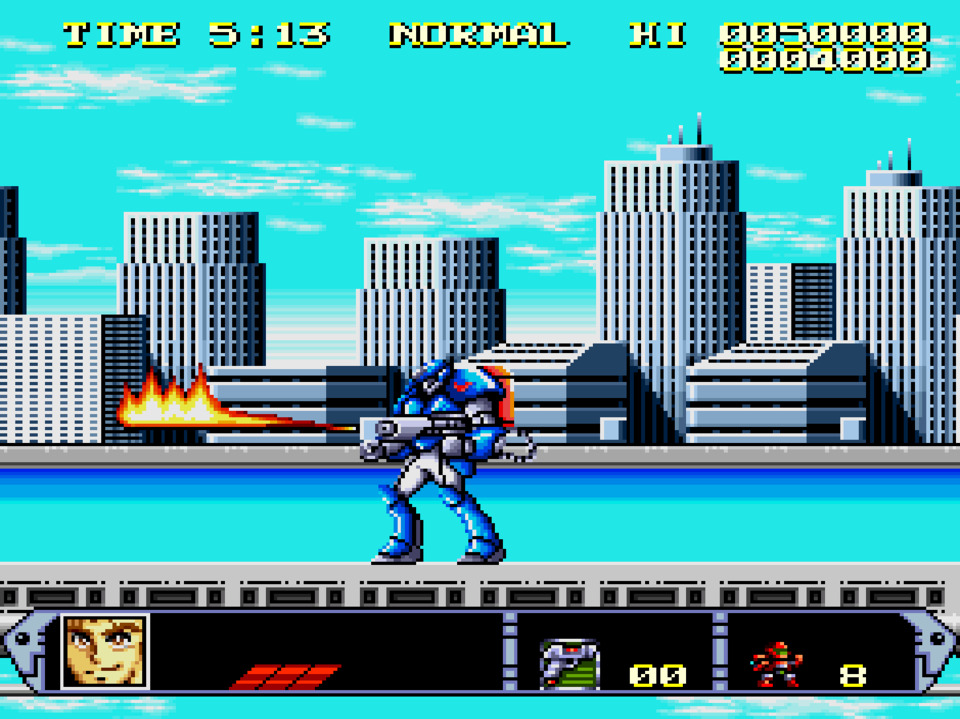
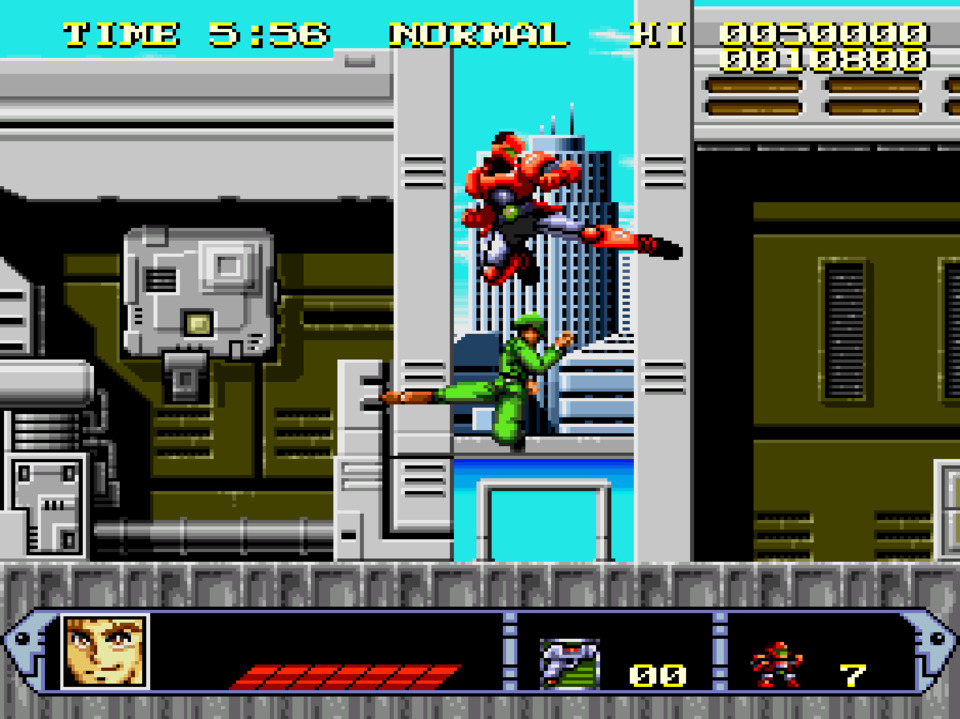
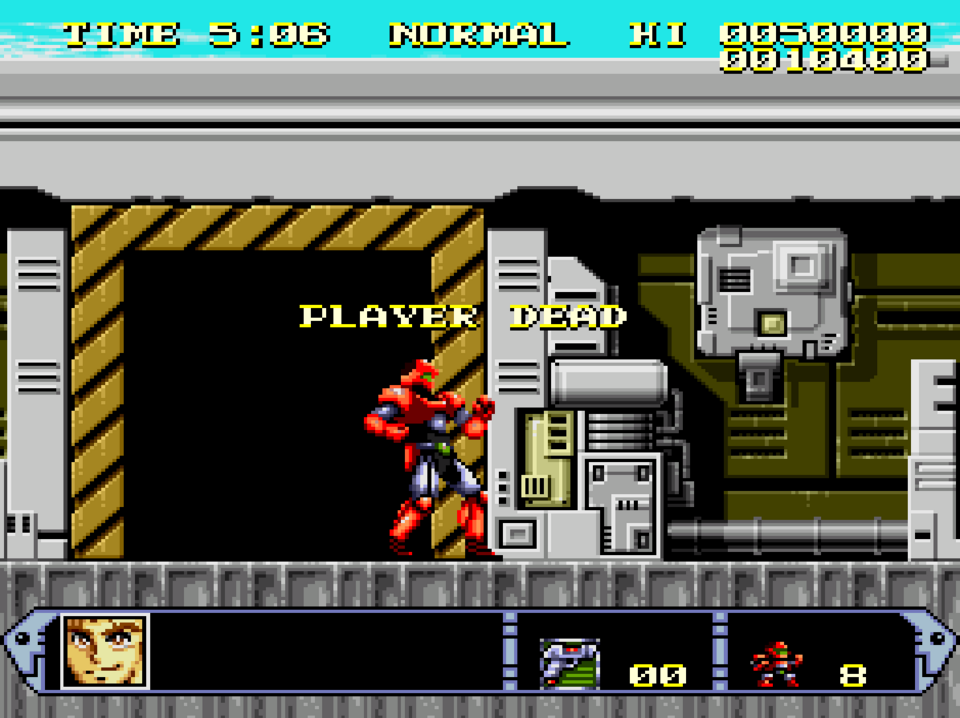
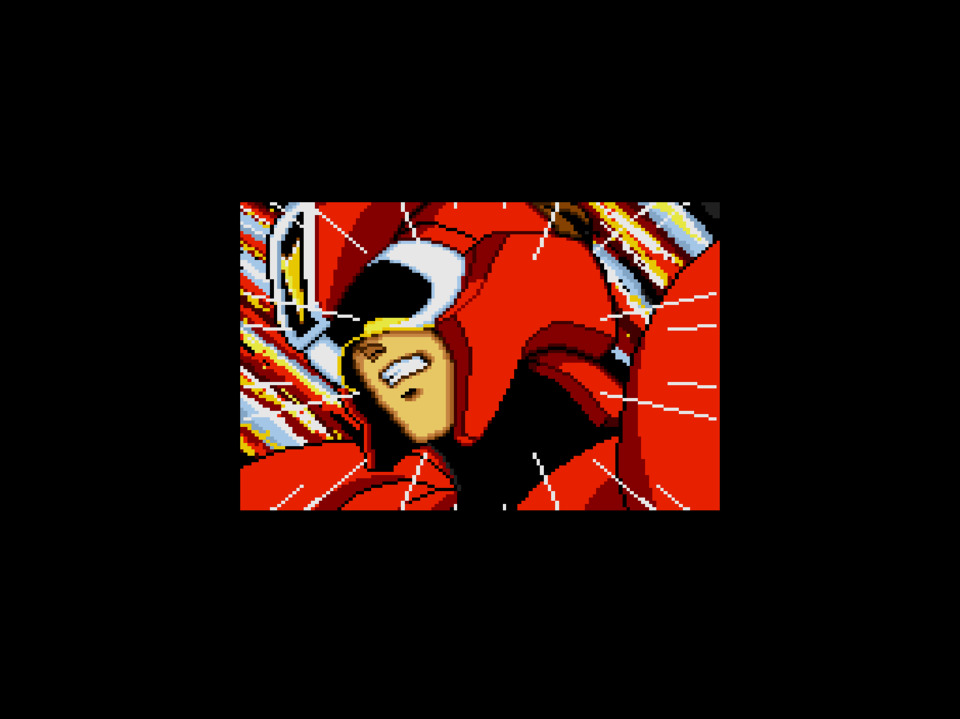
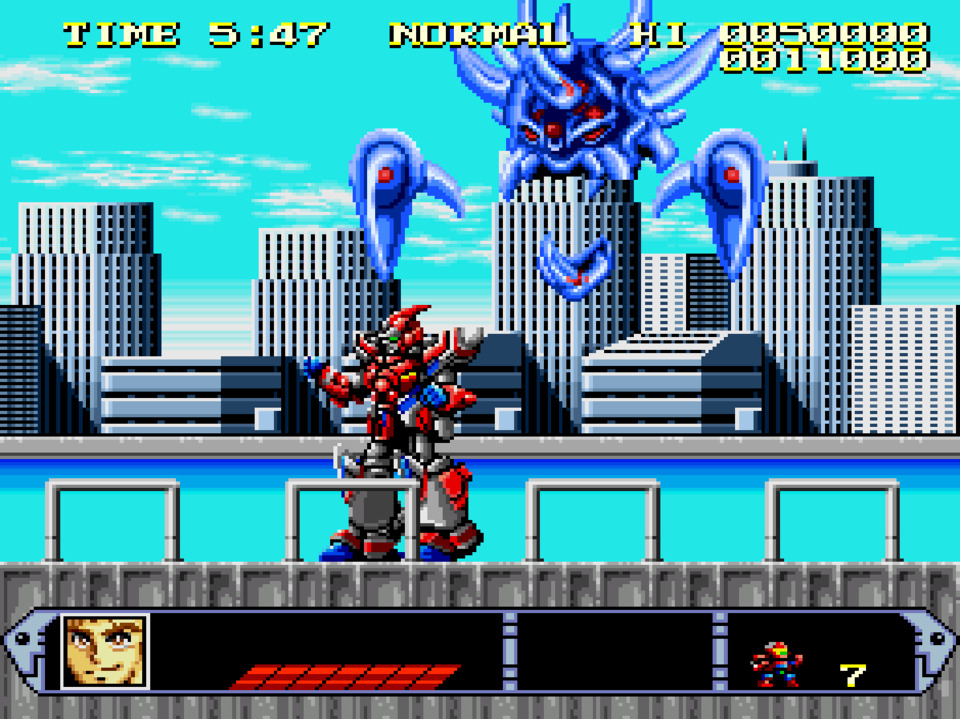
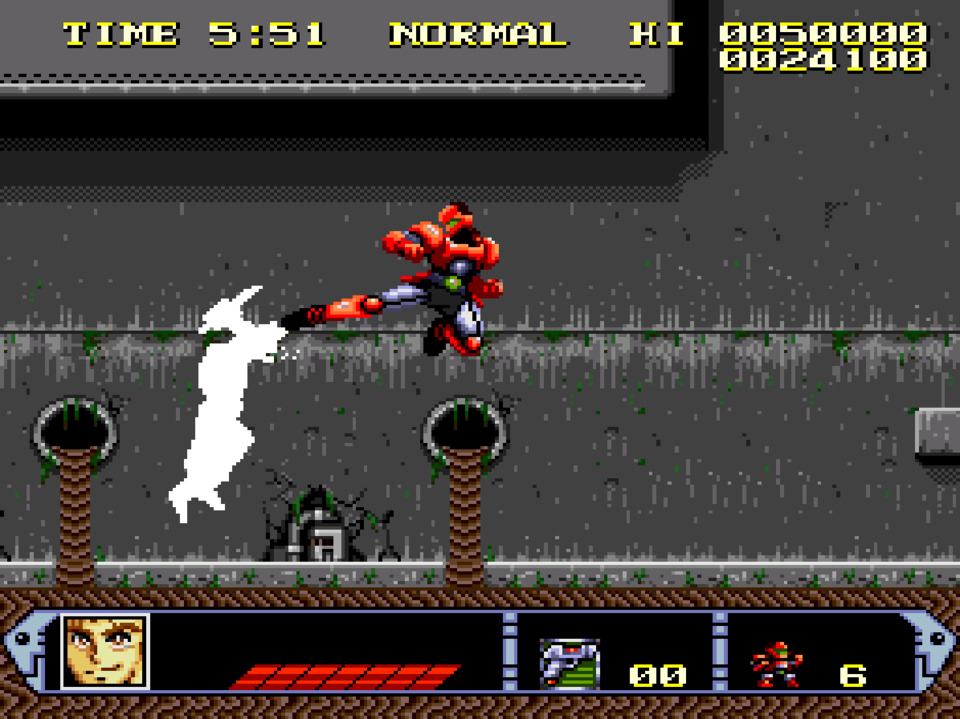
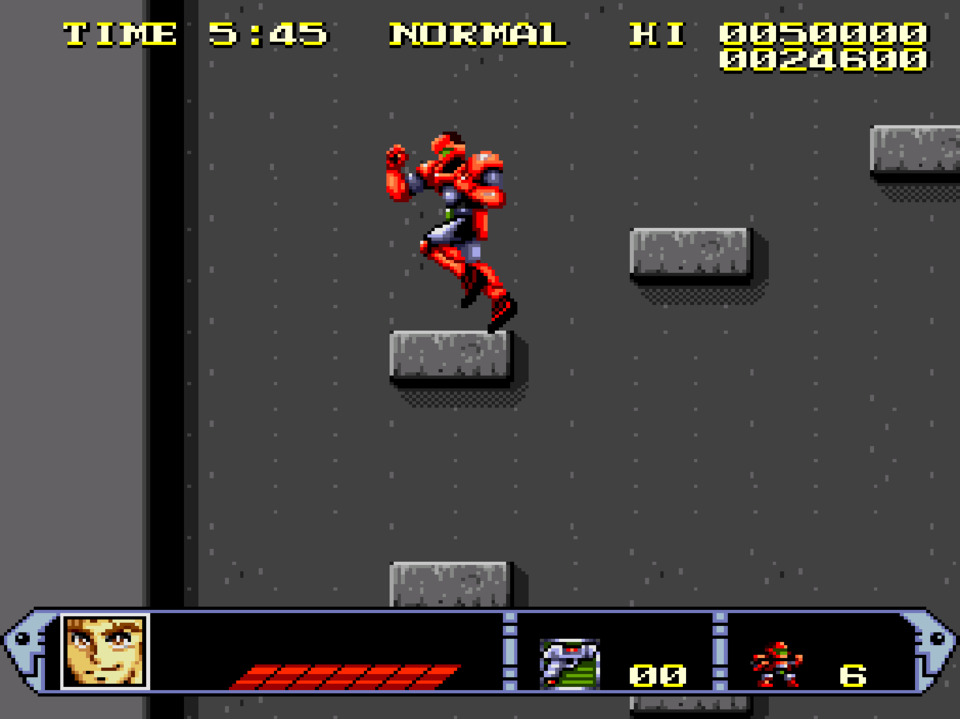
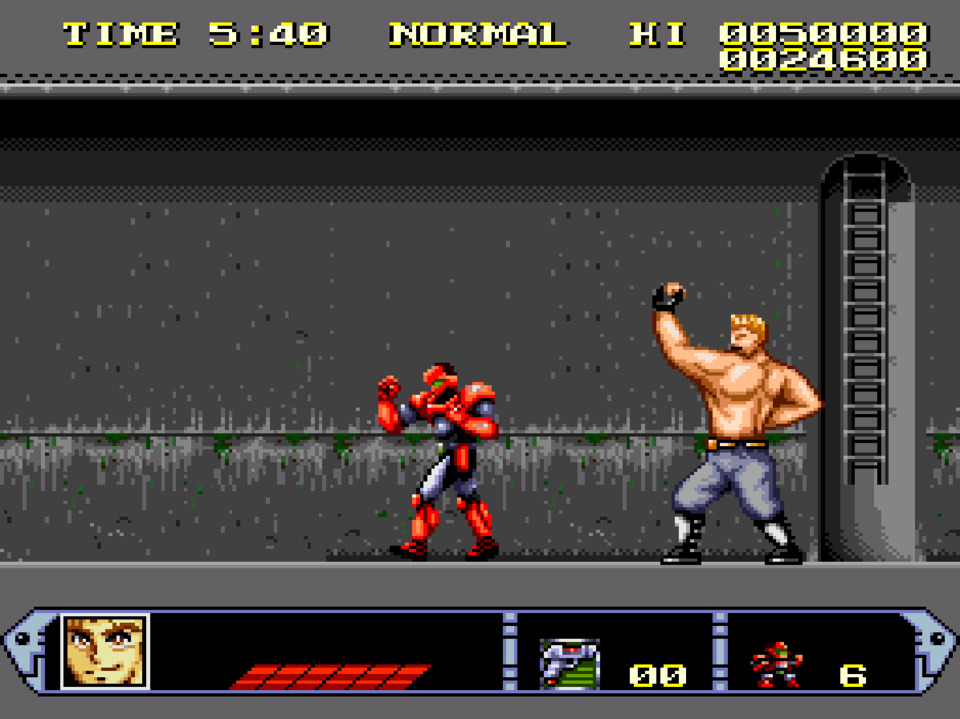
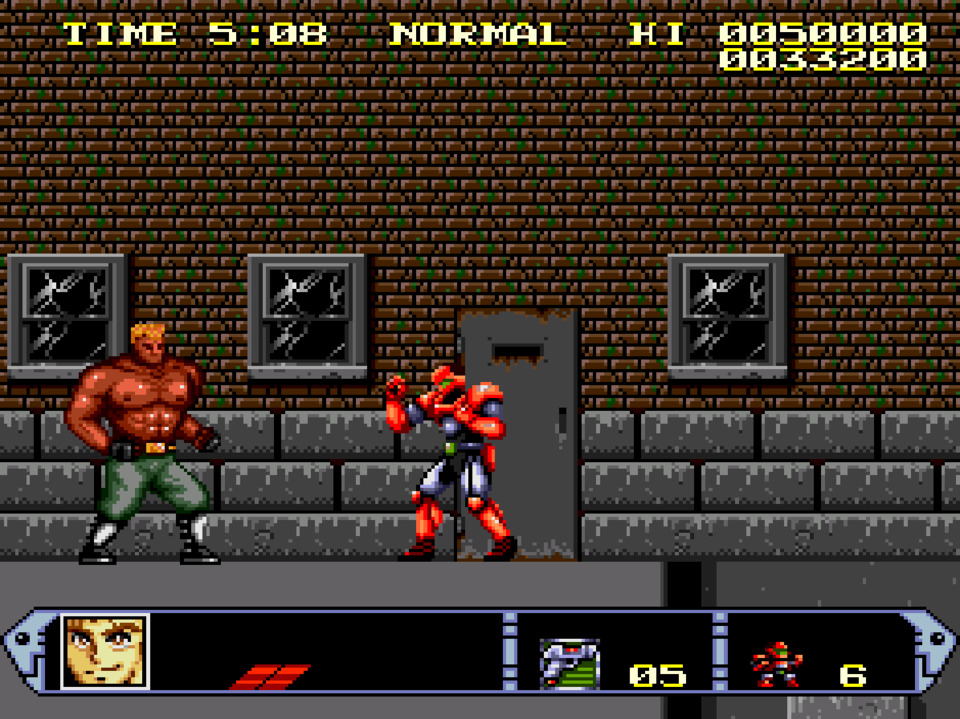
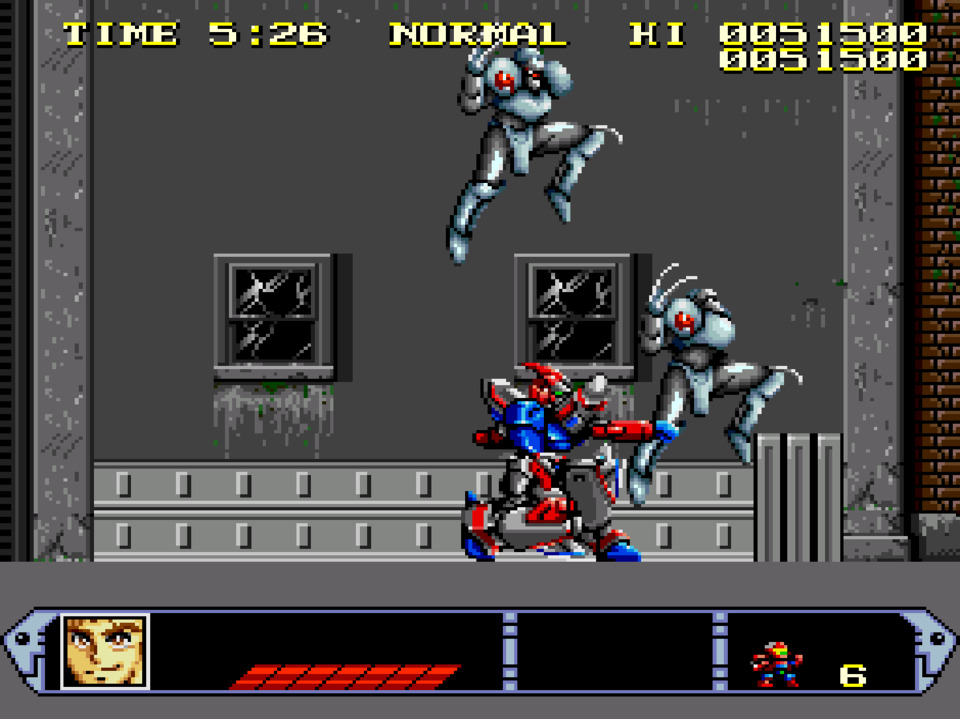
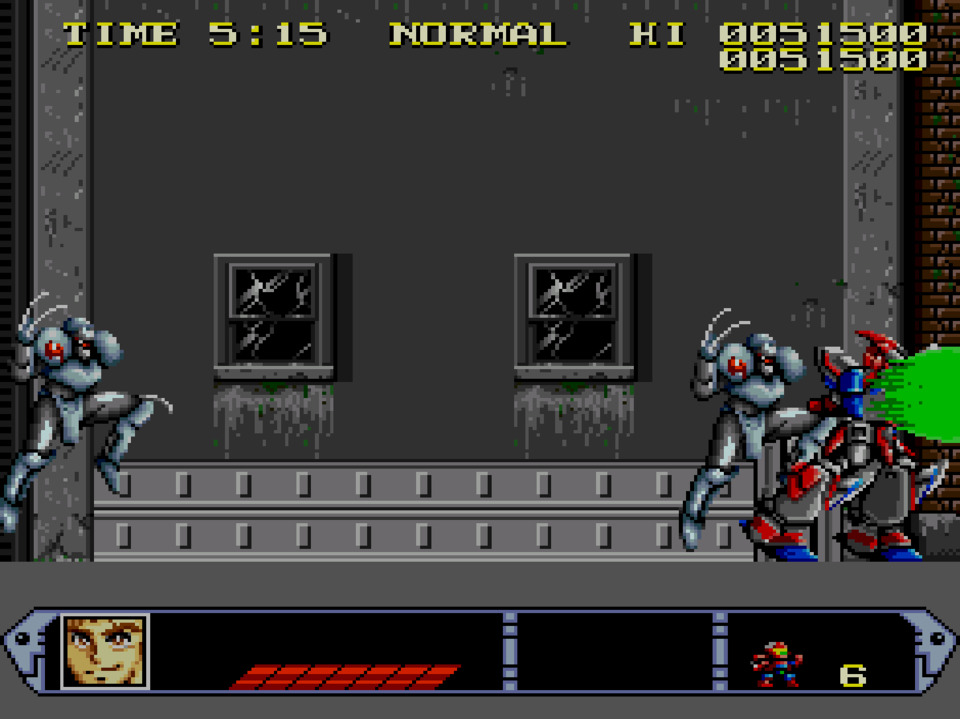
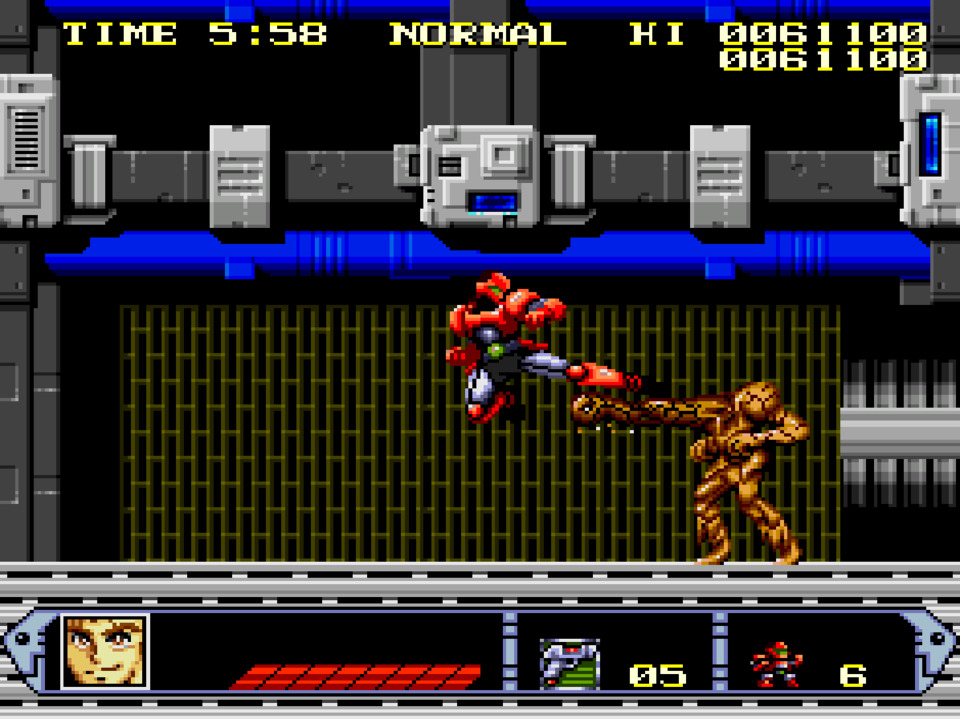
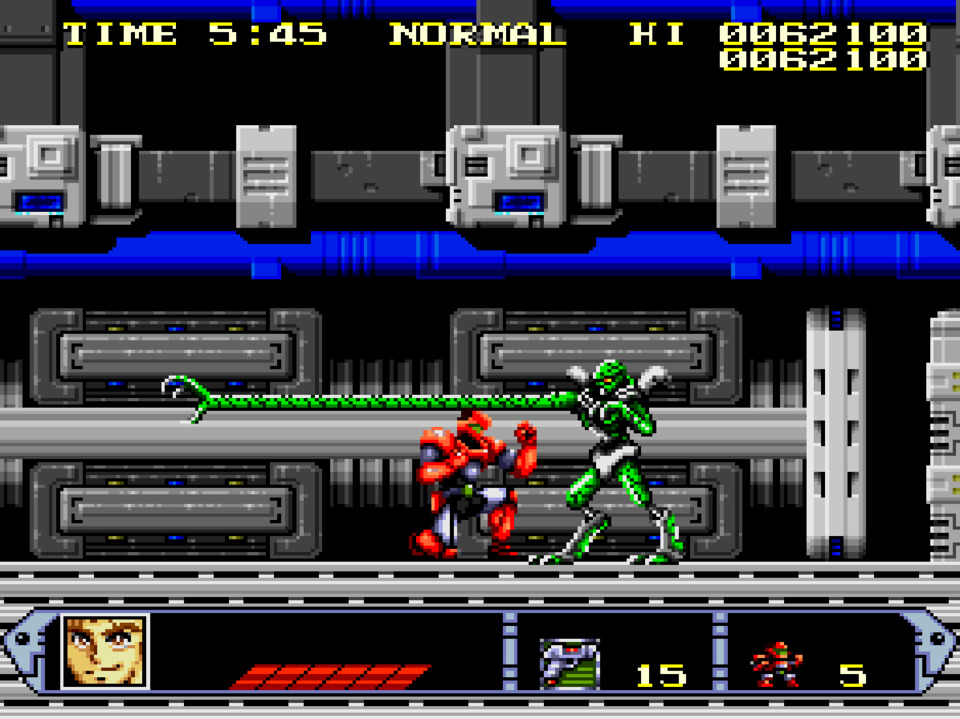
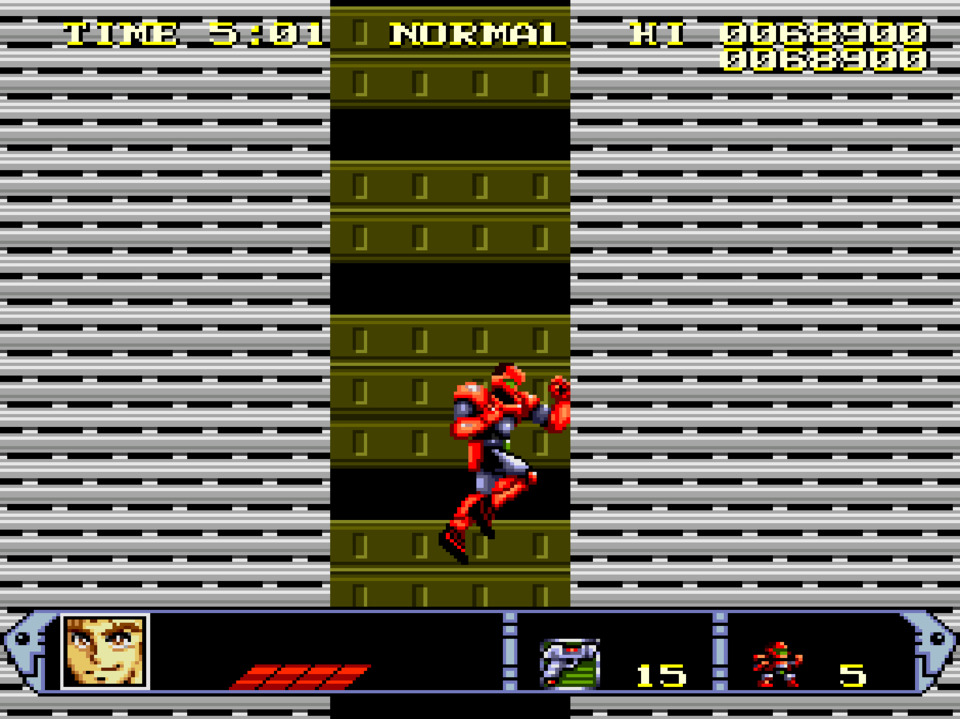
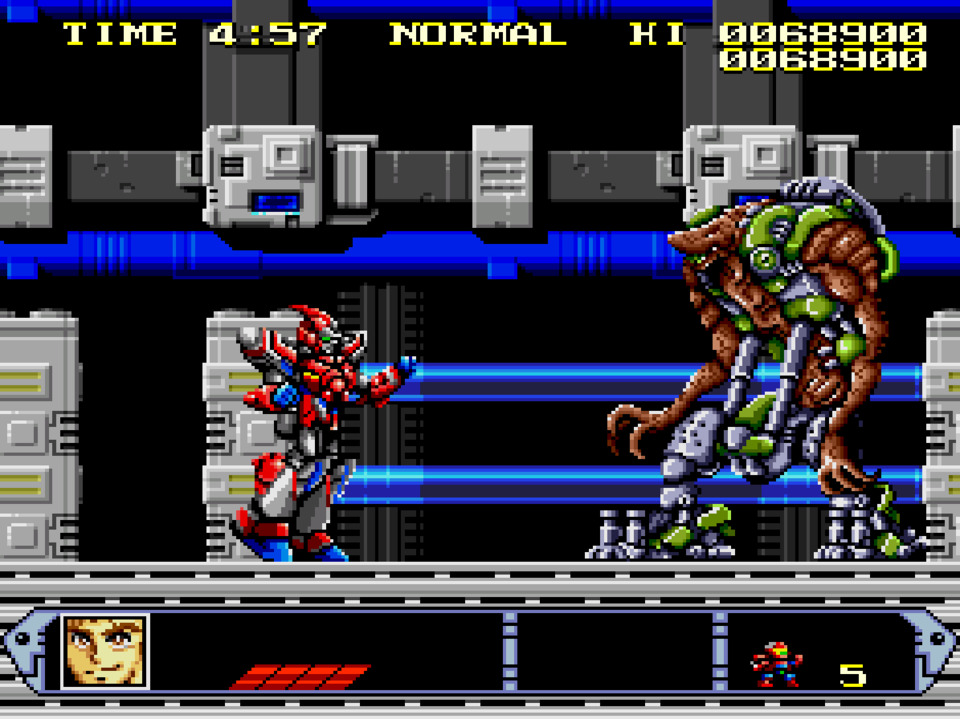
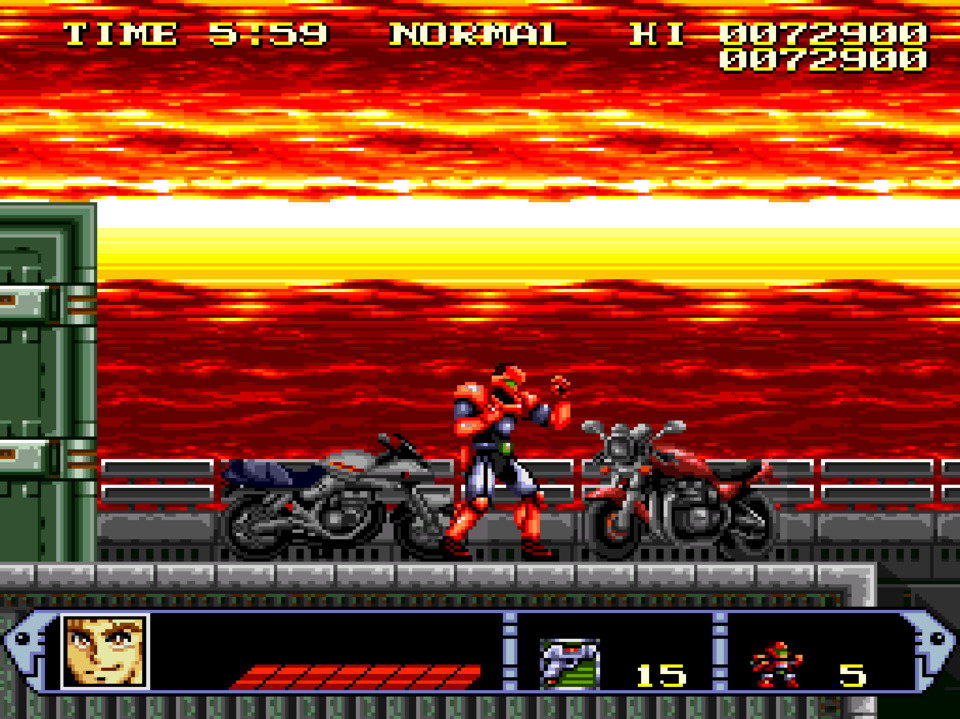
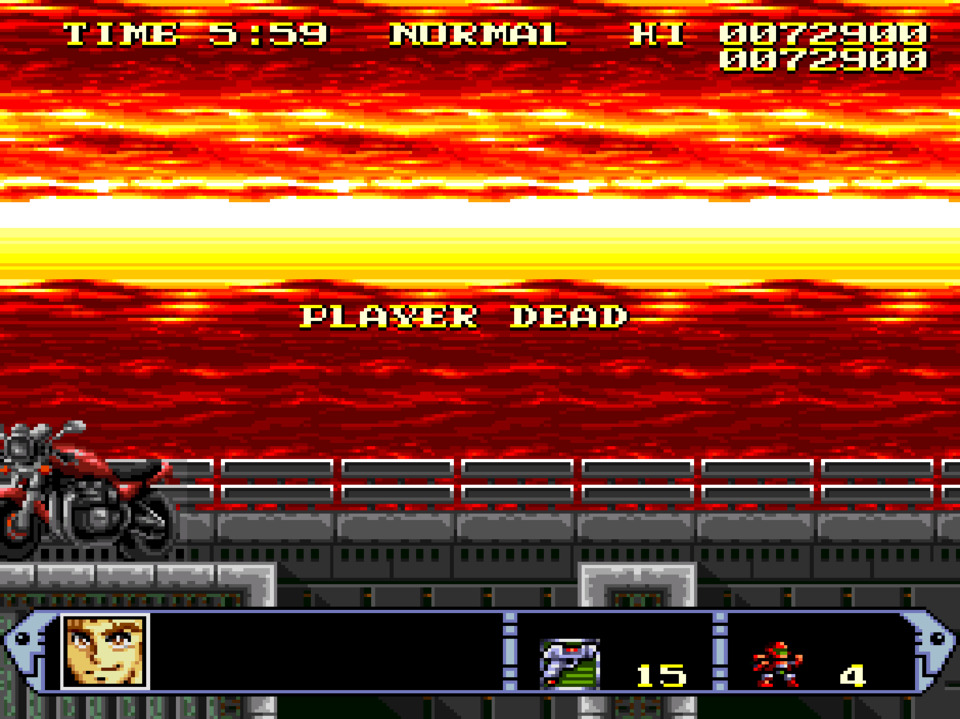
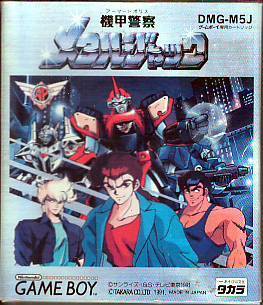

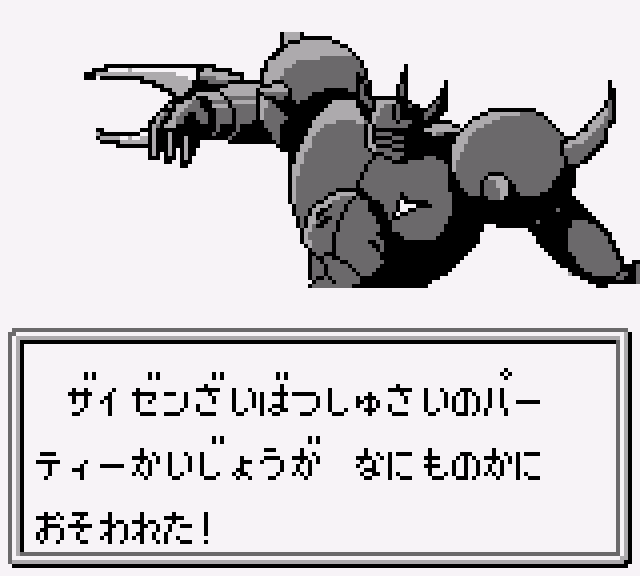
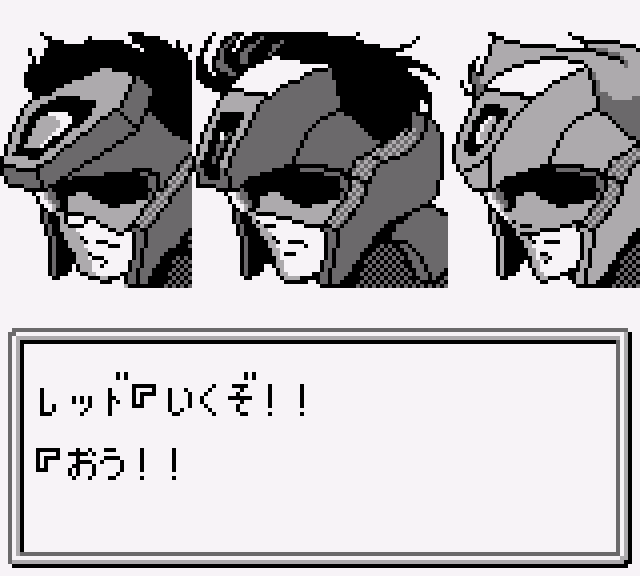


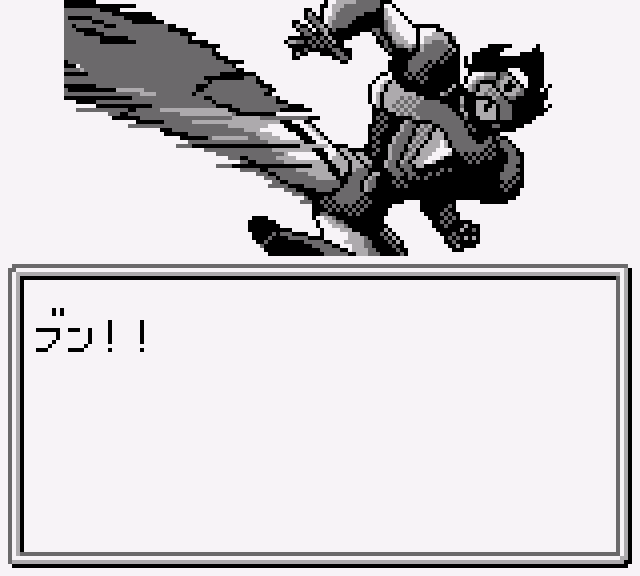


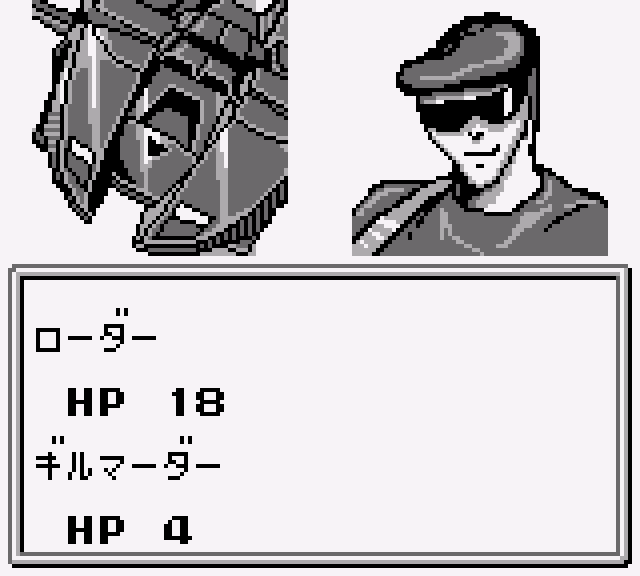
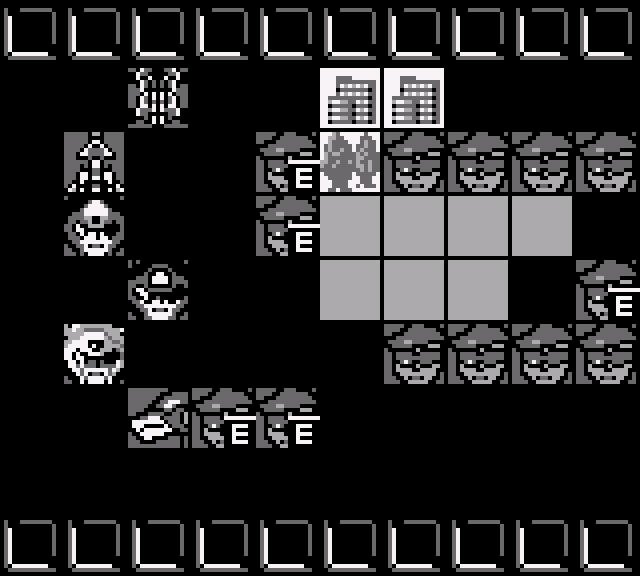

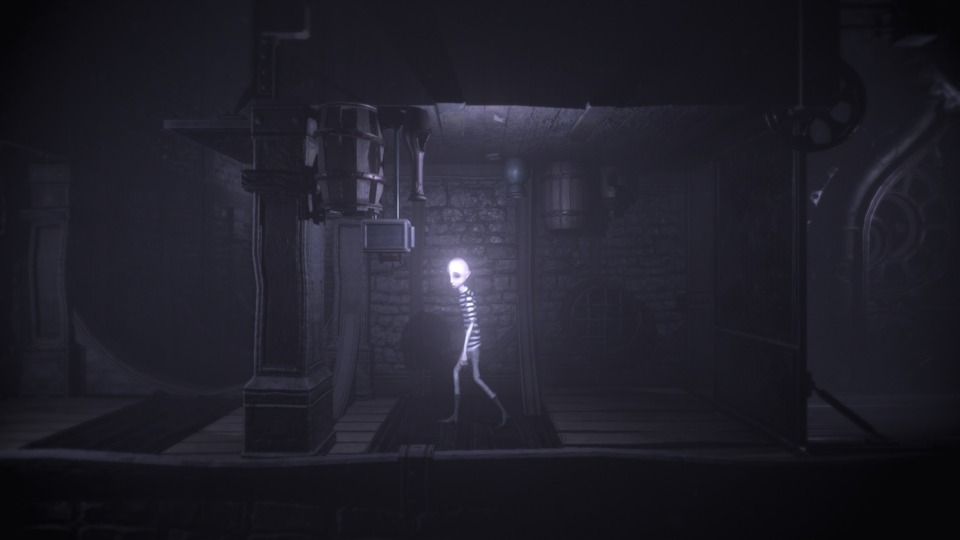
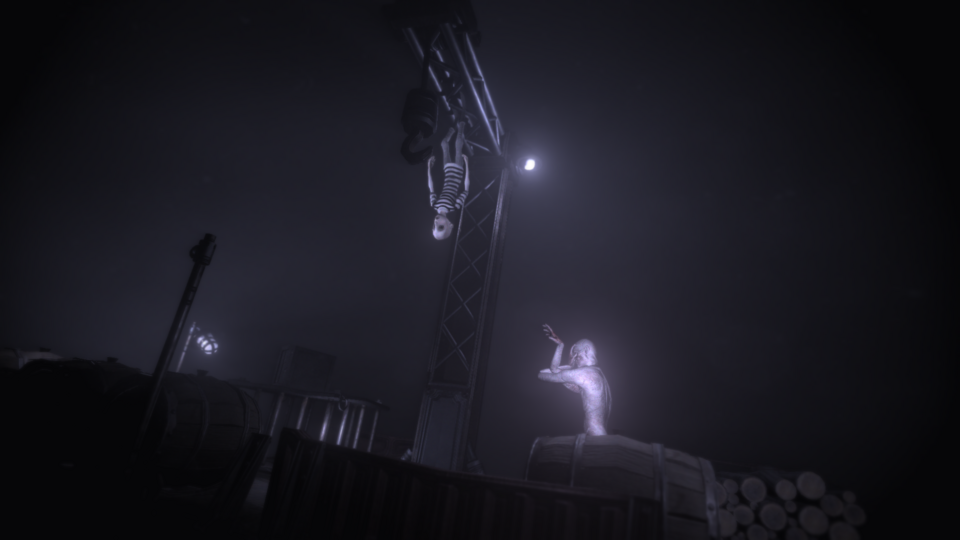
Log in to comment